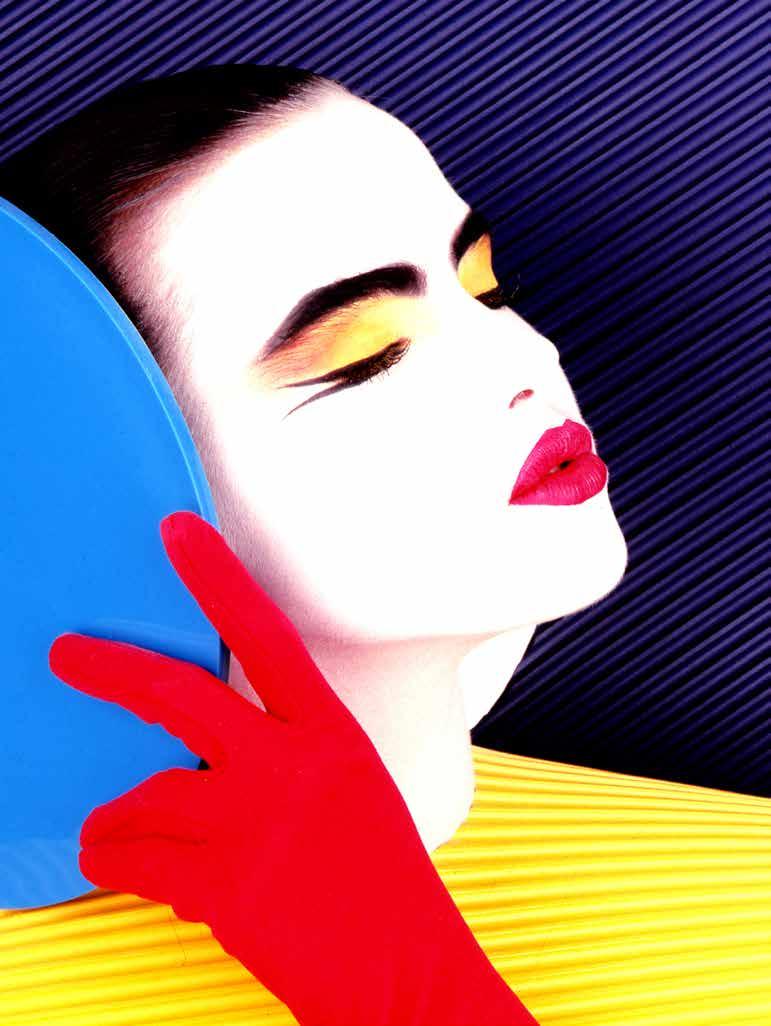


EDITORIAL
It is with great pleasure that I present this edition of the magazine, dedicated to the unique vision and remarkable journey of Klaus Mitteldorf. Our partnership spans more than three decades, built on trust, friendship, and admiration. Since the early days of Paparazzi, I have had the privilege of sharing Klaus’ work and closely following the evolution of his art, which consistently surprises us with its boldness and sensibility.
Over the years, Klaus has explored color, texture, and the female body in his work, creating an impressive body of photographic art that has helped elevate the standards of Brazilian photography.
This year, our collaboration welcomes a new, special chapter. Together, we took part in SP Arte with the launch of the book Klaus Mitteldorf MMXXV and an exhibition at Carcara Galeria, moments that reaffirm both the relevance of his artistic production and the strength of our shared work. The magazine now in your hands offers yet another space to celebrate this trajectory and share with the public the power of Klaus’ gaze, which continues to evolve without ever losing its essence.
I hope each page becomes an opportunity for discovery and for connecting with the intensity of his work. For me, as an editor and long-time partner, it is an honor to open this issue with the certainty that Klaus’ photography remains alive and vibrant.
Carlo Cirenza



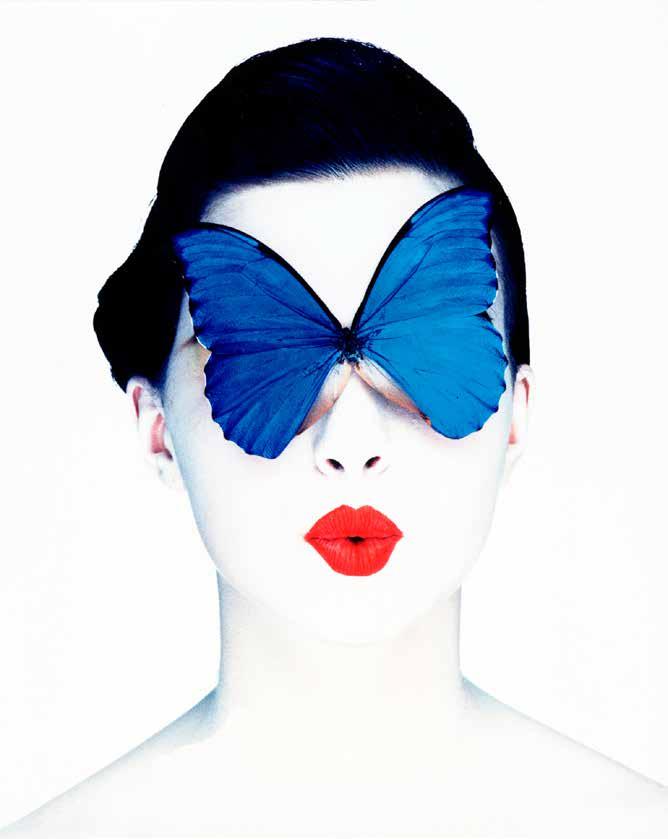

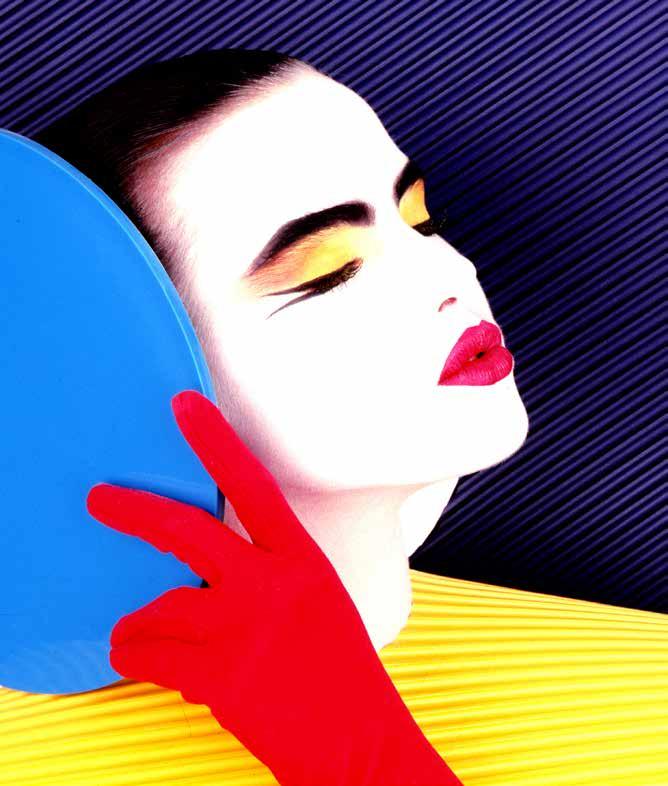
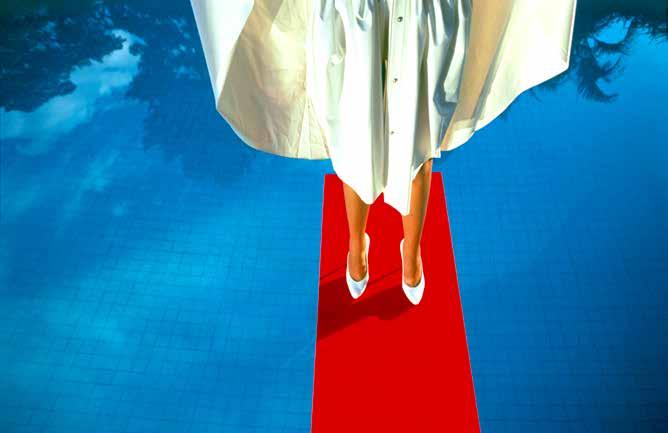
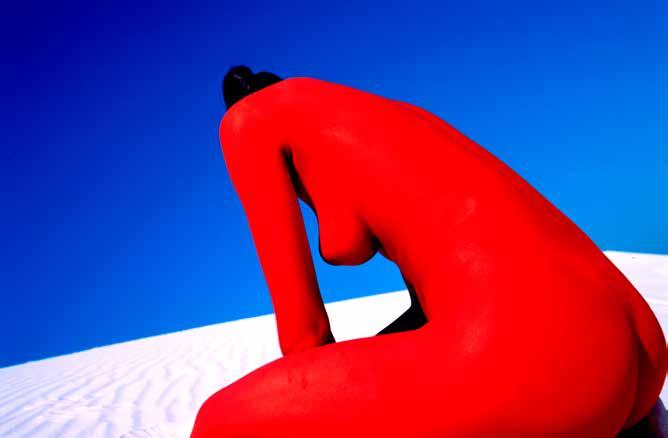
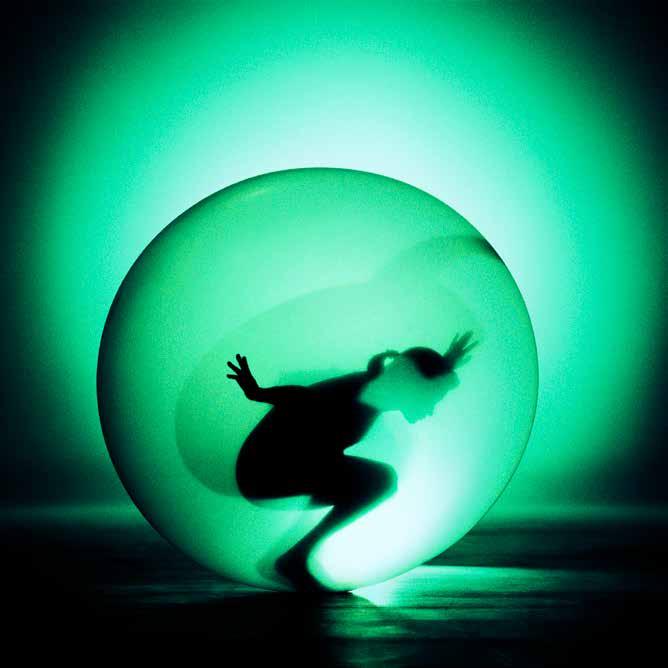
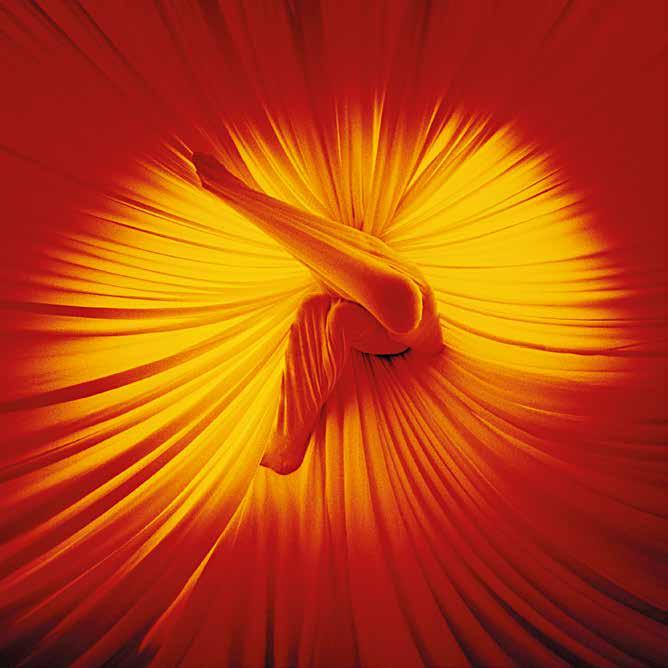


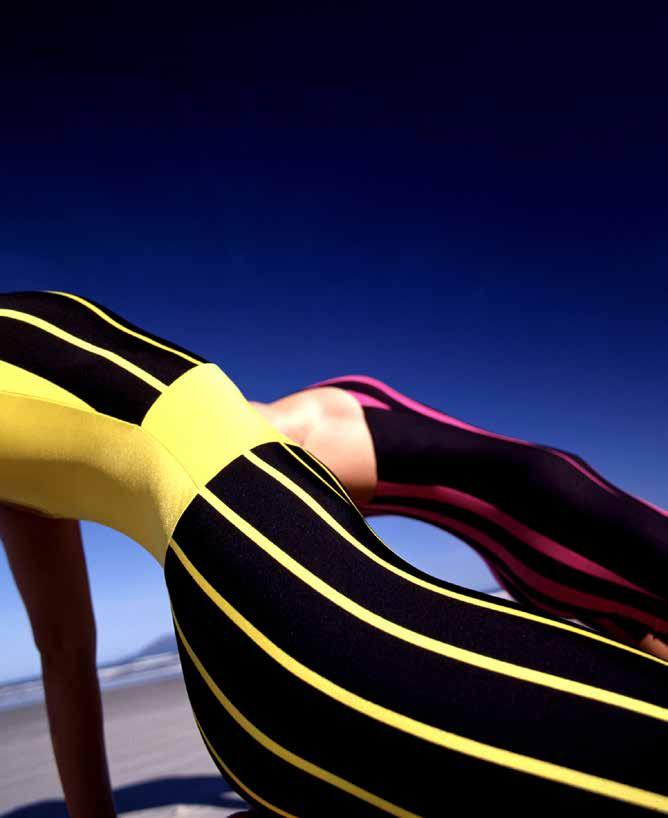

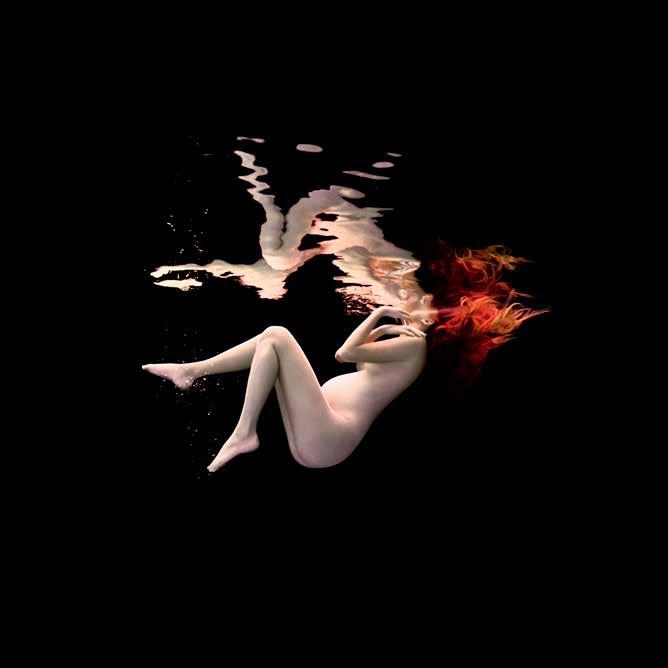
NORAMI
The artist takes many years to discover themself, then just as long to find a personal and original language, then to master it, and still takes a lot of time to discover the technique, the material, and the medium to create his works.
Klaus Mitteldorf chose photography as his means of expression and did so completely. He not only used the modern, technological camera but also the entire possible array of tools: airplanes, helicopters, balloons, cars, motorcycles, bicycles — and he even takes photos on foot.
His photos clearly show that he is a globetrotter, one of the famous Marco Polos of photography. He belongs to the generation of photographers who are disciples of the photographic philosophy pioneered by Look and later Life magazines, now followed by GEO, the German version of Geographic Magazin.
But I think Klaus has two visions that define him as an artist, one of which is his athletic side; the other is his German heritage of great graphic tradition.
Klaus is a graphic artist, and I align myself with this side of him. If he were not a photographer, he would be a graphic designer, painter, sculptor or even a designer. He has a perfect sense of European graphic balance, like the masters Kurt Schwitters, Mondrian, Werner Schreib, or Hans Friederich, who dominate space and content with unique talent and balance. In fact, graphic art has always existed; it was the Germans who discovered it as a great form of artistic expression.
He uses the camera viewfinder like a modulated sheet of paper and frames his elements as a typographer frames his types. He is still possessed by the glamour of models posing on tropical beaches, but I find his elements — static — even more perfect, which, with a natural imbalance, are composed by his photographic talent.
He is an authentic Paulista, like thousands of others: tall
and blond, more like a German from Hamburg or Munich. He is the true product left by immigrants who came from all over the world to this fabulous state of Brazil: São Paulo.
This alone already says a lot, as they are serious, hardworking, and highly talented people. In fact, Klaus represents the new generation of German photographers settled in São Paulo, who left deep marks, always bringing new knowledge and new techniques.
Beyond this origin, Klaus has another quality: his Brazilian side. He is the bohemian Klaus, but not a common bohemian. He is a bohemian soaked in the day, intoxicated by the sun, the blue sea, and the deep skies. He wanders the world in search of a shape or a ray of light, a shadow or a color, without thinking, without earning, without time, without hour, without day, as a true bohemian does.
Klaus’ difference is that he couldn’t care less about this utterly commercial, monetarist, cold, and calculating world. Like any bohemian, he also needs money to buy film, lenses, cameras, pay for trips, and even for a drink now and then, “professionally.”
That is why he accepts commercial work, precisely to have the resources to fly, take his photos, his images soaked in delirious colors, which are intoxicating by the seaside. But, as you will see, Klaus is a very serious bohemian. His photos are never out of focus, nor blurry, and certainly never shaky. They are precise, straight, almost cutting. I believe this is his German, perfectionist side. This beautiful combination of a Brazilian bohemian and a German perfectionist is a perfect cocktail, with the following ingredients: a dose of sky, two doses of sea, a woman, a palm tree, two bananas, a yellow parasol, and a magenta scarf; put it all into the camera, click well, press the shutter, and there emerges a Klaus Mitteldorf.
Francesc Petit
Norami (1989)


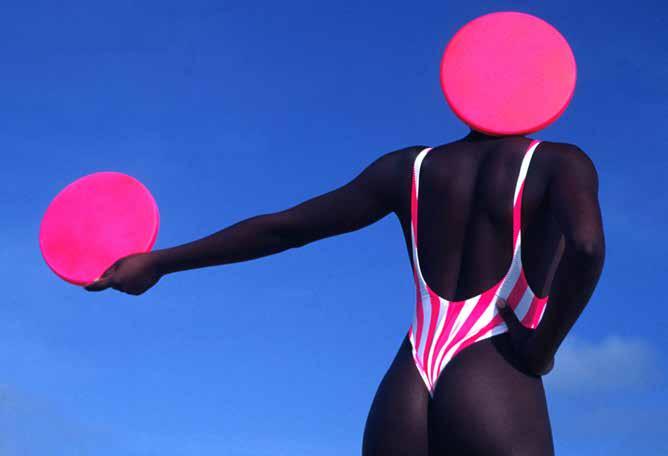
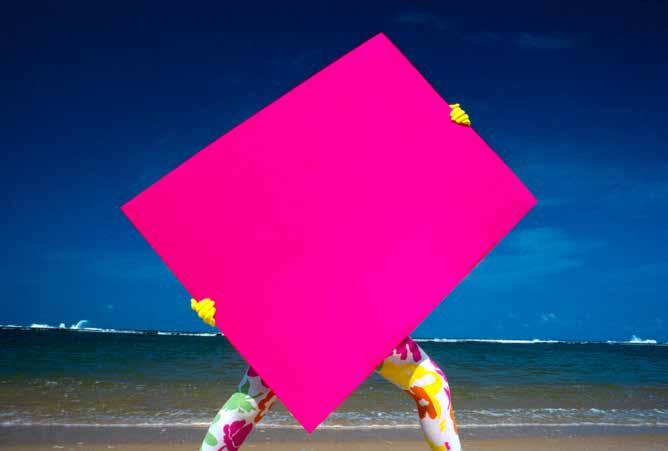
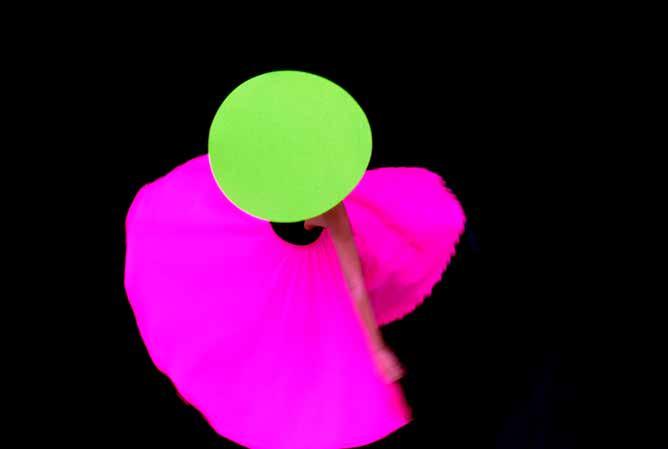
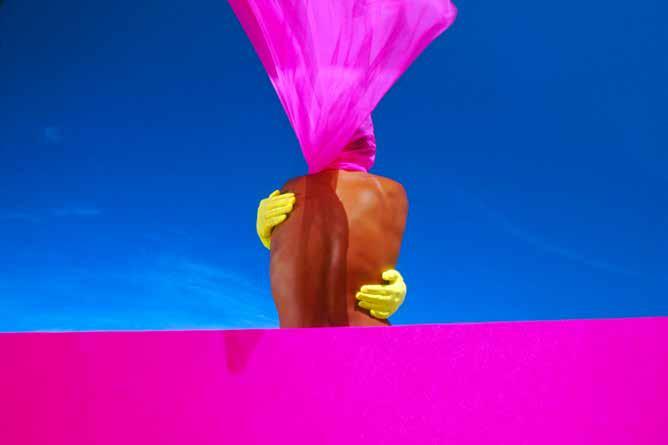
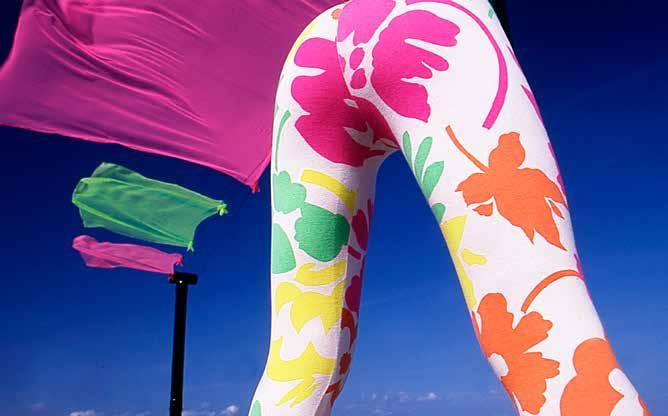

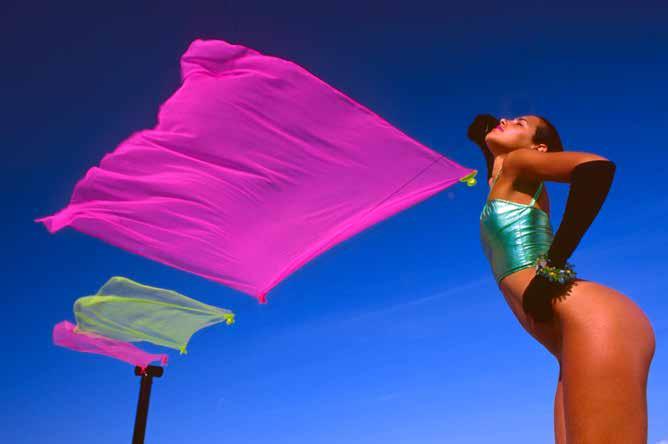

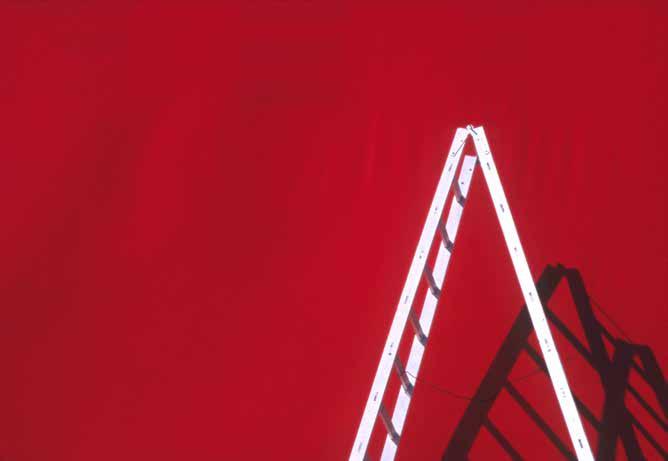


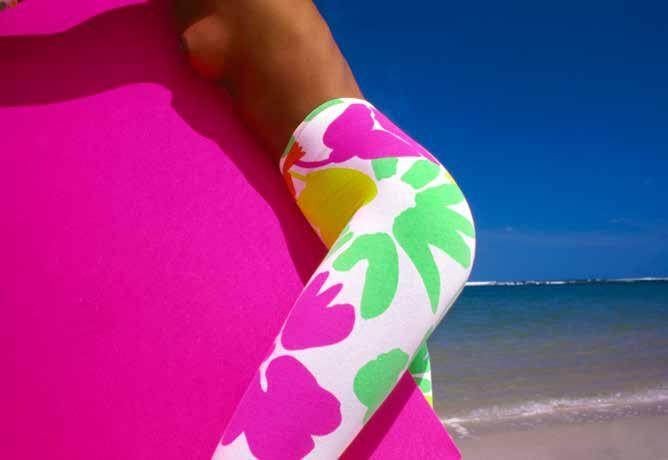
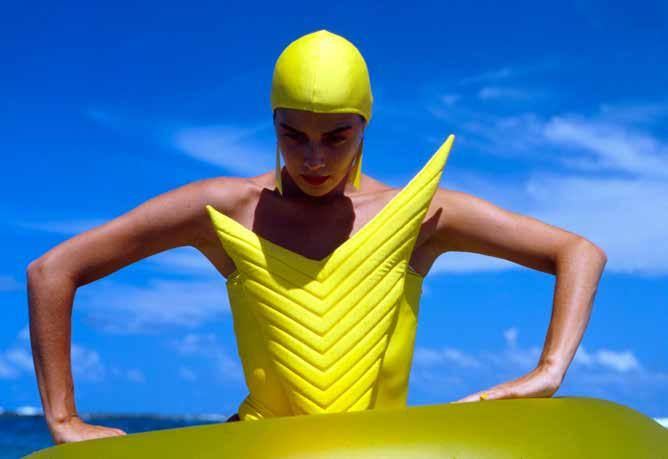

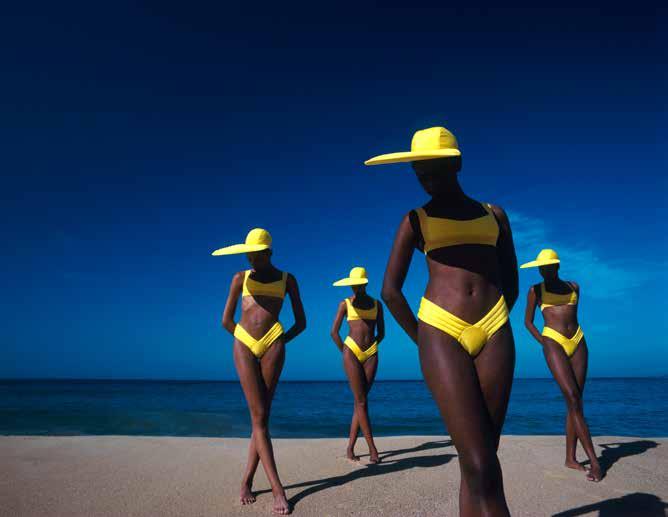
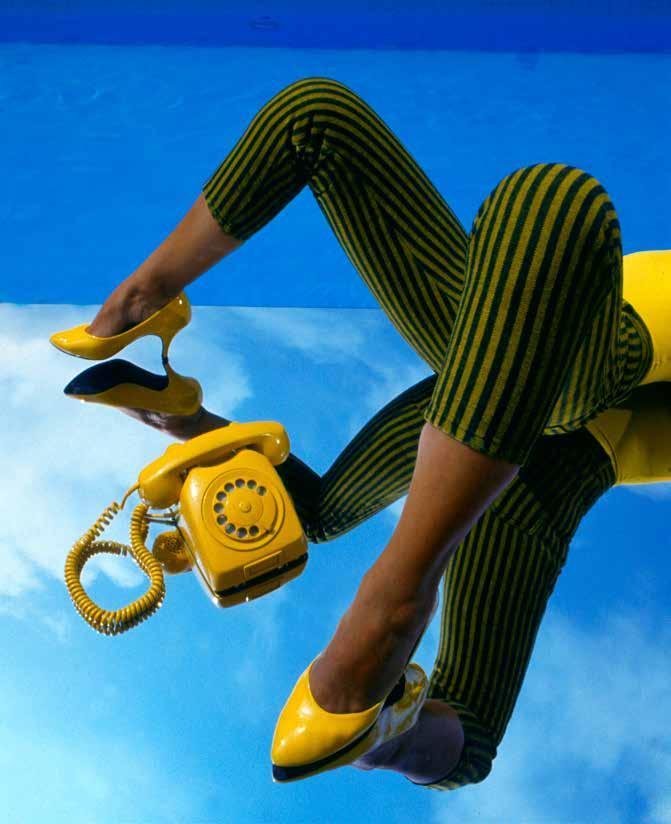
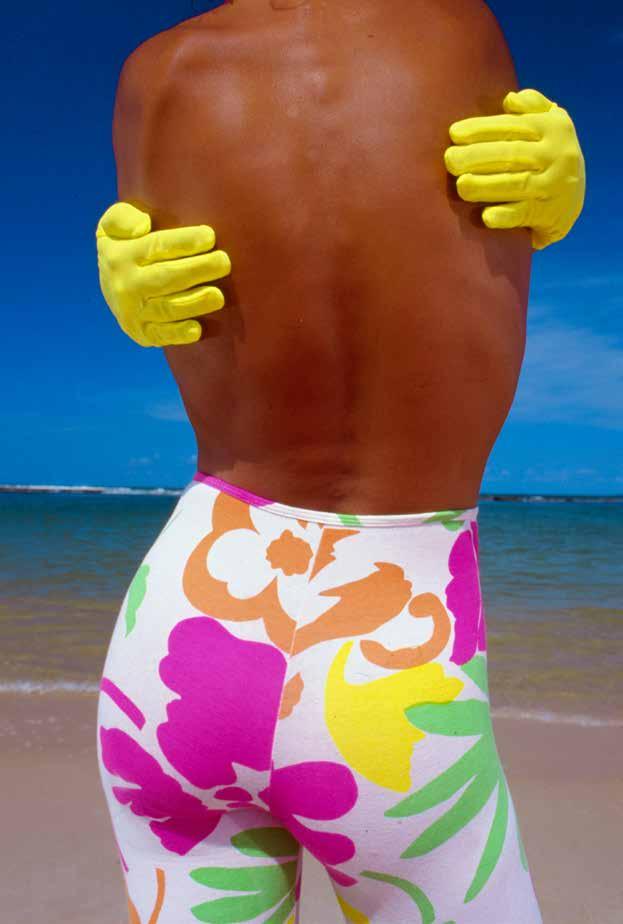
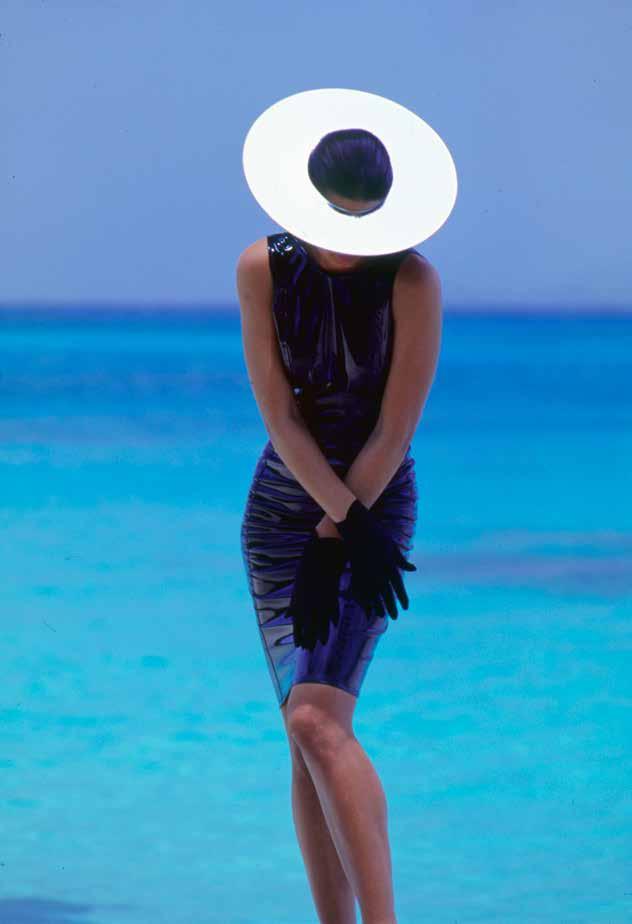
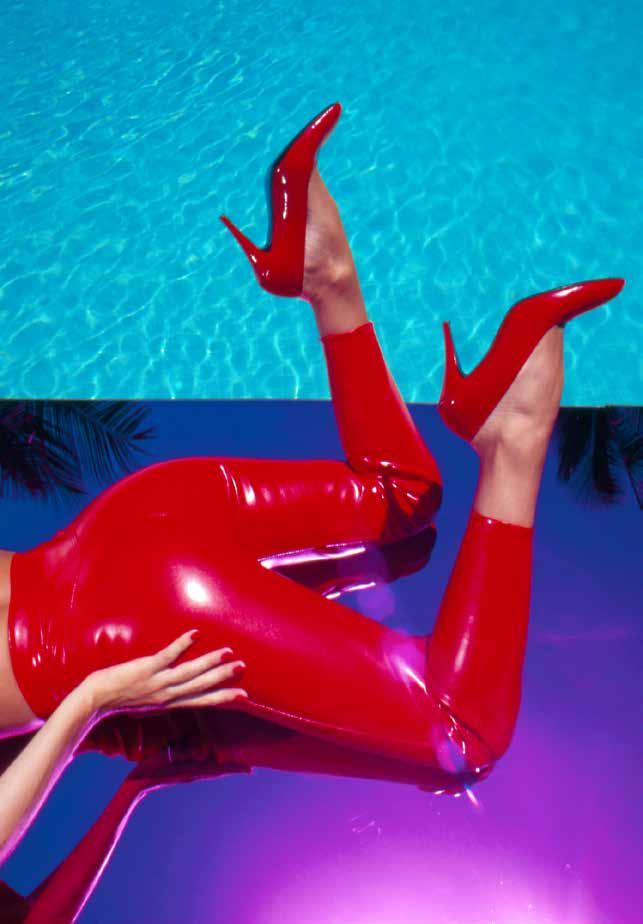
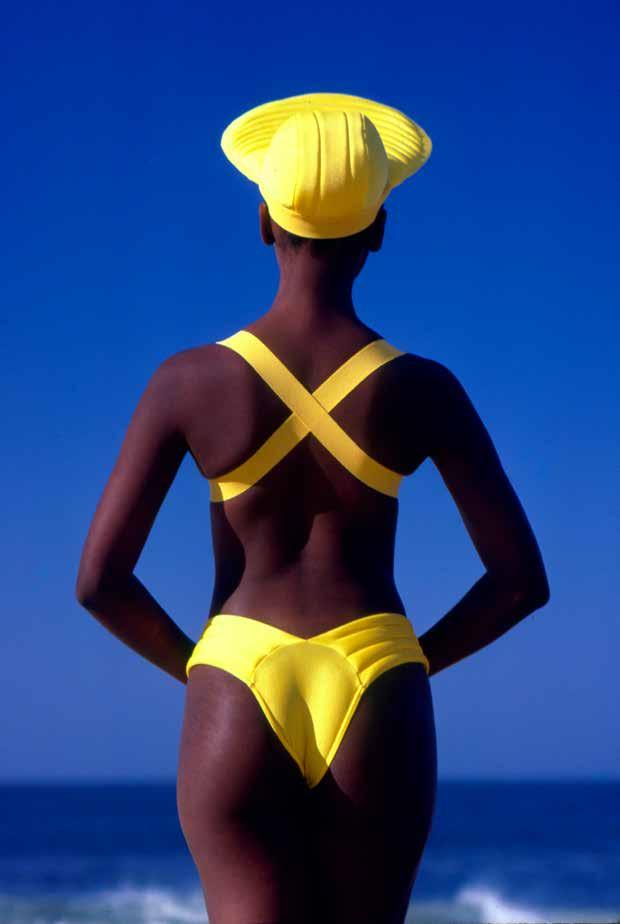
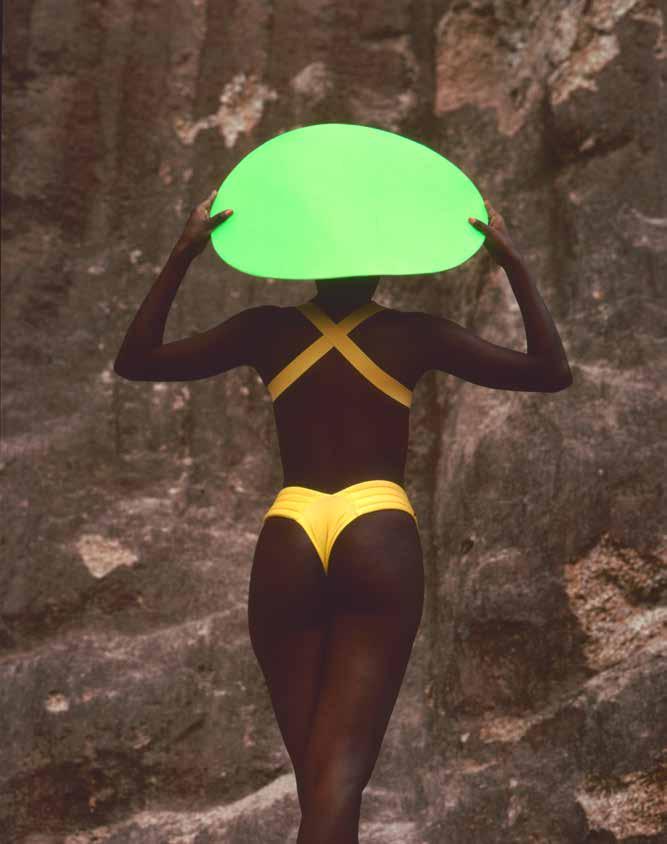

The Last Day of Spring
It all began with a bittersweet fragrance that filled the air. Then we were on the lookout. And soon they came, many of them, more than many. Like shadows, only of light. Amazons, passionately ardent – the females from somewhere.
The closer they came, the stronger grew the perfume; inebriated, we danced blindly among ourselves.
They didn’t want much, not even Power. In their otter fur bags – they Said – they carried old phantoms o four unconscious. It was this that scared us; it was that bewitched us. Supreme irony. It was with our own demons that the Amazons subjugated.
And when there was nothing more to do, because we had neither the strength nor the Will – and we were by then pure instinct – we gave ourselves up to giving them pleasure. It was in this way that they came once, twice and three times.
After the fourth time, we could no longer stand the Idea of waiting. We ran into the Forest, scaled the dunes, dived into the sea, looking for any sign f their arrival. And when the first fragrance was felt in the air, we started to howl. It was witchcraft. It was heat. Then we ran for our nests and pretended to be asleep.
The Amazons no longer needed to brandish their bags. We were already a conquered people. Now it was only a question f choosing the hammock, touching skins and enjoying the pleasure. When they went away, we would GO back to our normal daily life.
With the feeling that something very new was germinating both in their and our bellies.
Valdir Zwetsch
Last Day of Spring - Norami (1989)


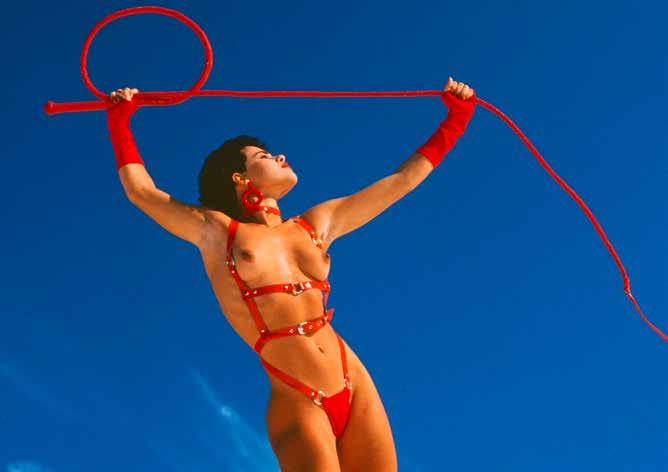
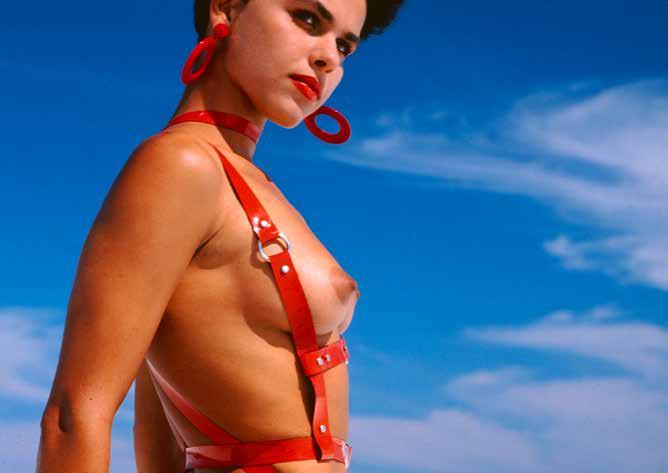
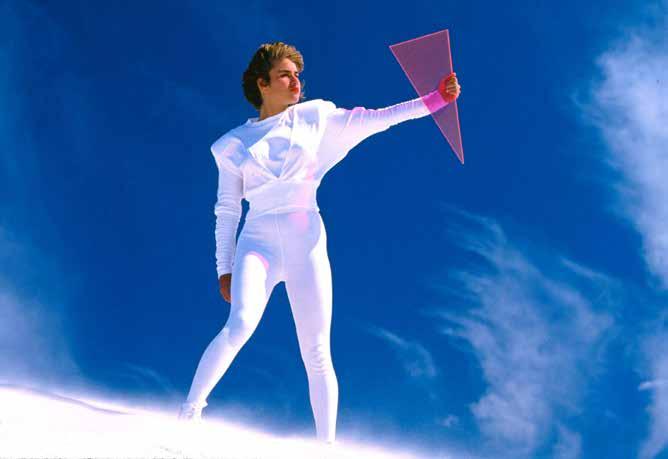

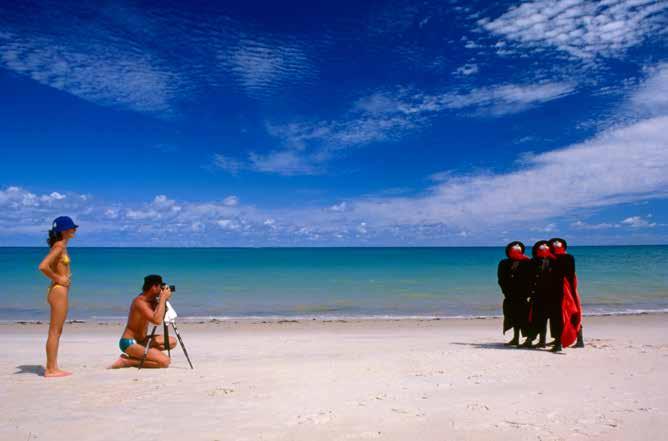
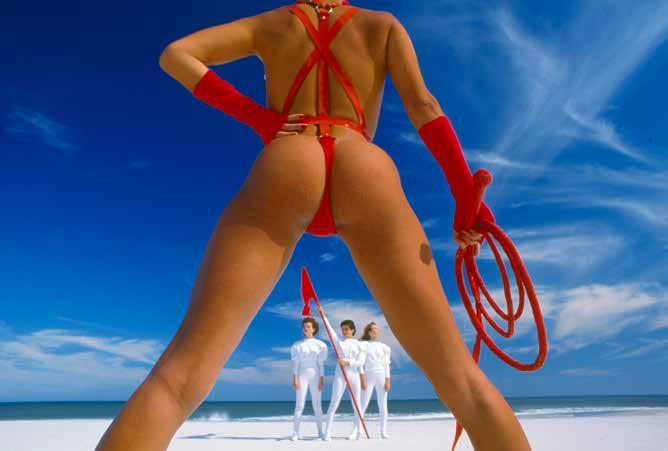
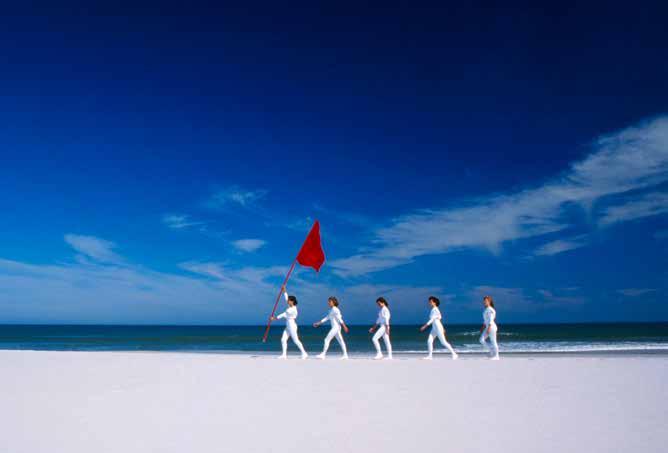
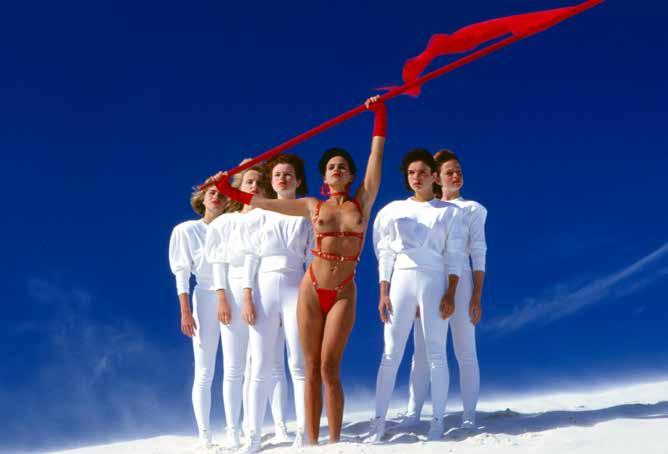
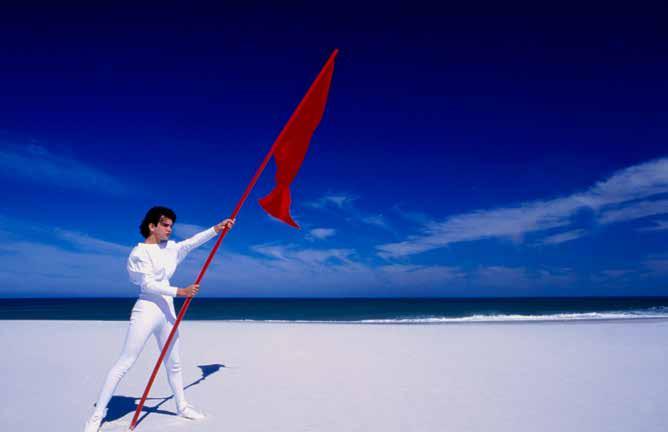
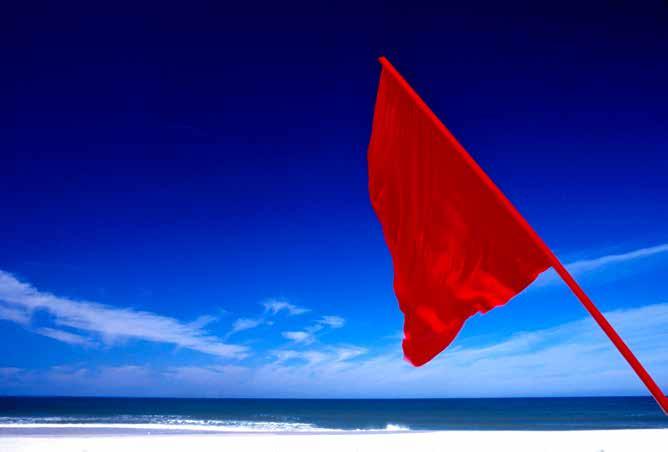
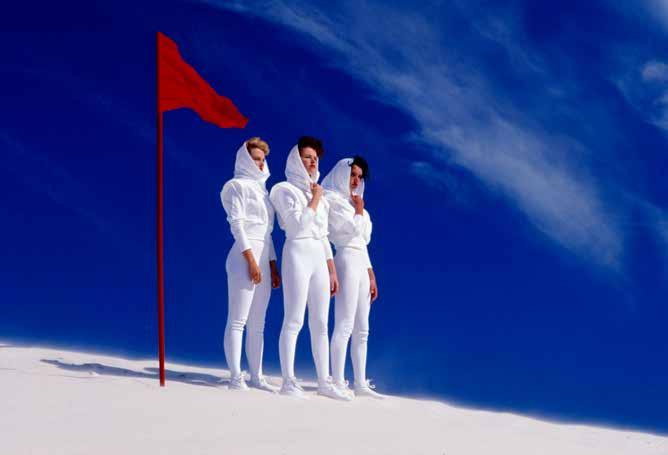


A MATTER OF SENSUALITY
Lilo Wirth: Klaus Mitteldorf, how did it all start?
Klaus Mitteldorf: When I was twelve, I got my first camera. I found it immediately very easy to capture things with it and thus to make the world accessible to me.
L. W.: How did it go on from there - the life, the picture-taking?
K. M.: I tried to change the world a bit by means of photography. But it took me a long time to realize that it really worked. Then I was already 25. I was born in 1953. It wasn’t until 1978 that I really became serious about photography. Because I also had started to study architecture; that was in 1975. At that time photography was a side-line; I took a lot of photos at the beach, because I was a surfer as well.
L. W.: Exactly. You are a Brazilian ...
K. M.: I live in Sao Paulo. That is where I was born and where I grew up. That is where I spent the greatest part of my life. I travel a lot; I have been everywhere. And when I finished my architectural studies in 1978, I started to work as a photojournalist in various fields. In that way I photographed all kinds of things: shows and architecture, sports and many other things. I never worked as an architect, but my architectural studies helped me very much. Eventually they facilitated my final decision to be an artist. Because that had always been my problem up to then: I never knew what would become of me, because I always liked so many different things.
L. W.: Thus, photography rescued you from the dilemma of the multi-talented person?
K. M.: Yes, in a way. Because for a certain time I also studied in Hamburg. When I had finished school in Brazil, I went to Hamburg to prepare for one year for the German “abitur”, the school leaving examination qualifying for university entrance. After that I attended lectures on oceanography at the university. Because the ocean, the sea, has always fascinated me. In most
of my works the sea is always present. My hometown, Sao Paulo, is not directly situated by the sea, but not far from it. I always had a close relation to the sea; I love it and I try to keep near it. Five times I have already visited Hawaii; if you count all my stays I have spent there at least a whole year. Everywhere I was, be it Africa, Chile or Bali, there was always the sea. All these travels were almost automatically connected to photographing. The camera seems to be a part of me. And everything is interesting.
L. W.: But yet you want to change - or improve - the world by photographic means?
K. M.: I wouldn’t mind improving it, if it were possible. But what I really try to do is to show in the photographs my own way of seeing. Because I have a very personal way of representing things. And thus, it is unavoidable that I change them a bit because I want to represent them in such a way as my eyes would like to see them. This does not mean that I don’t like the world; I even find it very attractive. I am even fascinated by things that others don’t like. Often, I see very interesting details, little things, that others don’t notice. Before, in the first phase of my life as a photographer, I mainly documented things. That was in the initial four, five years. At that time, I took pictures of many things pertaining to nature and to human beings. I was looking for the aesthetical in them and thus formed my own language.
L. W.: How would you define this language?
K. M.: At the moment it consists of very graphic things. Certainly, that is due to the influence of my architectural studies, which helped me to find myself. The first certainty in my life was that I was very good at composing. In this way very graphic things came into existence. The compositions were very strong, with much color. And even in the black and white photos of this series color is still recognizable.
L. W.: How do you represent color in black and white?
K. M.: It is a kind of black and white which shows a certain contrast, an inexistent coloration, yet still in some way recognizable. I use different shades of grey, black and white. Especially in the works shown here there is a little bit of everything I have ever done.
The pictures of this series were created in the years 1990 and 1991. They were all taken in Brasil, in Sao Paulo. Not all at the same time, but in the course of these two years in five, six stages, in which I always looked for new interpretations. In this way a regular story emerged.
In 1989 I had published a book in Switzerland. It showed exactly what I had developed in the past ten years as my own style, very graphic, very colorful works. Up to then I had felt absolutely comfortable with this kind of photography, but after the book had been published and this work was finished in my life, I looked for new elements.
L. W.: So this series defines an intermediate phase?
K. W.: It is a phase of change. It lasted about from 1988 to 1992. During this time I tried out and looked for new things. With this work I discovered a new way. Thus, it became very rich and marked the beginning of a new development.
L. W.: Might it be called an experimental work?
K. W.: Yes, I experimented a great deal with women, with elements. Women are always present in my work, as is the sea, or the water. There always has to be an additional element. I left statics, which I had preferred earlier, behind me. I abandoned strict composition and tried to incorporate motion into the pictures, and more expression. That was very important to me.
L. W.: Are these exclusively pictures of women? Are there no men among them?
K. M.: Since my early beginnings I never photographed men, always just women. Women are the beings I need to express myself. It is hard to say why this should be so; I don’t know it to this present day. But somehow they inspire me, and I
have a very good relationship with women. Therefore, it is easy for me to pass my thoughts on to them. They understand me, and they are able to interpret the things I want to show.
L. W.: Is it not a matter of something else as well?
K. M.: It is a matter of sensuality. But certainly not of eroticism. Sometimes, especially here in Germany, people get me wrong on this point. I am not concerned with eroticism, but with something much more subtle. Most people might not even see it. Eroticism may show up - at first glance -, but behind it there is something quite different. An artist cannot easily express in words what he sees.
L. W.: Or else he would have become a poet or a writer...
K. M.: However, the medium of photography makes it very easy for me to express my feelings. This series contains in different forms many things that I experienced during the time of their coming into being. That extends from the aesthetical to the most subtle emotions. If you look at the pictures long enough, you will by and by discover things that are not so apparent. The pictures are less superficial than one might think.
L. W.: Is it not also very much a matter of who you take the picture of?
K. M.: Yes, certainly. Most of the persons shown here are women I know. One is a dancer, another one is an actress, and still another one might happen to be a model. Yet I am not looking for models, but for women that are in some way connected to the work I am just doing. They have to have a certain contact to it. And since here I am very much concerned about expression, about physical expression and about interpretation, I needed quite special persons who were suited to it. They were always the same three, four girls with whom I repeated during those two years the same things over and over again and added new ones.
L. W.: Was there something like a plan?
K. M.: This is no work to be done in one or two days. I had no strict layout in my head. In fact, I had nothing in particular
in my head, just every time new stories. I knew I wanted to interpret something with these shawls and these bodies. Then I experimented a lot, and I also let myself be inspired. For instance, by Rodin and Camille Claudel. These two kind of thrilled me at the time. Aesthetically, they were very much on my mind: I saw an exhibition and I read books about them. But though they inspired me, one should not draw parallels.
L. W.: Did you use the scarfs to emphasize the sculptural aspect?
K. M.: Exactly. Not only for emphasis, but also to create new forms and to narrate stories.
L. W.: Isn’t that a rather abstract approach?
K. M.: Yes, indeed. But there are all kinds of different stories. There is, for instance, something medieval or something mythological. I explored various fields. Then there are these big tube-like elements, which I also use for interpretation. One picture, for instance, is called “Anna and the Serpent”, another one “Anna and the Butterfly”.
L. W.: I notice that you tend to transform women into animal creatures. What exactly does that mean?
K. W.: Personally, I have no idea. As I told you, I have no layout, no plan. I arrange a photo-session; there is everything I want, gathered in one place: the women, the landscape, the elements. And then I just let it flow, without giving it too much thought. It just wells out of me, as nature intends. How and why this happens I don’t know to this day. I haven’t yet found any explanation for it.
L. W.: Couldn’t it be the privilege of the photographer that he doesn’t have to explain? In contrast to those contemporary painters, sculptors and object artists who are completely detached from the object and thus have to rely on a theoretical framework. Maybe that is something one doesn’t need so much as a photographer?
K. M.: Yes; but in my case one still does. Because it is exactly the same: I have to combine these elements. I am
just reading a book by Wim Wenders about photography; its title is “Once”. There he writes about how photography really just happens once, at this one and very moment. Basically, he continues, there are two pictures: the one the photographer is taking and seeing at this very moment, but also the photograph as his self-portrait behind the camera. What he represents at this very moment when he presses the shutter release button.
Lilo Wirth
International Nude Photography Magazine
Divas (1991)

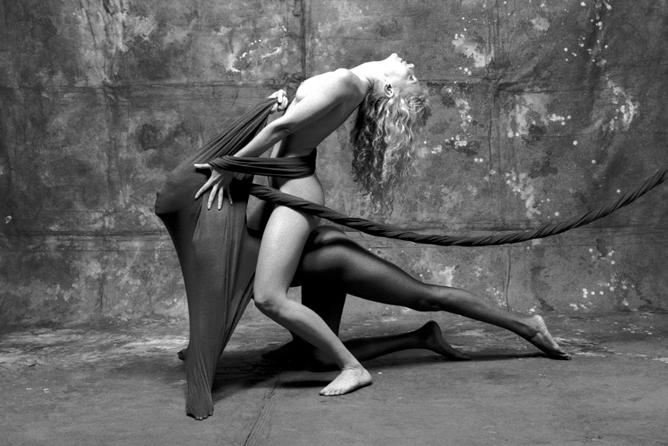
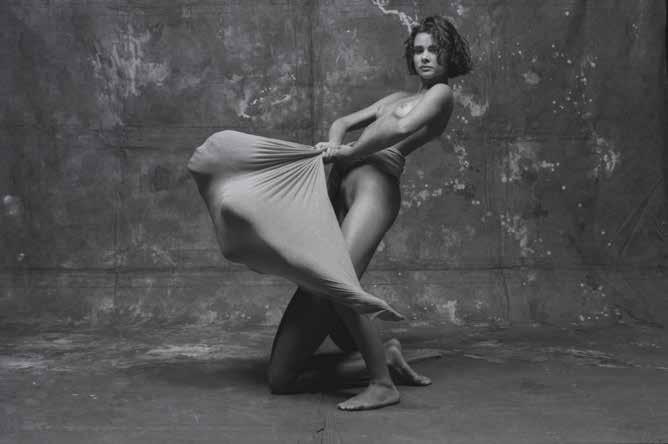
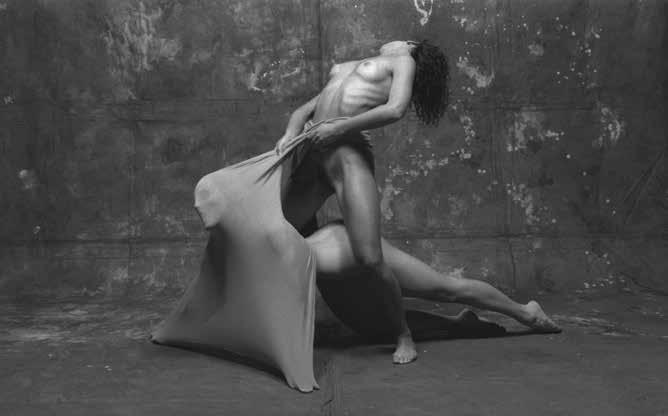


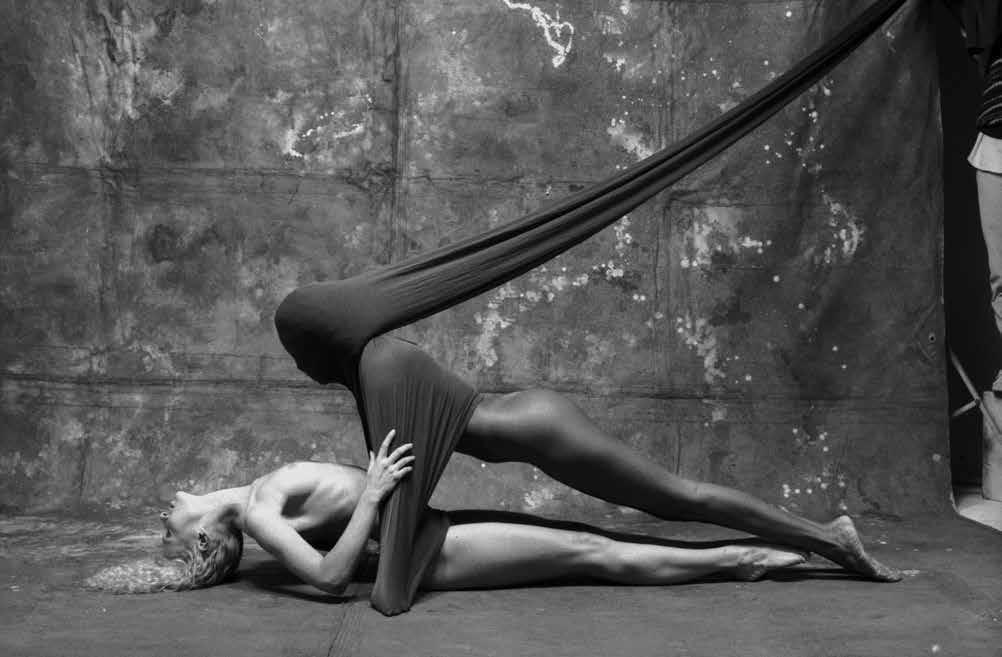
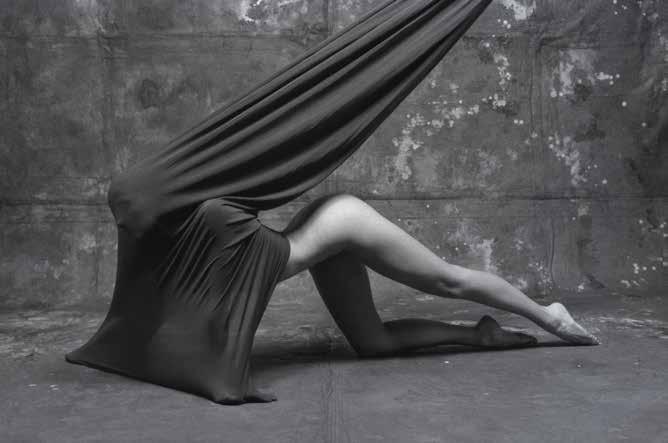
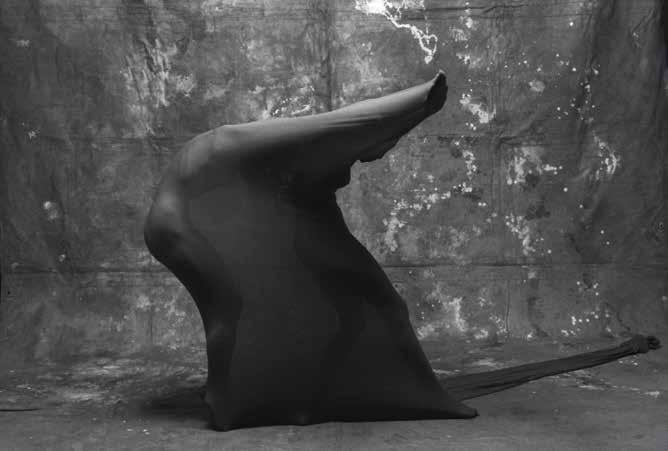
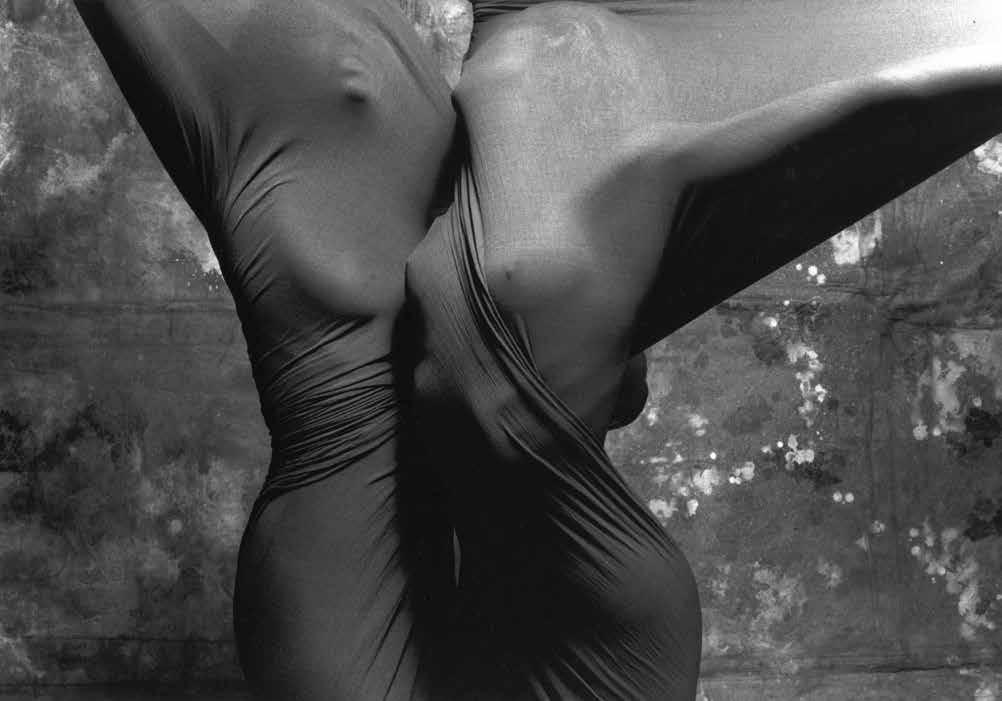
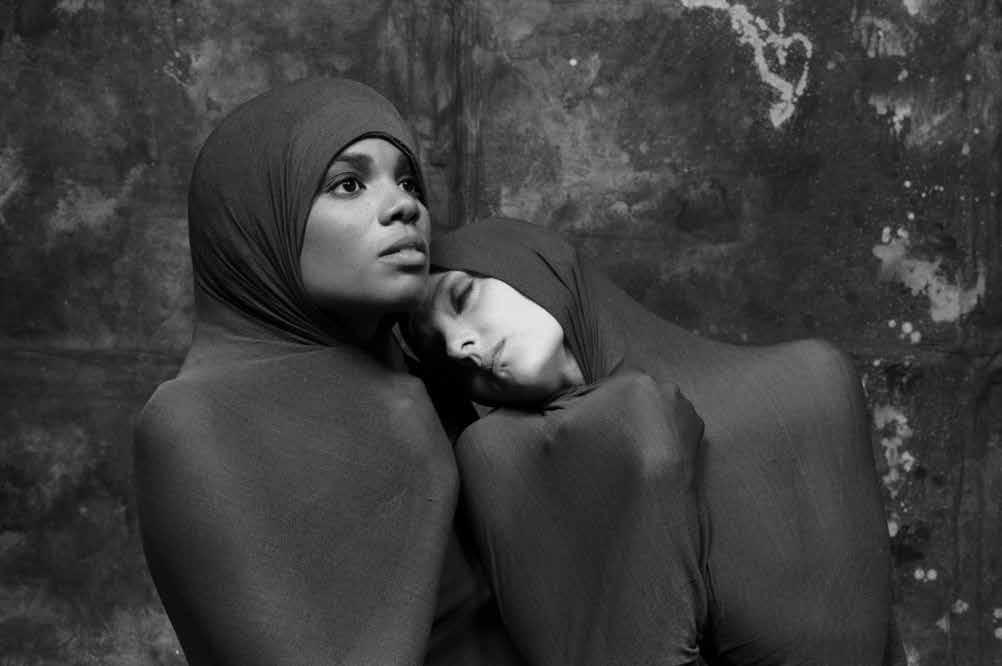
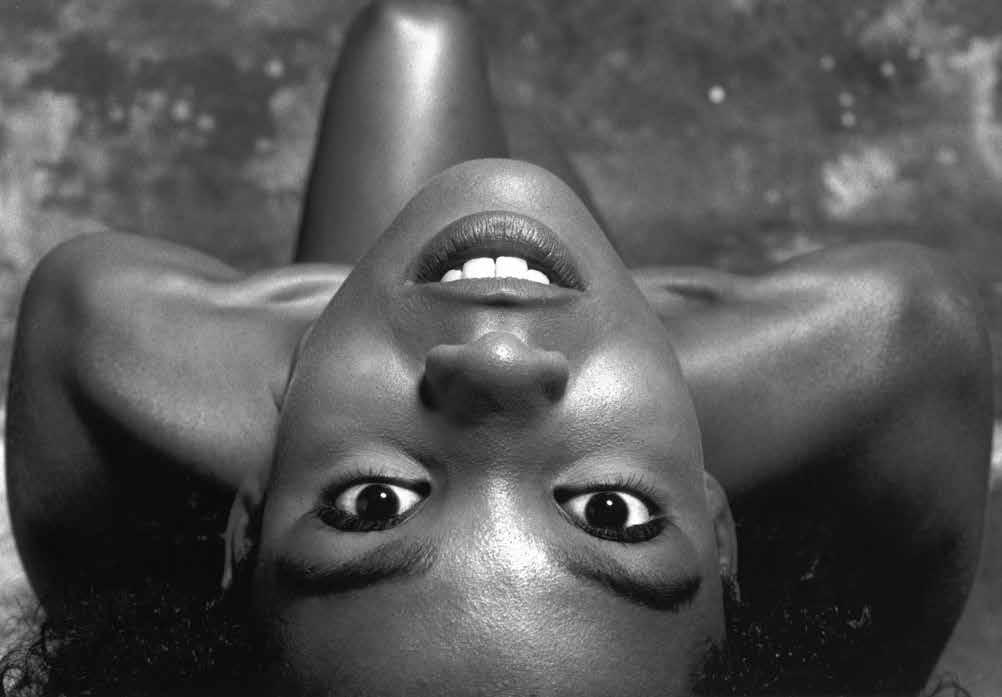

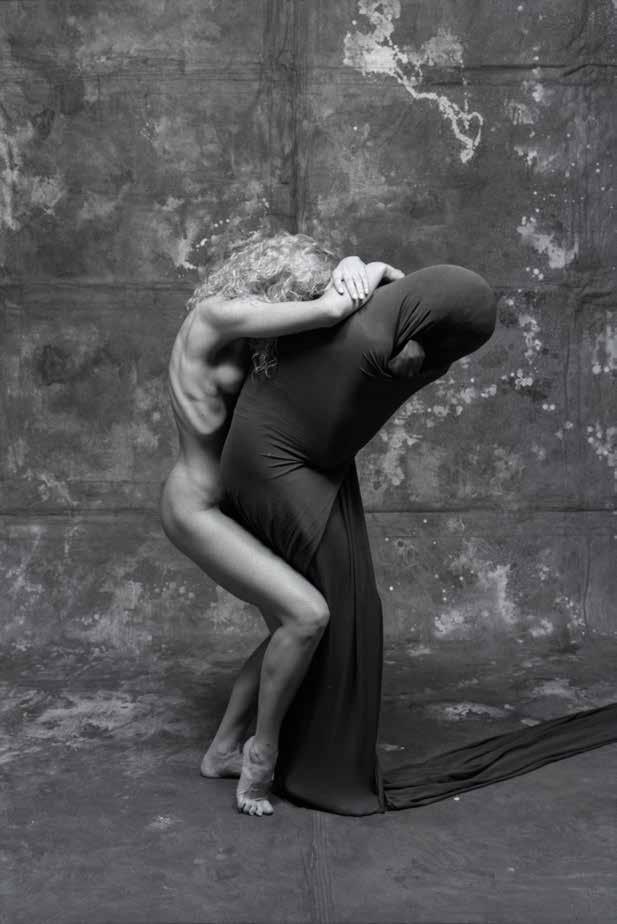
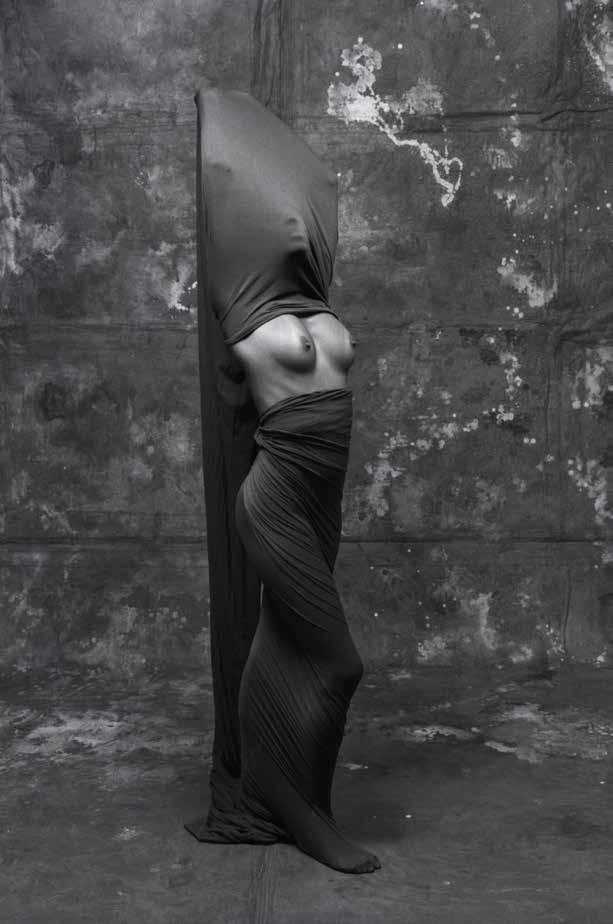
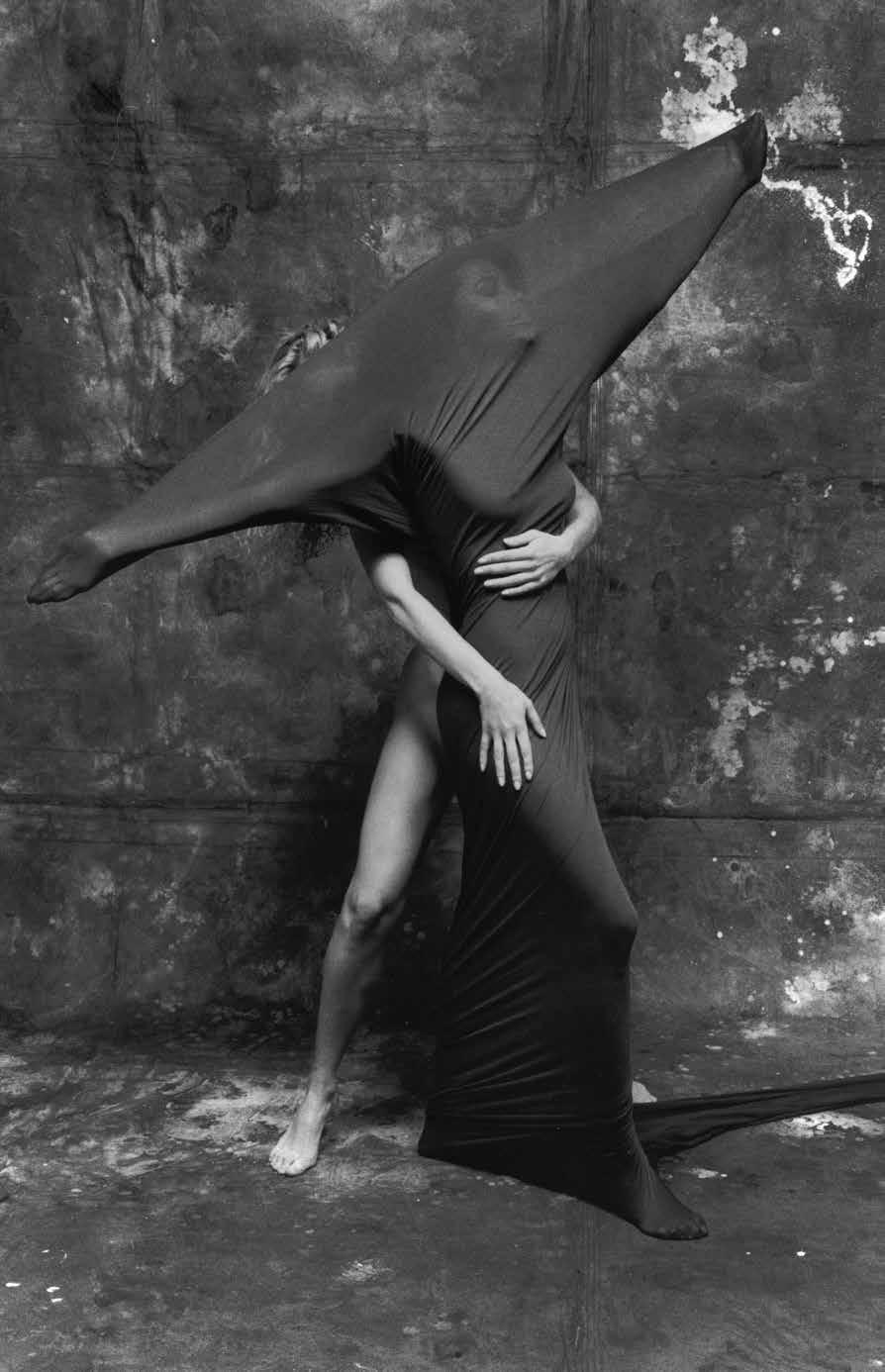
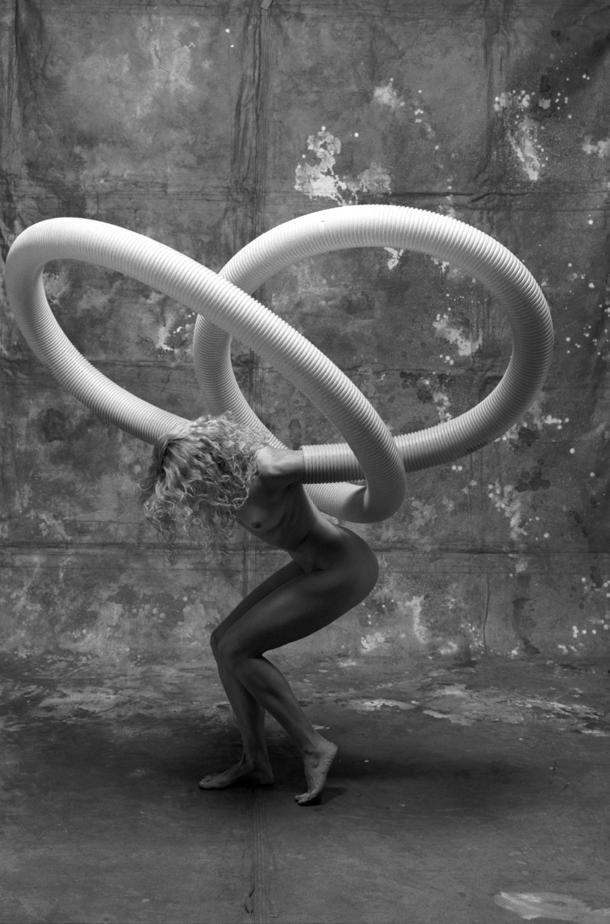
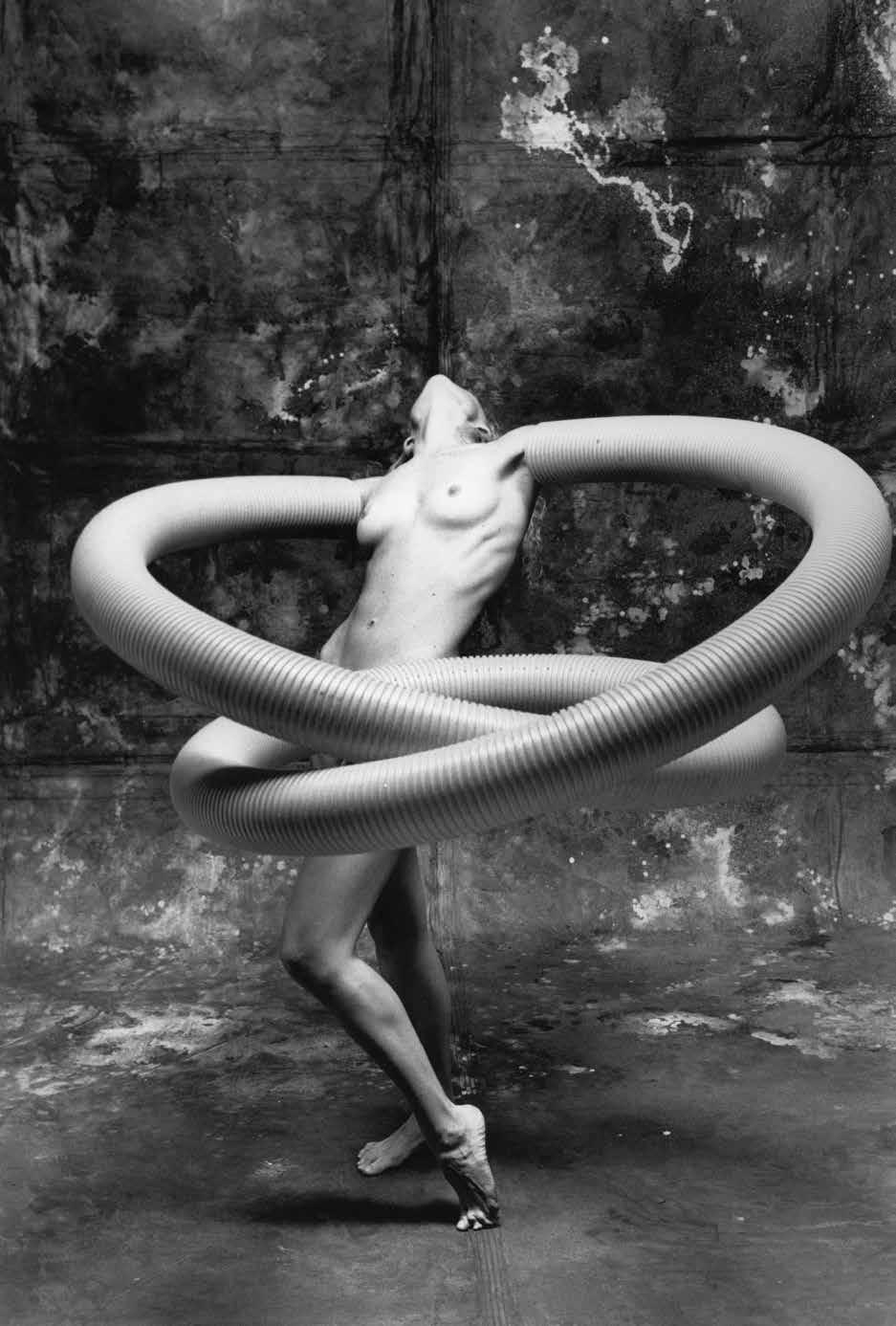



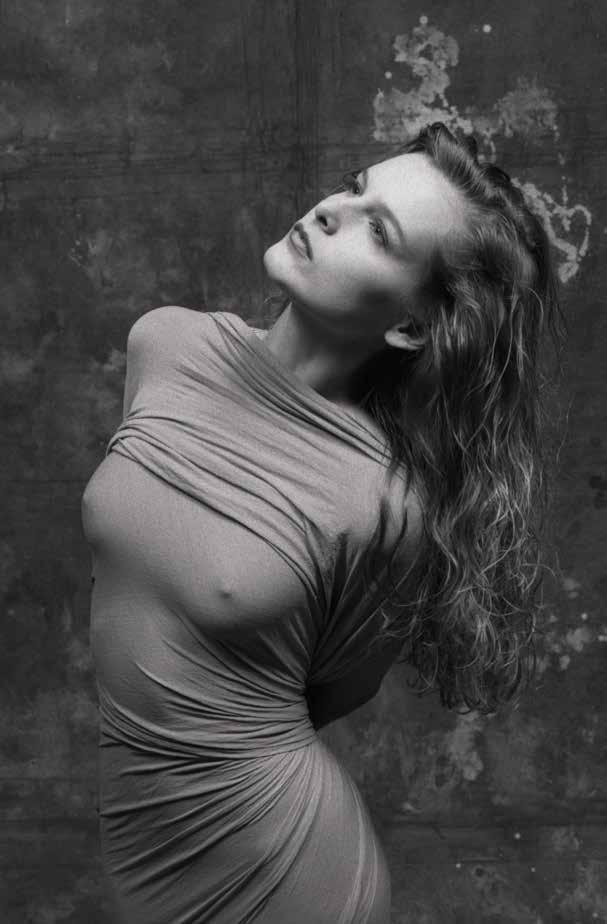
OPHELIA S DEATH
There are photographers who travel all over the world in search of their photos; others invest in expensive studios, and others chase celebrities, wealthy people, and beauties, hoping to catch them off guard... Klaus Mitteldorf, however, does not need much to establish his photographic universe: three models, a swimming pool, plastic flowers, and fabric backdrops are enough to transform his visions into images. For it is not reality, as it presents itself around him, that interests his photography, but rather that universe originating in his head, his fantasy, his dreams. In his most recent book, with the complicated title Zur Rechtfertigung der hypothetischen Natur der Kunst und der Nicht-Identität in der Objektwelt (For the Justification of the Hypothetical Nature of Art and the Non-Identity in the Objective World), Peter Weibel states: “It is art to demonstrate that the world is artificial”. We ask ourselves how to do it... The starting point would have to be a direct confrontation with the world in order to demonstrate its character, its artificiality. But the one who portrays the world as it presents itself runs the risk, in the end, of having in his hands an image that harmonizes so closely with reality, as we perceive it, that it ends up seeming extremely normal and ordinary to us, and thus the photographed reality no longer seems artificial, but rather exactly real. However, Peter Weibel also does not assume that it is enough to portray reality by means of other instruments in order to unmask it as artificial. The current and evident popularity of produced photography probably lies in the fact that it has recognized, within its own medium, its limits in analyzing reality, now seeking possibilities of preceding the analysis to the photography or, in other words, no longer analyzing by photographing, but photographing what has already been analyzed. This is a matter of central importance for Klaus Mitteldorf. In his conversation with artist Luiz Paulo Baravelli, it became evident that the
photographer finds themself in a process of detachment from professional photography, which, in his opinion, does not allow him to exercise introspection, egocentrism, and uncommitted fantasy. The interesting aspect of this process of change from advertising photographer to photographer-artist is the fact that it is not a transformation from documenter of reality to documenter of fictitious worlds, but rather a change of paradigms: from social fiction, from the virtual reality of advertising, to the subjective fiction of individual fantasy. That the change from advertising photography to the world of the visual arts is experienced primarily as an act of liberation undoubtedly aligns with this process. However, it is not merely a matter of choosing: photographer or artist, as Baravelli would have it. Confronted with the present reproductions of Klaus Mitteldorf, Baravelli noted that the photographer is condemned, always, to photograph something concrete, whereas the visual artist has at his disposal the imaginary and abstract world. Also his is the image of the photographer as a kind of hunter of a reality that is always already established and external to the work. In his opinion, photos produced like those of Klaus Mitteldorf, with complex and time-consuming assemblies, cannot be considered photography per se. Once someone decides to express themself through photos, he must always take into account that aesthetics and technique are intrinsically interconnected. There is not, Baravelli asserts, such a thing as abstract photography, in the sense that there is abstract painting. All these considerations must be mentioned, as they largely correspond to those of Klaus Mitteldorf, and because they illustrate, on the one hand, the circle of problems with which the photographer is confronted in his current work, and, on the other, his doubts regarding his definition as a photographer. As I have already stated, this is not a matter of choosing between photography or visual arts. The question is what the photographer does, what his interests and problems are, and how they manifest not only in each photo but in his
entire body of work. If it were true that the photographer is condemned to portray exclusively external reality, then only documentary photography, such as photojournalism, portraiture, architectural photography, or landscapes, could be called photography. The entire field of advertising and art photography, which moves in universes of fiction, would have to have another name. There is, without any doubt, such a thing as abstract photography. The 1950s also left their mark on photography. The 2 x 1 meter silver gelatin paintings of Chargesheimer, the “chimigrams” of Pierre Cordier, the abstractions of Fritz Pitz, Hans Martin Holzhäuser, or Gottfried Jäger, to mention a few, are well-known examples of this line in photography. Without any doubt, what Klaus Mitteldorf primarily grants to the visual arts also pertains to photographer, namely, that he may create his own aesthetics opposed to the prevailing common sense, if he wishes to prevent photographic aesthetics from being reduced to photographic technique itself. Those who do not make this break run the risk of subjugating their technical perfection and aesthetic notions to the rules of professional media photography. Klaus Mitteldorf is following this difficult path, seeking for his, so to speak, figurative language (which he masters so well) new contents, now defined by themself. The detachment from professional photography represents for Klaus Mitteldorf an act of liberation, an independence in defining the content of his photos. And this is exactly what he alludes to when, in conversation with Baravelli, he speaks of the contradiction between the work of the visual artist and that of the photographer. Klaus Mitteldorf does not so much oppose the aesthetics of advertising photography as its external definition. Just like Reinhardt Wolf before him, or today Peter H. Fürst, he strives to find his path, to dissolve the prevailing contradiction between the artist-photographer and the professional media photographer.
Klaus Mitteldorf sees no need whatsoever to deny
his technical skill and refinement, and thus produce low-tech photos, as do visual artists who work with photography. In this attitude, we must agree with him.
For if technology is not a criterion for the visual arts, it cannot be one for art photography either — that is, neither the perfect use of photographic technology nor the amateurish one can be criteria for evaluating a work of art. It was in his work in the media that Klaus Mitteldorf learned, exemplarily, to formulate fictions photographically, to make fantasy look like reality. Now, however, he no longer transports into photographs the ideas of advertising, but rather his own. And it is extremely important to him that they always seem like fictions, that their artificiality becomes evident, and that they can never, under any circumstances, be confused with reality.
But since his fantasies, now made visible, are also part of reality, they are statements in relation to it. It does not interest Klaus Mitteldorf, however, to create mere critical oppositions to reality, but rather essays of a beautiful and idealized “counter-reality,” which can only be placed critically in relation to reality as long as it itself remains spotless. The reproductions presented here can be subdivided into three parts: the aquatic photos, the geometric ballets, and the amorphous play of forms. They all share in common a coloring that seems artificial to us. In the illuminated areas, the water is red, the bodies are greenish-yellow, the flowers blue and green. In the geometric ballets, the bodies are naturalistically plastic, but are confronted, complemented, or covered by plastic and glass elements, and with this, their corporeality is, on the one hand, underlined, and on the other, ends up seeming unreal. The most striking aquatic photos are those in which the water acts as a dividing line between two worlds, cutting the body in two. The greater its plasticity, the greater the difficulty in defining the space. In the black-and-white series with the dark fabric, new beings constantly appear — mosquitoes, resembling insects and spiders, in which body forms are
glimpsed, and which, nevertheless, show moving statues in the most diverse positions. Sculptures, elements such as water and wind, movement, ballet. These are the terms that come to mind when we observe the reproductions of Klaus Mitteldorf. It is no coincidence that some scenes recall Schlemmer’s Triadic Ballet, that the exasperated artificiality of some heads reminds one of Salvador Dalí’s sculptures or of Pop Art. But much of the effect of strangeness and novelty is motivated by a coloring that has its homeland in Brazil. A coloring to which we are not accustomed, and which we possibly know only from a few images of Carnival in Rio. This coloring is not merely multicolored. Taken in isolation, the colours could even be defined as muted and warm tones. The impression of colouring results, primarily, from a mixture of colours that does not respect our rules of chromatic combinations.
Above all, we find a series of non-complementary colour combinations that, on the contrary, are close to one another on the colour wheel, such as bluish-green, blue, violet, and purplish red. To European eyes, these combinations are disharmonious, or at least strange. For us, this colouring, in its entirety, can only underline the impression of artificiality, of fictitious worlds. But how could it be otherwise in a world in which the flowers are plastic, and yet this is not the reason they seem so artificial.
Dr. Reinhold Mißelbeck
Director of the Department of Photography and Video Museum Ludwig, Cologne, Germany


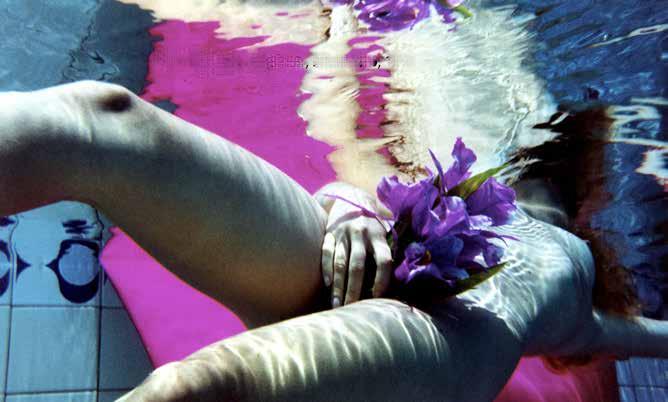
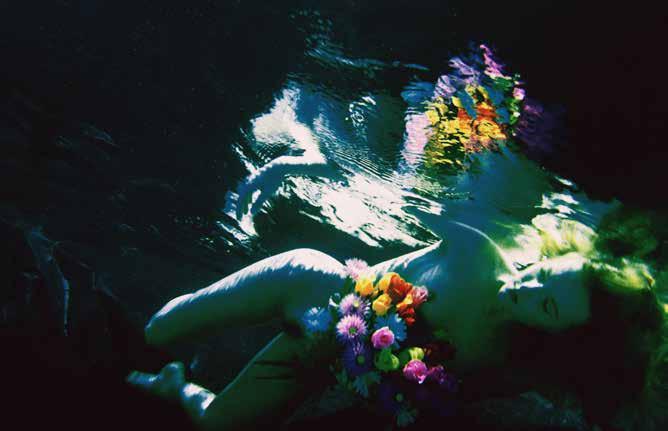
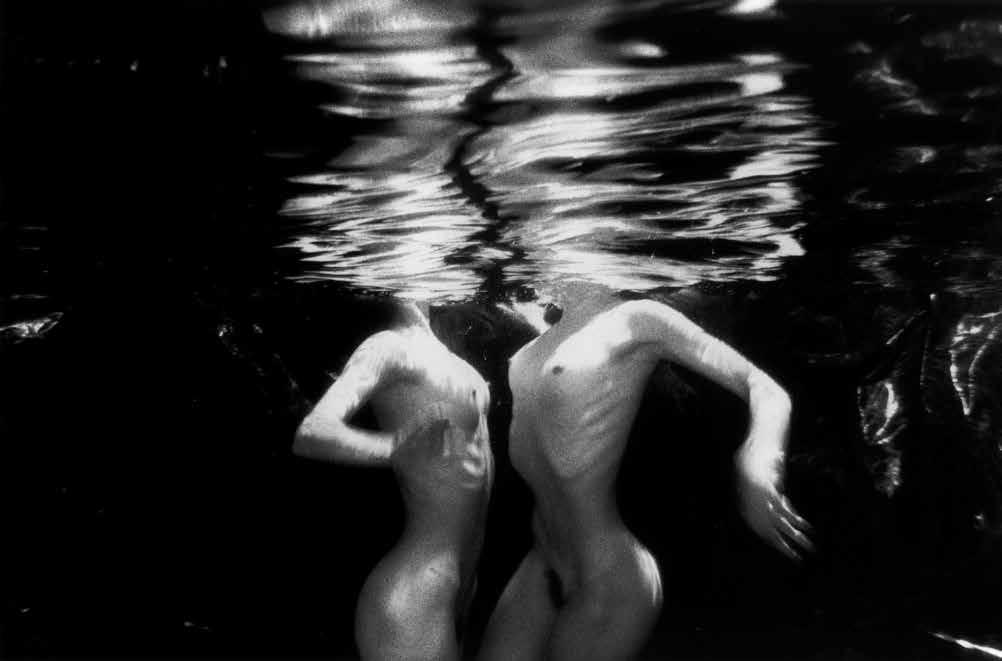
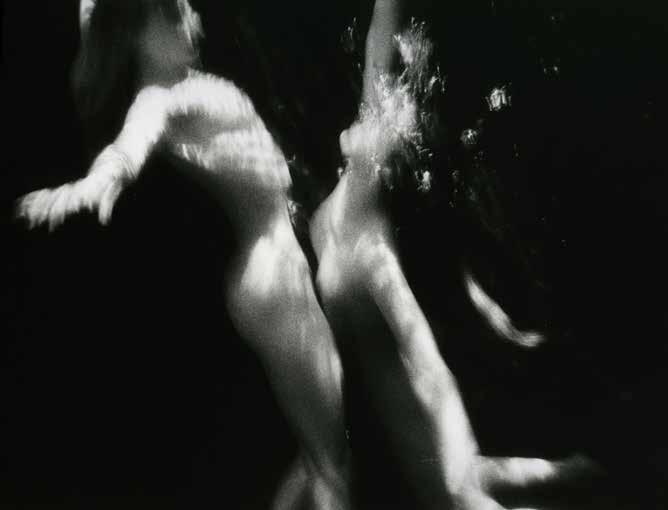


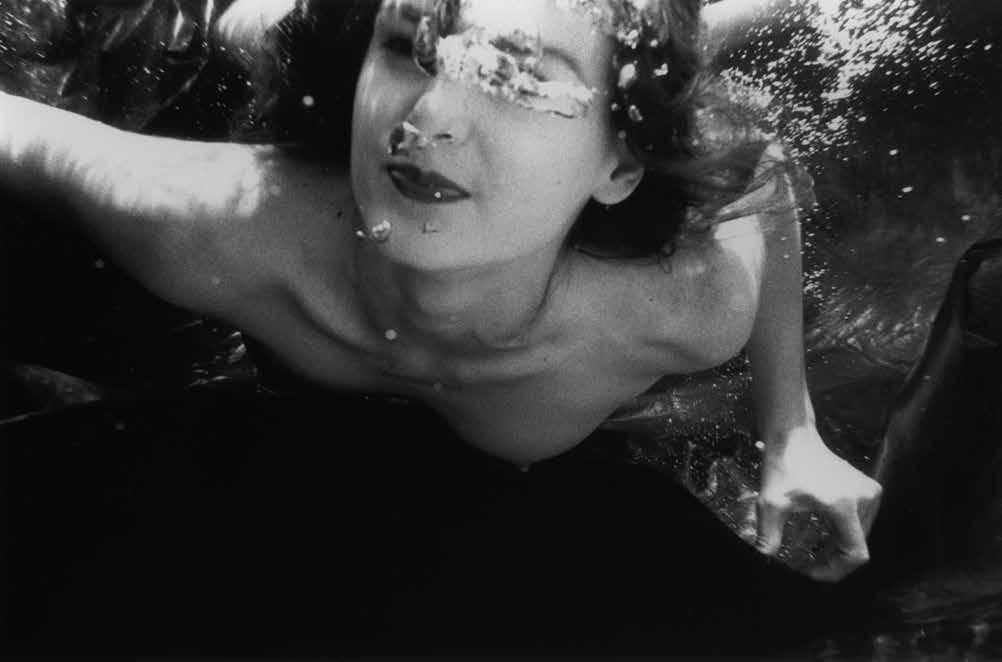


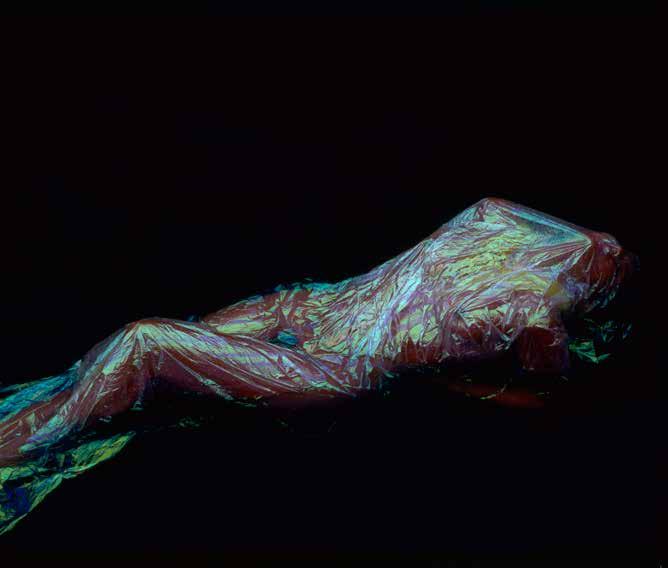
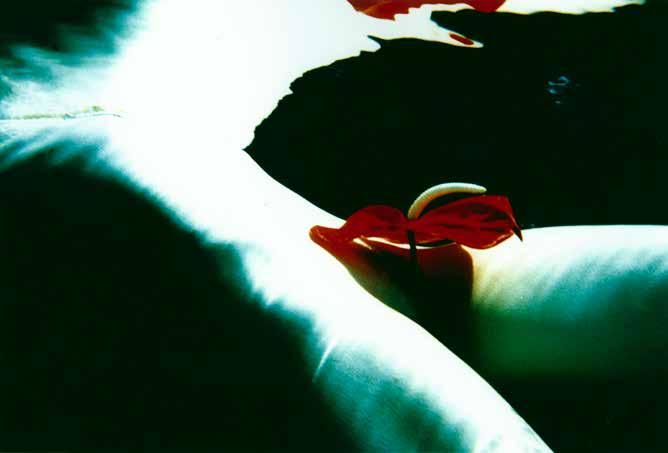
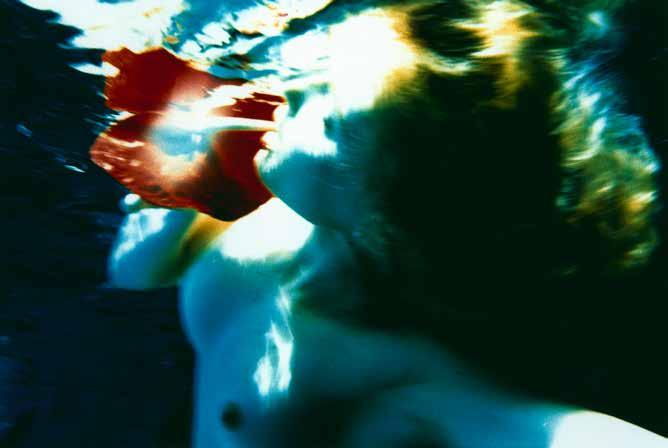


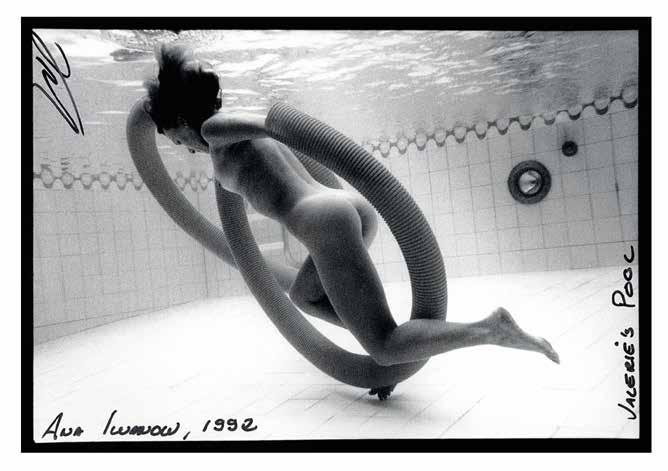
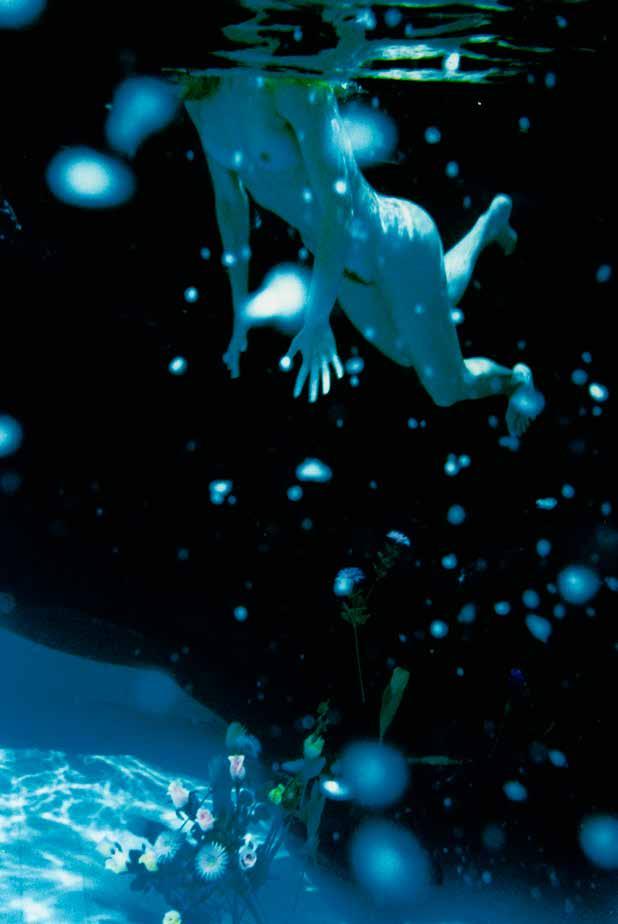
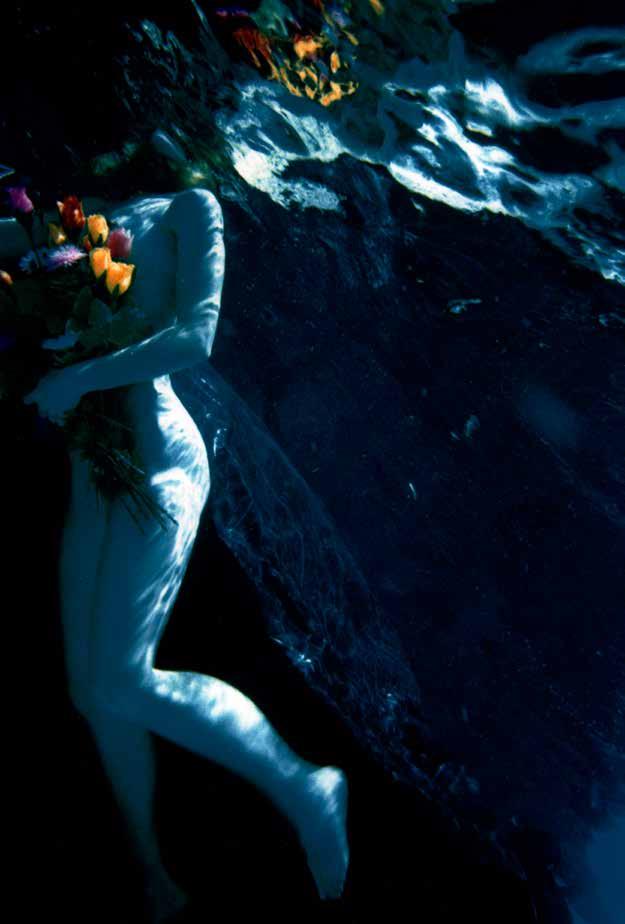

FLOWERS
Photography today is a highly technological product. It does not matter what is being seen through the camera. From the lens backward to the final print, the process carries the precision and technical mystery associated with advanced industry. It would be possible, marginally, for an artisanal photograph to still exist, in which the artist-photographer would fabricate the camera, the film, the chemistry, and the printing support – but that is absolutely not the case here.
Klaus Mitteldorf uses the best camera, the best film, the best light, and the best paper. The impression his work leaves is one of extreme technical refinement, of something at the very edge of what is possible with current photographic technology. If a photographer positions themself as an advertiser or media professional, such technically perfect photography would be in its natural habitat: the latest car model photographed by the latest camera model, laser photolithographed and printed in the magazine by the most modern rotary press. There is no discontinuity, and the reader receives a message that is not foreign to the medium that produced it. All would be well. Klaus could define himself as this type of professional and carry out this activity satisfactorily and without problems. But, for better or worse, he was bitten by the virus of art, and what could have been a profitable and glamorous profession became a straitjacket.
When a photographer redefines themselves as an artist, everything becomes much more complicated, especially with the evident association of photography with painting, understood here in the broad sense of producing fixed images. I list a few of the points where the two activities meet and conflict:
- The photographer, in a strict definition, is limited to creating a negative and copying it in a way that can be called definitive. The purist photographer does not crop his negative, does not
interfere with it after it is developed, and his “authorized” print must be able to be repeated identically.
- A visual artist is allowed an infinity of manual and industrial processes that are outside the standard procedure. He may incorporate low-tech or even zero-tech processes, harmoniously mixing the traditional with the ultramodern.
- The photographer is condemned to photograph something concrete, while the visual artist has easy access to the entire imaginary and abstract world.
- There is, now culturally, an impediment for the advertising or fashion photographer to transgress what is beautiful, clean, elegant. This is a central problem for Mitteldorf.
- A one-square-meter painting is a medium format within the reach of any painter, but a heroic size for a photographic print. A feeling of claustrophobia comes from photos that compress too much information into small formats. One must remember that, in a photo, space will be within the subject, whereas in a painting, space will be in the painted surface.
- The visual arts, and especially painting, have a very long history, something like forty thousand years. As photography is around 150 years old, moving from one field to another greatly expands the universe of references and comparisons. A simple thing in photography – a portrait, for instance – when considered within the larger scope of painting, must also deal with every other portrait ever made.
- The question of time and the “decisive moment.” Speaking of Cartier-Bresson, critic Dan Hofstadter says that every photograph is “an interception.” The simplest painting is a deliberate, successive construction, whereas the photographer is a kind of hunter of a reality already prepared and external to the work. Eventually, a posed photo, as happens here, may have a complex and lengthy staging, but the instant in which this scene becomes photography is not a construction, mainly because it is so brief, almost imperceptible. Photography, when treated as visual art, places production and recording in conflict.
In simple terms, much work is done when one photographs, but it is work that happens before and after the blind, decisive moment. When one paints, the situation is exactly symmetrical.
- Today, painters and photographers alike are in a subordinate position in relation to technology, but this is felt more acutely in the case of the photographer. If, for instance, in the eighteenth century no one knew more about paints than the artist-painter and no one knew more about metal casting than the master sculptor, today certainly Rolls-Royce knows more about painted surfaces than any artist, and NASA knows more about casting than the most informed sculptor. Even the most technically skilled photographer has only a schematic knowledge of how all his material works and, even if he stretches the limits, is forced to stay within what Hasselblad and Nikon provide. The painter at least has the possibility of making something dirty, wrong, and artisanal – and with that, exercising symbolic independence.
- It is normal, when photographing, to shoot five rolls of film in an hour. Then, among the 180 photos, one is chosen. The artist’s process is much more arduous – I am satisfied if I manage to produce a work every ten days, after ten hours a day in the studio. Good or bad, that work will embed all this conception. I do not deny the photographer’s effort, but it is a more diffuse, centrifugal effort, not centripetal like that of the painter. The hypothesis of pressing the shutter once every ten days should be considered by our photographer-turned-artist.
- In art, in painting in particular, half of the work is removing things after having placed them, reworking, correcting the course within the work. Perhaps this is technically possible in photography, but it goes against all its practice.
- One might argue that I am inventing this shift of Mitteldorf into the world of the visual arts, that he himself does not clearly position himself as such. I explain: modernism has placed us all in an ambiguous situation; what is called “visual arts” today covers an almost infinite range of manifestations and techniques. A visual artist is one who makes tiny figurative and
sentimental watercolours and one who projects laser beams onto the moon, who creates gigantic installations with railway scrap and who digs holes in the desert, the graffiti artist, the wild performance artist, and the conceptual artist who uses only typed texts. Some even take photographs. It has become difficult to establish a limit. After more than one hundred years of struggle to affirm the autonomy of the artist, modernism has triumphed, but that victory is in quotation marks. We can do whatever we like and call the result art – and this is a very simple, but very difficult situation. In truth, in all the examples of “visual artists” listed above, there is only a tenuous thread connecting them: an attitude of introspection, egocentrism, and uncommitted fantasy. This is the only thing that unites them, since materials, processes, and modes of production, dissemination, and funding vary at random. The impossibility of exercising introspection, egocentrism, and uncommitted fantasy is what makes professional photography the straitjacket against which Klaus is struggling. As he distances himself from advertising and illustrative work and disinterestedly records his personal fantasies, he becomes a visual artist and even a traditional visual artist (a “painter”), since his activity results in treated, fixed, and durable surfaces. In the classic phrase of Surrealism, it is not the glue that makes the collage, and surely today it is not the paint that makes the painting. It is a matter of attitude.
It seems that the somewhat dizzying hypothesis of becoming an artist tout court is still ripening for him. It is easy and not entirely fair to say that he still takes refuge in the technique he knows well. If, behind the camera, his certainty is indisputable, what that camera sees is a tangle of problems; the photographer knows exactly what he is doing, but the man gropes his way forward. I wrote elsewhere that, when starting a work, an illustrator knows everything, and an artist knows nothing. All his technical experience can do little to elucidate the specifically artistic problems, of the image itself. Despite
this “knowing nothing,” the trajectory of his work develops with clarity. From the first reproduced photos, from 1984 to 1990 (which I do not like), to the recent ones (which I like very much), the evolution is from exterior to interior, from stylization to delicacy, from effect to sensitivity. It is curious to see that the work evolves but becomes more tentative, groping for possibilities and risking entertaining simultaneous and conflicting visions. Within him, the photographer and the artist point toward opposite extremes of the artistic universe. This tension between poles impregnates Klaus Mitteldorf’s entire process with dualisms. Some of these dualisms are clear and acknowledged; others, we must discover. If I had to summarize in one sentence what is reproduced in this book, I would say that there is an aesthetics of desire and a desire for aesthetics struggling for the possession of his soul. We live in a world split by Judeo-Christian polarities: heaven and hell, body and soul, culture and nature, man and woman are clear extremes, but both aesthetics and desire are more diffuse, slippery terms. Choosing to express oneself through photography casts aesthetics toward the technique itself, with the sunlit clarity of the enamelled surface fighting with the darker world of desire to which the subject of the photos alludes. From the list of conditions enumerated earlier I wish to highlight one, simple: there is no such thing as abstract photography, in the sense that there is abstract painting. Not even Man Ray’s contact photograms escape this observation: every photo is a photo of something. This apparent limitation is used by Klaus as a fact in his favour: the photos are not beautiful images taken of just anything, like a still life, for example, nor are they accidental finds such as a beautiful light effect on a mountain cliff in which the photographer had no part. These are beautiful photos of beautiful (and metaphysical) situations created specifically to be photographed. It is inevitable for the viewer to imagine himself making these photos, under the sun or in the water, in the presence of these mythical faceless women. The existence
of a correlation between the mood of reality and the mood that its record produces is here a metaphor for this figurative commitment of the photo. It is an approximation, but we might think that aesthetics is an abstract notion, whereas desire depends on a being-there, of a reimagined reality. The figurative image describes the variety of the world and its infinite richness; it is an art of the surface of things. As Italo Calvino says: “It is only after knowing the surface of things that you can venture to discover what lies beneath. But the surface of things is inexhaustible.” Figurative art is horizontal, topographic, human, and compromising. The “looking beneath,” impossible according to Calvino, is an ascent or a digging, aiming at paradise if we choose one direction, or at hell if we choose the other. The horizontal search is aesthetic; the vertical is ethical. Matisse is horizontal, Mondrian is vertical, Andy Warhol is horizontal, Pollock is vertical, the Italian Renaissance is horizontal, Islamic art is vertical. The surface is always beautiful, and what we call drama could be described as the intertwined fate of the surfaces of the world; this intertwining presupposes some overlap, a hint of verticality. A surface is always the limit of a body, and the interior of beauty is a mystery. The passage from purely formal beauty to the recent allusions to the mysterious is also one of the polar migrations through which Mitteldorf’s work passes.
In these photos the sign that water represents is clear: an immensely mutable and sensual medium, but only possible for man in transitory situations. From the calm surface of a lake, one can just as easily see the stars reflected or sink into a hostile unknown. We might think here, without literal interpretations, of Jungian metaphors of the unconscious. The most recent series (of Ana in the swimming pool) is, without a doubt, the best art in this album, the photos that have the most to say to us, where the war and festival of the horizontal and the vertical, of surface and depth, are most clear. Flowers and women do not belong to the water and are there in
passing; what is being represented is an instant, and an instant of action for the woman, a human being. She needs to swim to stay near the surface, where is the air she will need in the next few seconds, but the flowers, stereotypical symbols of the beautiful, will surely sink, already cut and dead. Swimming can be an intense pleasure or a terrifying necessity; that these instants of life and death are also instants of desire and beauty is a synthetic yet poignant commentary on human existence. There are between-the-lines meanings. That the photos are taken in a swimming pool and not in a lake or the sea is an allusion to art and to the declaration of implicit artificiality. A swimming pool is a parallelepiped of water, and it is through the geometrization of nature that we distinguish ourselves from it. That the flowers are plastic is a subtle irony, because this is only perceived outside the photo, when one reads the titles, since the eye has seen and been moved by “nature.”
This awareness of polarities also clearly returns when we notice that there are several photos printed as negatives or, with a little less clarity, in the older works where the two models appear, the white and the black. In these photos, one must notice an air of violence, of gagging and immobilization, and this has an important echo. For many people, the threshold between eroticism and pornography is not very clear. As Mittendorf’s vision points in that direction, I allow myself to define: sex is action, and erotic sex is a harmonic action between two people; pornography, understood here as sexual violence, is any act of a sexual nature carried out against someone’s will, generally a woman, that is, an immobilization of her, physical or mental, while the man acts. As a painter, I often work with female models, and the very situation of remaining motionless while the artist acts have a parallel with pornography. In these photos of Ana and Zuleica, this is a disturbing fact; staging strange and forced poses, introducing geometric elements, and using harsh light are the possible actions of the photographer here, an action almost absent in the Ana in the pool series,
where the light stretches, the gestures are of pleasure, and she acts of her own accord, guiding the photographer’s action rather than being immobilized by him. The photos came close to being pornographic but became erotic.
Placed wisely as a conclusion, the last and the antepenultimate photos, of Karina screaming, perhaps point to a direction for Mitteldorf’s future work. He finally comes close to that mysterious figure, who acts with passion, screaming –we do not know whether in calling or in despair – and makes an almost journalistic photo, in black and white and without formalism. It is the record of a woman’s action, not the pose of a model. Close-ups are very rare in his work, and here again appears a polar difference between these photos and a similar, older one (Papillon). The clock has made a full turn, but time continues – bon voyage, Klaus!
I would like to add another different thought that Klaus’s work evokes. It is, surprisingly, a political notion, in a body of work that seems to pass by this issue. He is a person of dual nationality; half Brazilian, half German, and one of the sources of his energy is the tension between these two very different ways of being. The rich, old, white, orderly country coexists within him with the poor, young, mixed, and unequal country. This polarity also implies symmetrical assumptions for the respective artists.
Put simply, the function of the artist is always to be on the opposite side of the common sense of the average person and to say all the time that the reverse of what is practiced might be interesting. Thus, it is characteristic how the most sensitive German artists generally make tense, dirty, embittered art, and how vital, clean, and positive is the art that, also generally, Brazilian artists make. Artists always do the opposite: given a row of arrogant, shiny limousines, one thinks of slashing tires and breaking windshields; given a pile of rusty wrecks, one thinks of patching them with wire so they last a bit longer. In his first works, Klaus is still harsh in this moralizing
choice: the photos impose geometry and cleanliness almost by force; even the “tropical” colour is harsh and schematic, the women’s sensuality prohibitive and dry. There are even frightening imaginations, like that of the photo on page 56. He gradually realized that this “German” order does not work here. It is necessary to find a Brazilian order, and one of the things I find most enchanting in the new works is when he glimpses it. An Israeli diplomat, visiting Brazil, found it impossible to have a pessimistic view of life in a place with so much water, and water serves Klaus to investigate the principles of this new Brazilian order: fluidity, lightness, iridescence, and a metaphysical eroticism that impregnates even plastic flowers. It is a political platform suited to the country we desire.
Luiz Paulo Baravelli


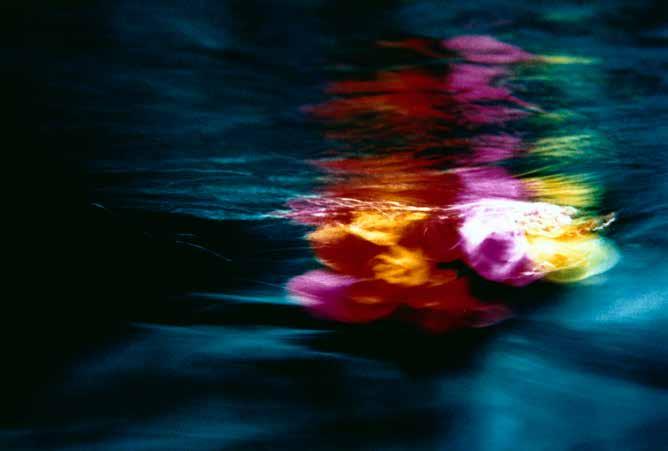

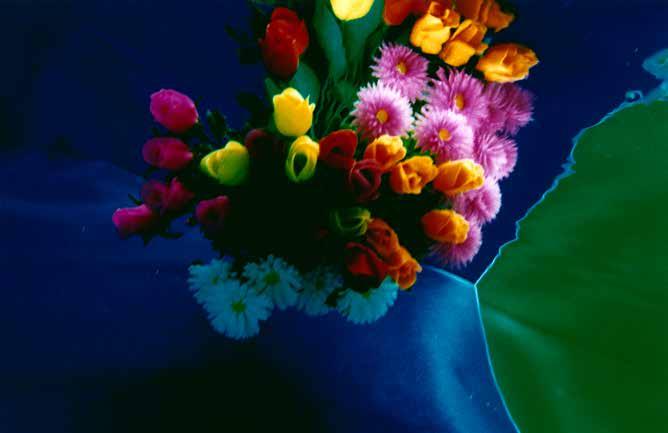
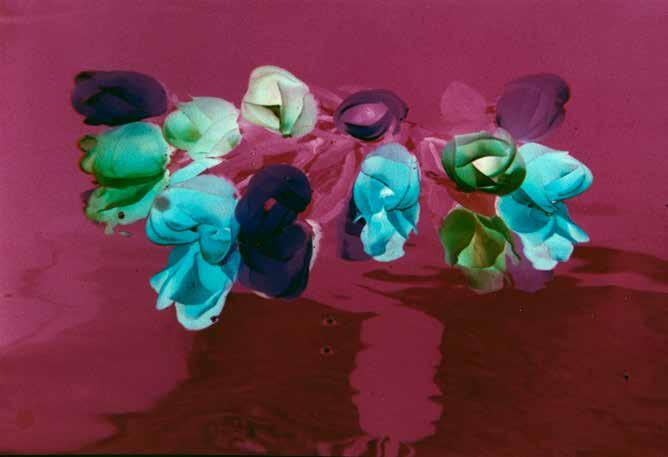
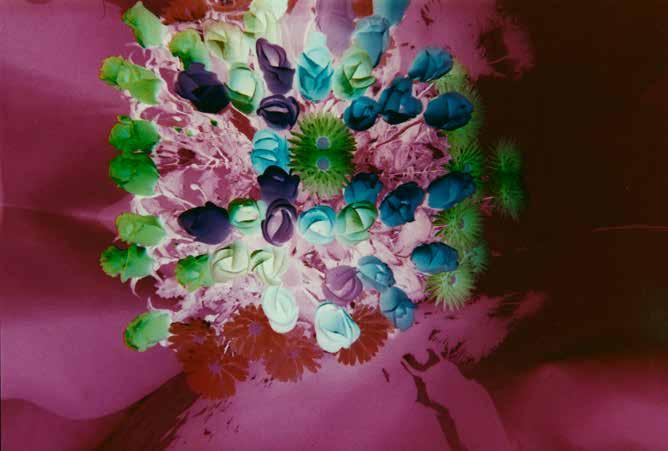

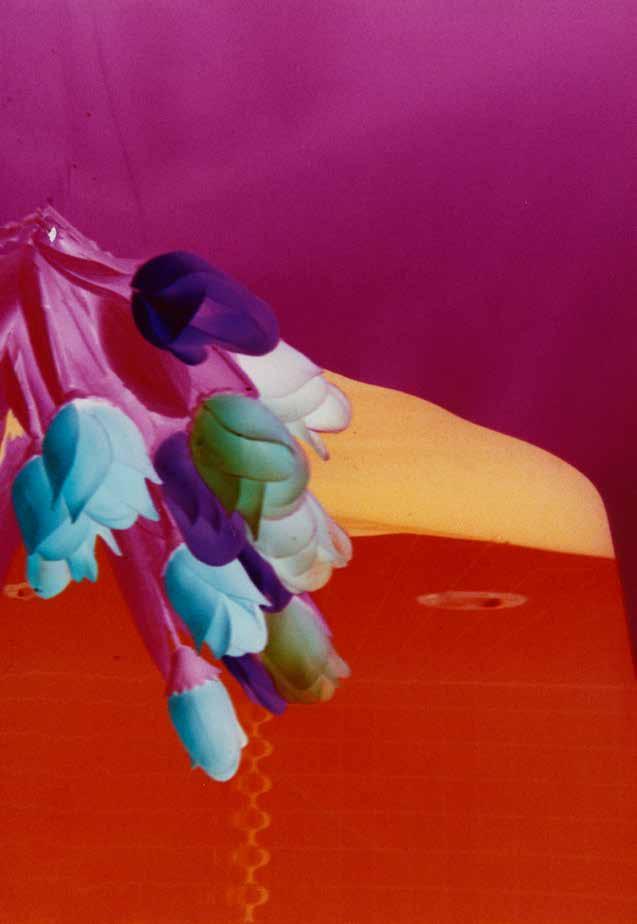

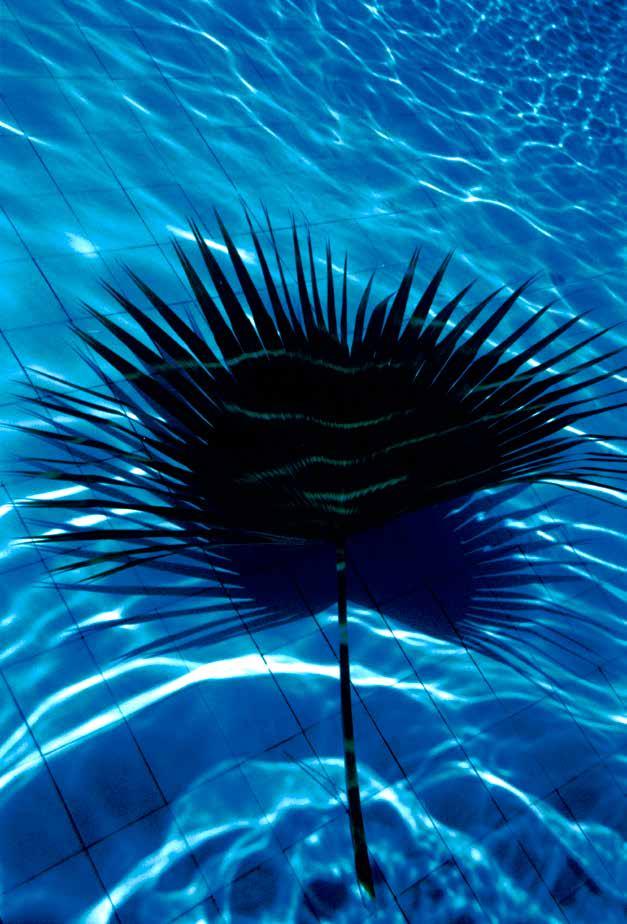

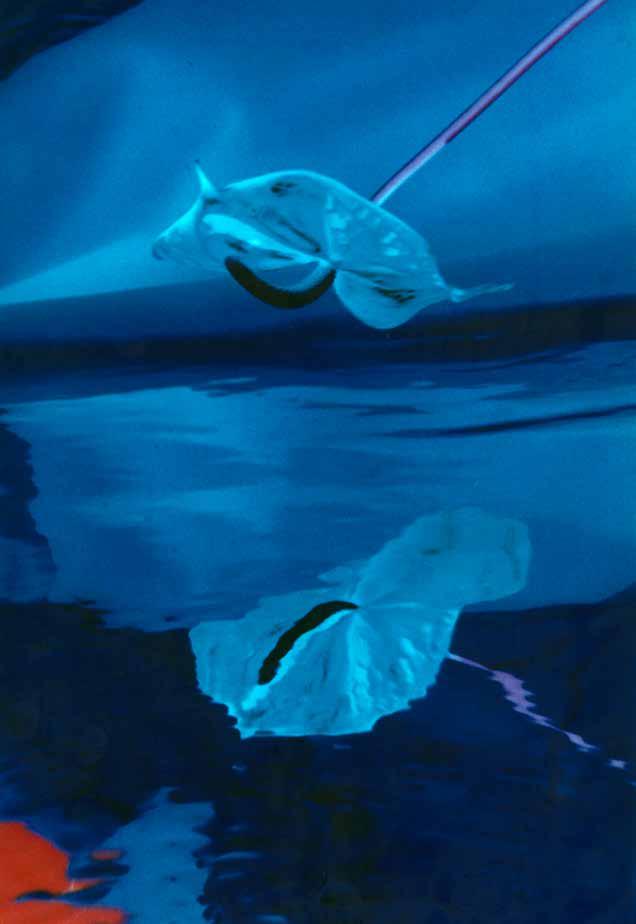

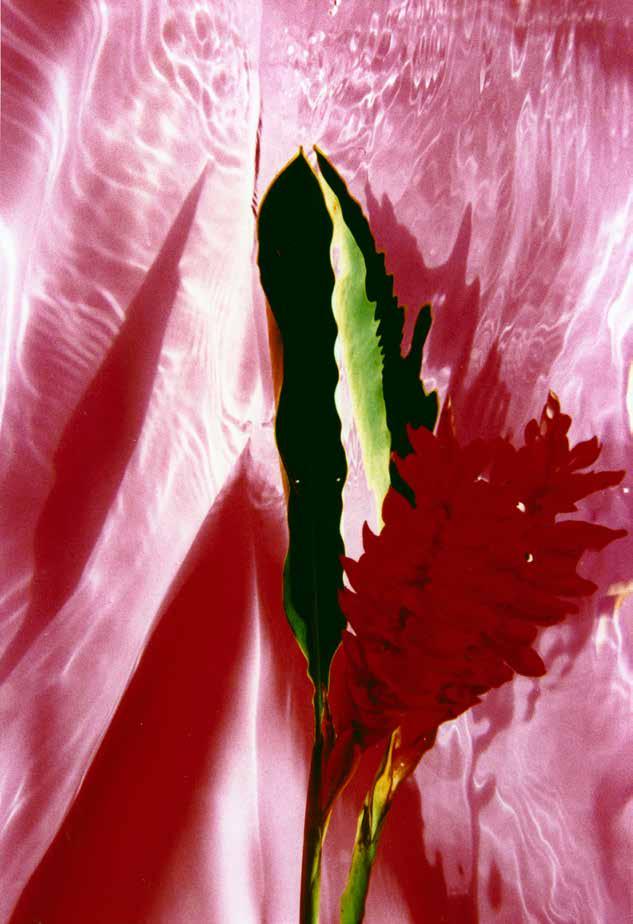
KLAUS MITTELDORF REGISTERS THE AGONY OF THE MODERN WORLD
In his most recent book, “The Last Cry”, he makes a flagrant portrayal of models as unprepared and aimless beings at the end of the millennium.
As a photographer, Cartier-Bresson embraced the surrealistic ethic, apart from his aesthetic which, in his own words, was nothing but the resolution of a literal joke. In other words, the French Cartier-Bresson never perceived the parody, but the (po)ethic of surrealism — the construction of a fantastical world appealing only to concrete elements — the same ethic perceived by the Brazilian photographer Klaus Mitteldorf. His third book, “The Last Cry”, to be released as part of the Pinacoteca no Parque project, is proof of this resistance to mere aesthetics and surrender to the ethics of surrealism. The book, which will cost R$ 35 during the event (and R$ 45 at bookstores), is a sophisticated project published by Terra Virgem. “The Last Cry” is 136 pages long and printed in seven colours by the highly regarded Italian publishing house Mondadori, with an initial edition of 3,500 copies. The publication is a graphic project by Sylvia Monteiro, with a preface by Professor Rubens Fernandes Júnior. It has nothing in common with the two previous books released by Mitteldorf: “Norami” (1989) and “Klaus Mitteldorf Photographs” (1992). This is an investigation of signs of a different nature.
While the first two worked as a showcase window of the impeccable technical work of a photojournalist trained in architecture and dedicated to fashion and advertising, “The Last Cry” is an essay about existential pain — more precisely, about the anguish of the end of the millennium, when the world seems to be populated by survivors of every kind (those with rare diseases, victims of nuclear disasters, the chronically depressed, etc.).
Water is the common denominator of all his 60
photographic works and installations (both colour and blackand-white) that will be shown in conjunction with the release of the book.
The “cry” can be either the primal relief cry of Munch, or like the one in the final part of T. S. Eliot’s “The Waste Land” — a cry for help for all of humankind.
Beautiful top models, commonly seen on the covers of international magazines, emerge shouting from the waters of lagoons, beaches, and rivers, but their cries — paraphrasing Saint Matthew — are not heard in the squares. It is quiet, mute, inaudible. Therefore, a pure cry of desperation, echoing drowned bodies. The drowning, obviously, is a metaphor for the limits to which every human being is subjected. It can represent either death or rebirth. This subject is very familiar to the photographer, a well-experienced surfer who has saved at least three people from drowning.
The locations are diverse: from a lake in Bavaria to the Paraguaçu River, from the backlands of Bahia to pools and beaches.
The techniques are equally varied, from Polaroids to film and pre-press, including salted paper processes from the early 20th century.
Among the 60 photos chosen by curator Rubens Fernandes, “Autobahn” (highway), a series of 22 photograms, draws attention for the dramatic tone of the model’s cry in this four-meter-long panel. This time, the medium is not water but earth. Made five years ago on the road connecting Munich to Salzburg, the essay shows the German model Alexandra (resembling Liv Ullmann at the end of Ingmar Bergman’s “Shame”): morally affected by civil wars and ashamed of being one of the Holocaust survivors.
“I am not a subtle photographer; I like strong colors and have always pursued a high level of technical excellence”, says Mitteldorf, the son of a chemical engineer who hoped his son would graduate in oceanography. Initially influenced
by the technique of Art Kane and the sensual surrealism of Sam Haskins, Mitteldorf was traumatized when he first began distorting bodies like Kertész. “I wanted to create a surrealistic scenario in a realistic setting until I discovered there was nothing better than adopting nature as a model.”
Another of Mitteldorf’s concerns: how to photograph the spirit — in other words, how to make visible what is invisible in people? If Klee could do it in his paintings, why couldn’t photographers?
Here lies the explanation for the concentrated focus on the models’ faces and the lack of focus on the scenery. These are photos taken in bad weather, under precarious lighting conditions, in order to heighten the expression of these agonizing cries. “There are also romantic references to Ophelia’s death, but I wouldn’t say this is a book of fine arts — it is one of analysis, of investigation into the philosophy of photography.”
By Antonio Gonçalvel Filho O Estado de São Paulo
The Last Cry (1998)



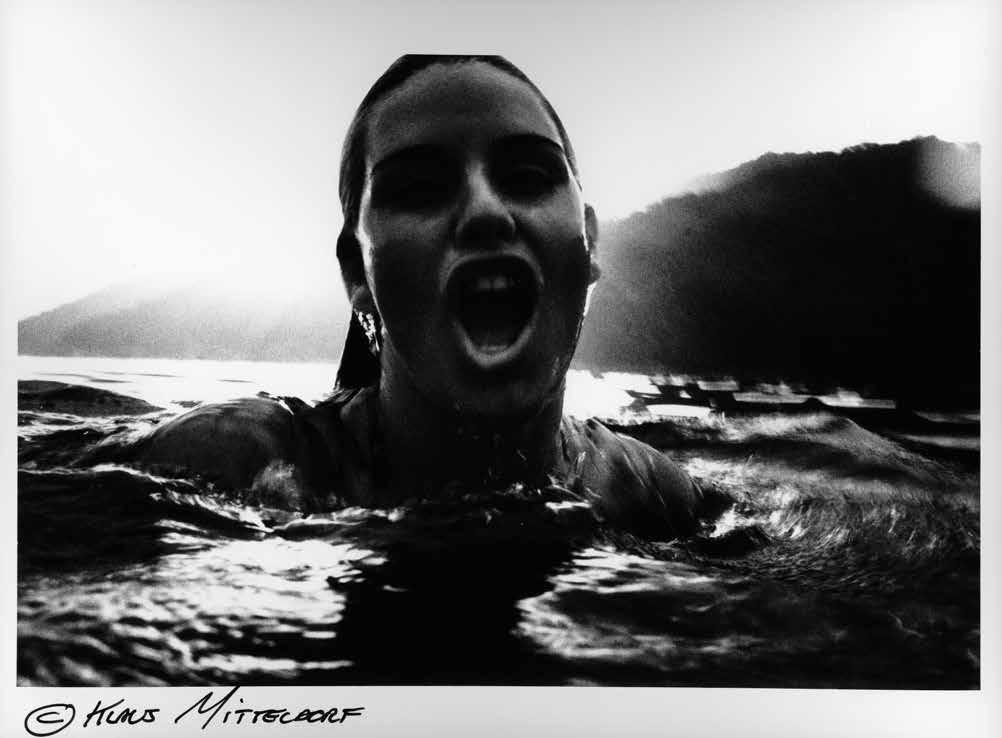
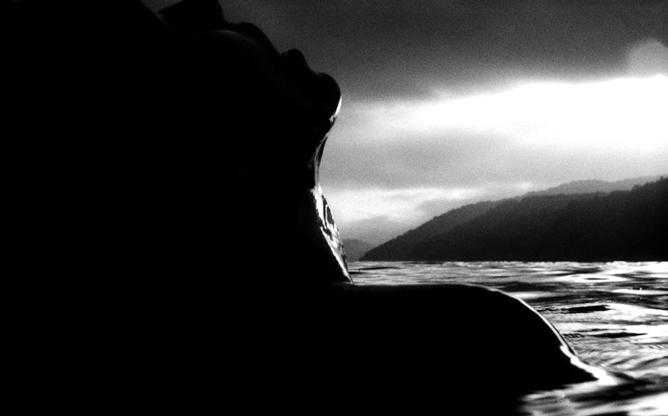




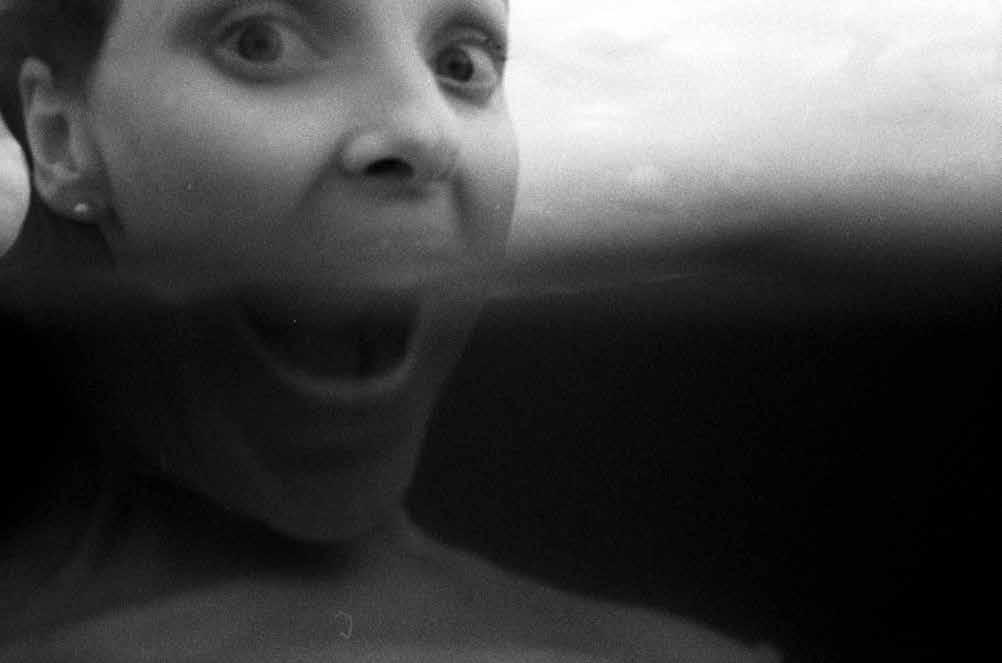
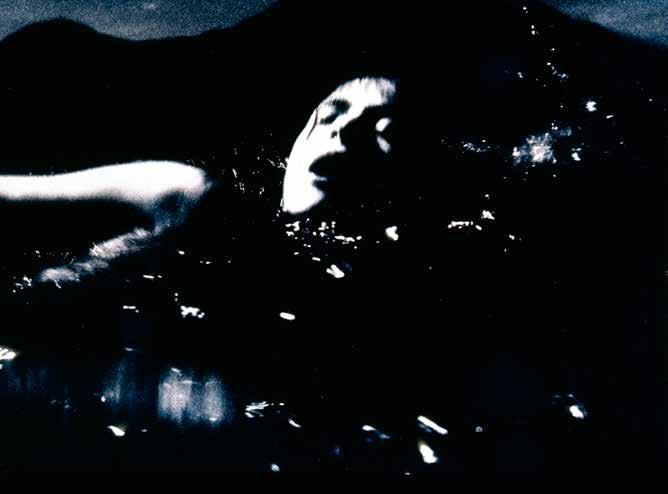
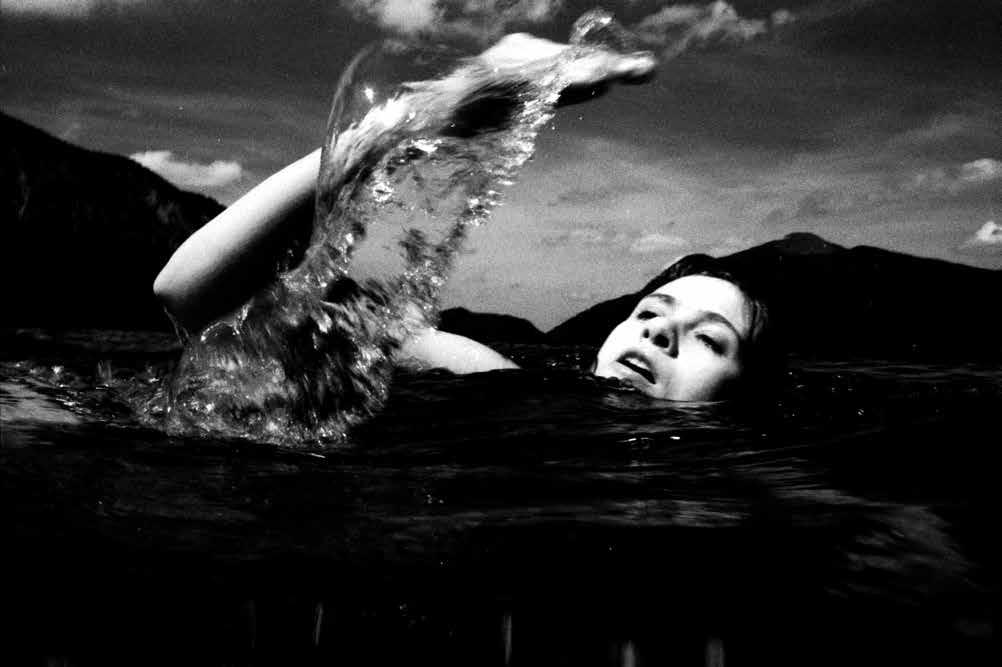
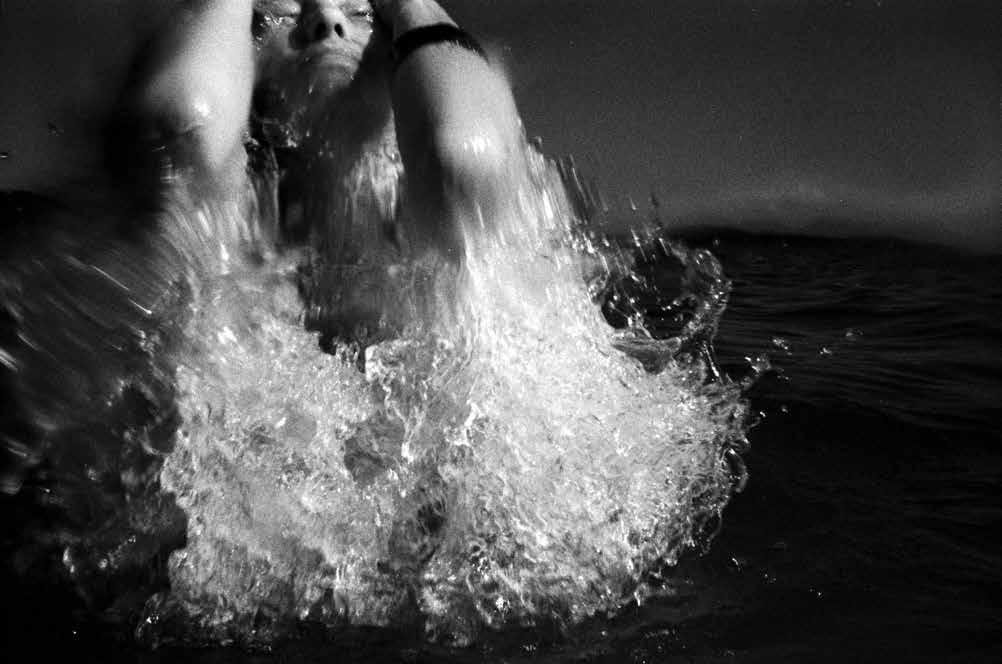


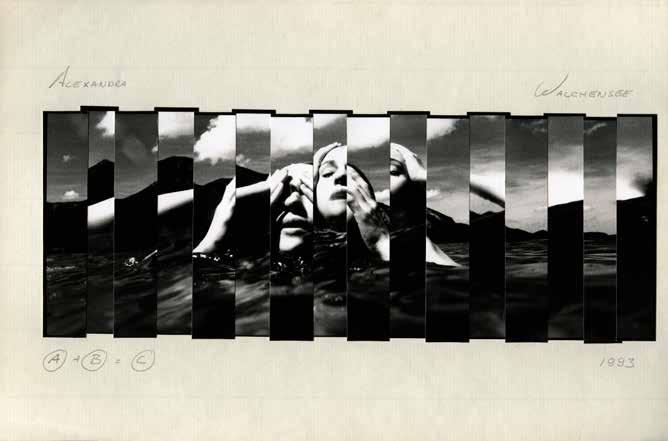
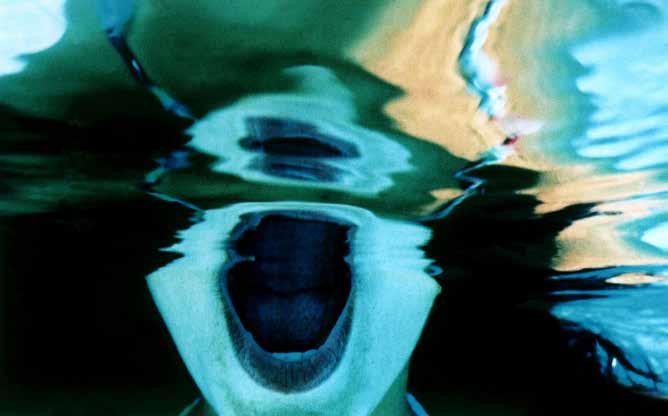
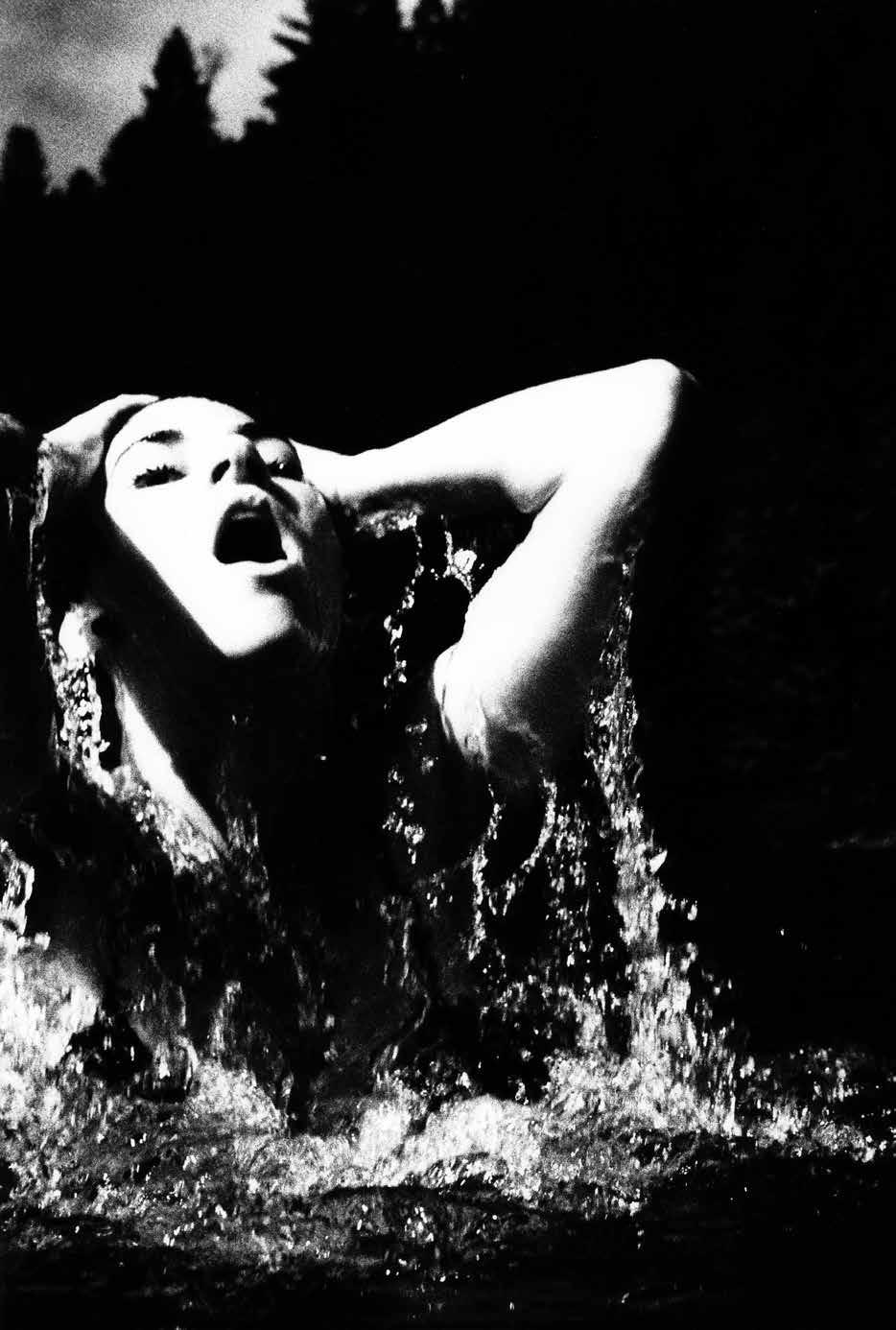
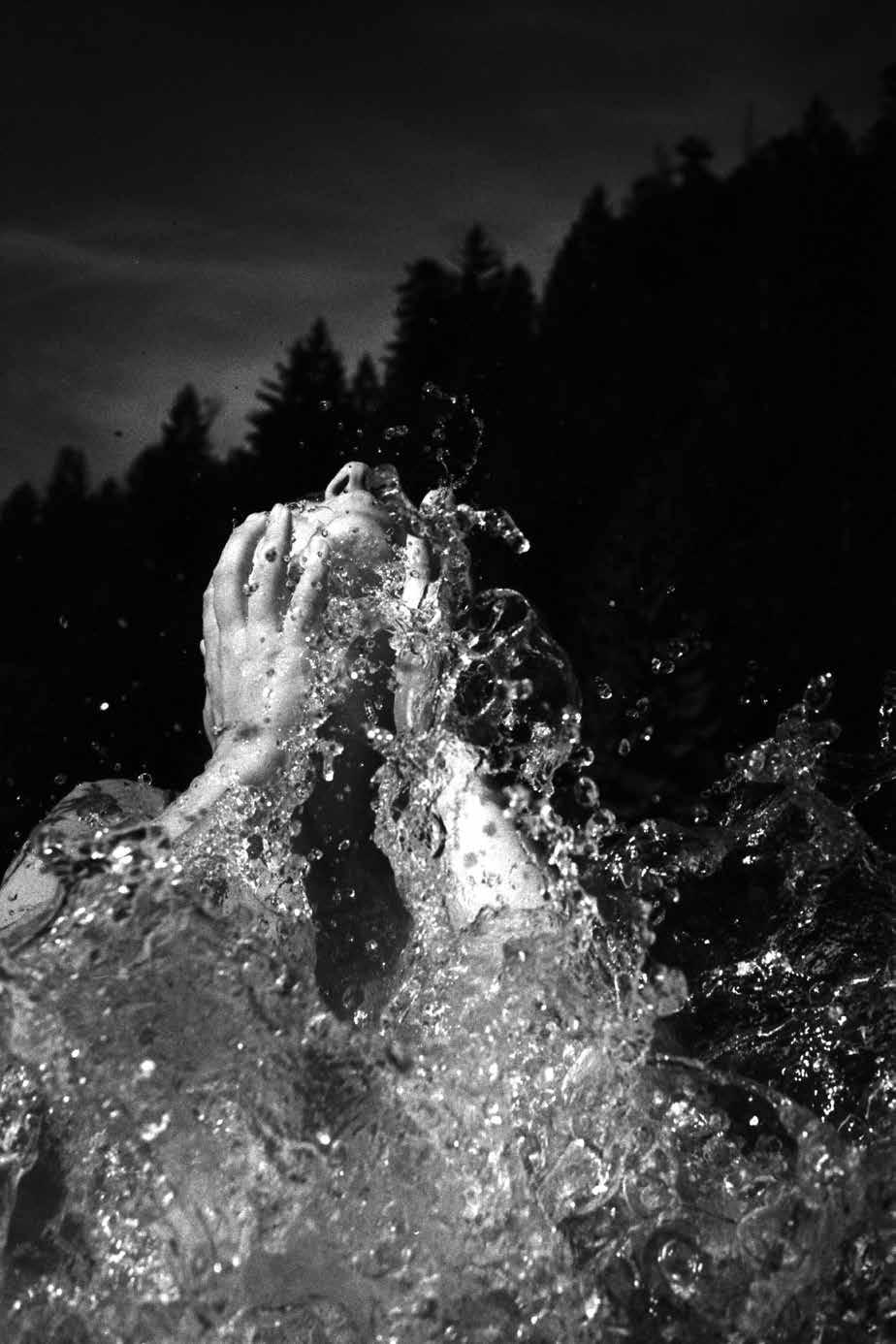

FROM THE NEGATIVE TO THE SYSTEM
The other’s Gaze emerges from beyond. It resembles nothing: only itself. A photographic portrait is a revealer of this frontier: It can go from nothing to the world beyond.
From the almost surrealist essays where characters emerged from the waters to meet other bays and cities , and later naked bodies, the image of the missing saint, a disguised self-portrait, and beyond, when all the movement of the visual muscle found another/same/even more abstract direction in superimposed figures and portraits with glasses and a brain also scattered through the streets . From then until now, a decade and a half has passed. Klaus Mitteldorf finally arrives at this time of today, agoraquando (now-when), fragmented, and delivers to São Paulo his “virtual and technological” system. The twin towers have fallen; war has become as popular a spectacle as soccer; advertising offers human feed to strengthen the health of your neighbor; and Brazil, in its popular ultimatum, has created a language with no plural, where its “new” children, always in ascending order, try to open the airplane window on their first honeymoon flight. Inside, we are emptier still. With all this daily celebration melting away seconds, photography has forever established itself as a language of speed, of flow, and of confrontation between what is appearance and what is memory. When? Now?
And so the photographer, using a cell phone and a lowdefinition camera, took to the streets to deal with what interested him in the city where he lives and observes. He started from his personal archive, where more than three decades of his history are preserved, to the day after. São Paulo Blues is about this experiment between what is perpetual, virtual, and technological. Between what is offering and what can be imaginary. Matter or meaning? Mitteldorf — with his interpretation plates that in some cases transform negatives into positives/originals inverted
to negative/positives revealed as negatives — moves forward in quick takes seen from inside buses, on rusted avenues, in scenes lived in Capão Redondo between music and raw, naked reality. In his wanderings through the city’s backstreets — those that many who live “on the other side” can hardly imagine truly exist — he witnessed the people of crack in their oldest haunts, where now there is only rubble. These are images of that public wound where each user fights for their rights: on a visit during a political campaign, when everything is promised, a certain senator walking through the city centre heard the plea of a passerby: “Your Excellency, we no longer have space on the street. Why don’t you get a building and just verticalize Cracolândia? Put us in there and let our collective suicide roll.” The spectre of that man is in the photograph.
In a game of doubles, and to launch “São Paulo Blues”, Mitteldorf took as inspiration the painting Lilith (1987) by the German artist Anselm Kiefer, also a sculptor who often uses photography as support for his work. It is a piece lit in tones between ochre and brown, where São Paulo is seen from above, sprawled with its muscular buildings and interlinked veins. Seeing them — the painting and the city — it becomes inevitable to dive into their depths. Mitteldorf made a similar image, lighting and setting aflame a panoramic view in the upper 30%. Dust, dirt, and disappearance between concrete and mountains. It is the penultimate image of this book. If in Kiefer everything is coded through what the artist seeks to represent the past, memory, and to face what lies ahead, Mitteldorf’s intention with his blues codes is to deal with this same decoding/representation in the city he inhabits, to go beyond the painting and the myth of the first woman, Lilith — created equal to the first man and expelled from Paradise for trying to claim that equality. One turmoil inside another. One city inside another.
It is this tangle of motives that opens “São Paulo Blues”. A view from the bottom up, the wires of Capão Redondo, a geometric construction in graphic despair, a kind of headphone through which the voice of reality screams, only to soon after
have the non-imaginary world meet the verticality of myths that become part of the earth: now the buildings appear as cutouts; now we are here walking over the old stream, the Anhangabaú Valley; now the satellite dish casts a rounded shadow and that barred window integrates into the blazing panorama as much as the sound of the headphone that vibrates outside because, behind the bars, under house arrest, we still need to breathe. It so happens that before today, someone passed by here and scrawled in German, on some remaining wall: bodenlos — without ground. Inside the city, without ground. “São Paulo Blues” goes beyond photography, in a chronicle that immediately poses a question: what does the artist intend to “see” from here on? Is this a photography book? No, a book. A book in search of calm? A book of despair? A book of reflections? A book of mirrors? Even being a worn-out word, a mirror will always be a mirror: “A woman without a mirror and a man without selfconfidence — how could they survive in this world?”
A sepia light bathes the seat of Mano Brown’s car, from Racionais MCs. In semi-gothic letters it reads: “Vida Loka” (crazy life) You can still see a small shadow of the rearview mirror with some beads (a kind of talisman) hanging. It is in that sliver of mirror that the singer looks at himself and glances back as he drives, seeing the city and its passersby go by the side of his life and the side of others’ lives. Neither the singer nor the city is absent. This is a detail photograph. A summary. It is not an image of appearance. We are talking about a record of memory and imagination. Photographs were made to be interpreted. “São Paulo Blues” is an essay to be interpreted. Nothing in it is easy. A few pages earlier, the same icon, another car (what do men really prefer: self-confidence or a convertible? These days you can finance the latter in up to 90 months), graffitied on the gate of a house displays a period model to proclaim: “Peace! For Those Who Deserve It!” Bang. Bang. Bang. .38 caliber or Taurus 380? No, the shots are inside us. Hollow. Reverberating into eternity. A simple photograph points to the future: “For Those Who Deserve It!” And once again, the page of the book opens: “I am not of
peace [...] Peace is for the rich [...] Don’t ask me to cry anymore. I’m dried up. Peace is a disgrace. Carrying that silly rose in my hand [...] I won’t put on that blank face. I won’t pray. I’m not the one who’s going to take the square. In that crowd. Peace solves nothing. Peace marches. Where does it march to? Peace looks beautiful on television. Did you see that actress? On the trio elétrico, that actor?”
“Peace for those who deserve it!” That’s it. Page by page the word changes constantly, just as the photographs of “São Paulo Blues” may change. But what is a photograph if we cannot see it? Nothing. No photograph is ever the same when we look at it twice. And what is a book if we do not open it? Jorge Luis Borges answers that it would be “just a cube of paper and leather, with pages. But if we read it something rare happens: it changes at every moment”. No photograph is ever the same when we look at it twice. A photograph is like an open book: it can change at every moment.
Diógenes Moura Writer and photo curator

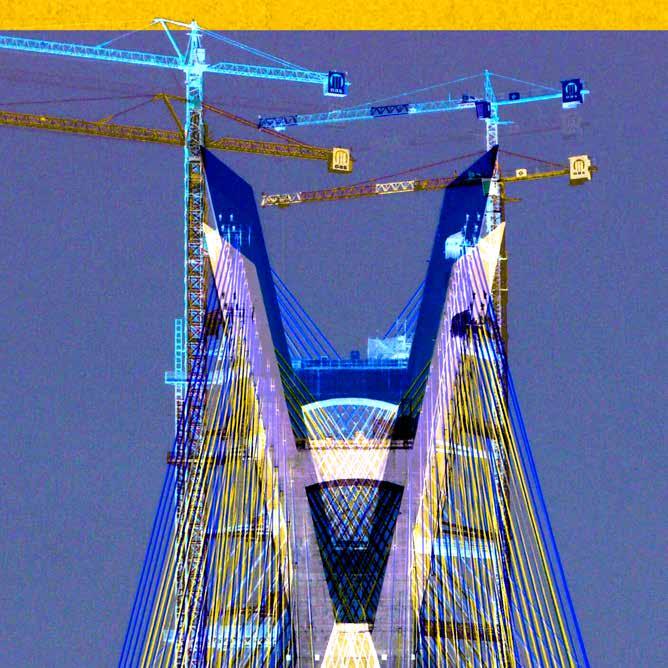



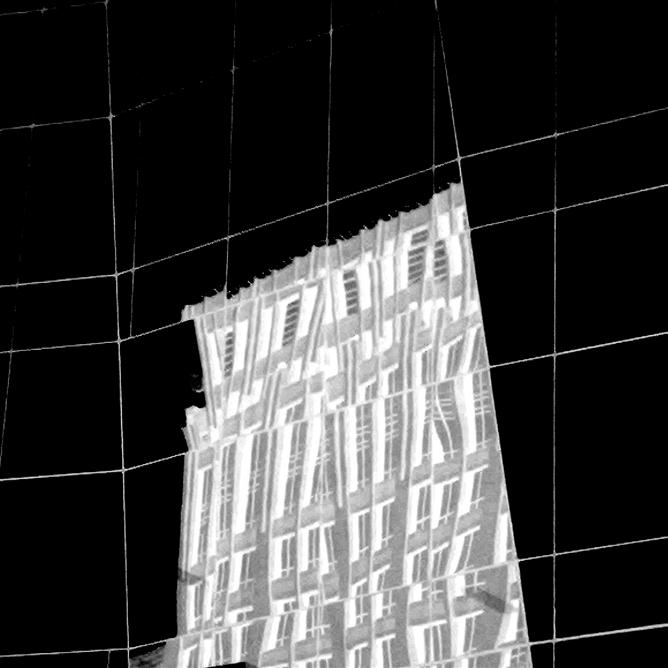


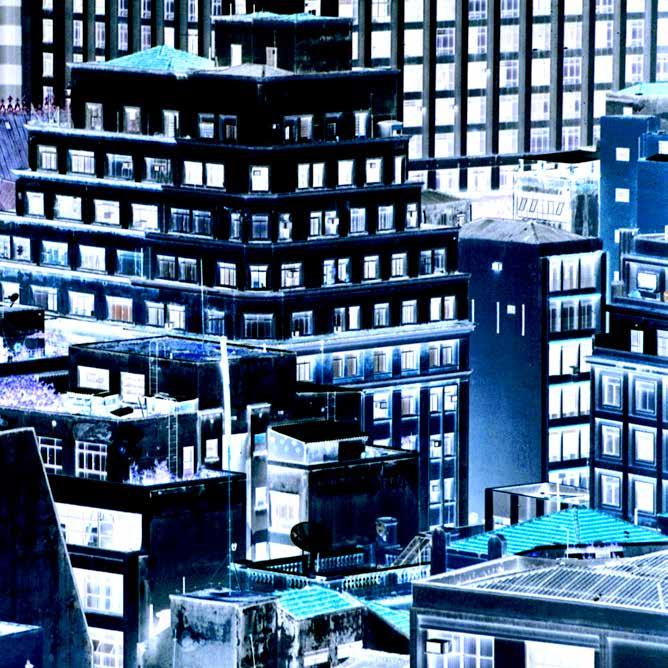
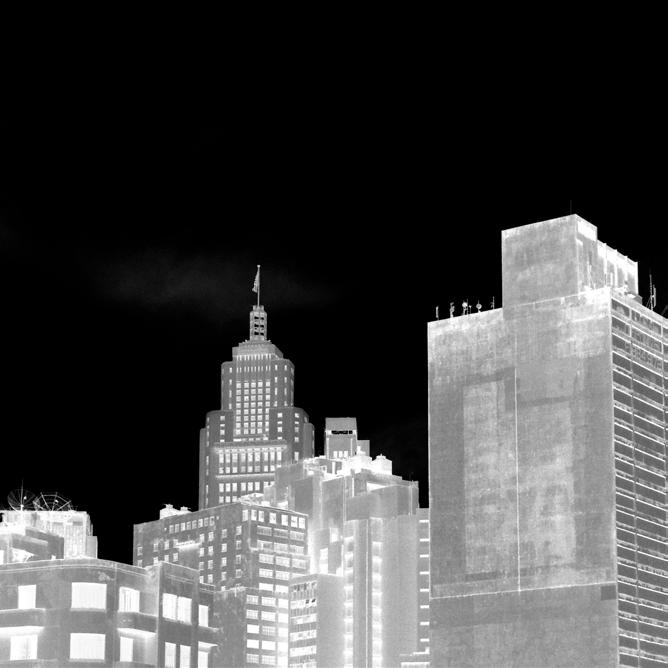



ACQUA
If words help us define people and things and create concepts, it becomes very difficult when we try to find an adjective to define Klaus Mitteldorf.
Perhaps the one that comes closest to him is the word investigative — or better yet, curious. But words — as often happens — are not always enough to explain or to tell what we mean. Mitteldorf manages to gather a myriad of knowledge and transform it into information through the construction of images. It may sound obvious, but it is not when we speak of Klaus. He manages to surprise us at every moment. He always comes up with something new, which, like the alchemists, he transforms into a striking image.
To think of Klaus’s images only in terms of extreme sports is far too little, given the variety of work he proposes to us. Restlessness, perhaps, is another word that comes to mind when we think of Klaus. From an early age, he always wanted to experiment, discover, and go beyond the limits imposed by film leaflets or the dogmas of photography: “I am a contrarian. I have always liked to go against pre-determined formulas that try to tell us what to do and what is right. I have always loved to research, and it was this research that determined the character of my work”.
These characteristics turned into saturated, contrasting images — but not harsh ones. They are images full of sensuality, of fluidity: “an image without contrast is not one of my photos”. His beginning in photography, however, did not come through research or study. It happened almost by chance. Often, we have the impression that it is photography that chooses us, not the other way around. It imposes itself: “in photography I found the place where I could be rebellious — not in a bad sense, but in the sense of being able to go against the current”. In his family, there was no tradition in this area: “my father was a chemist, my mother a housewife, and my siblings are all
engineers or managers. My artistic culture came from the school I attended, which was a Waldorf school. A school that taught me to work with forms and materials: I learned woodworking, ceramics, I learned to work with fabrics”.
Unlike many photographers of his generation, his idols were not connected to either photography or cinema: “I always read a lot, but my books were more about history, including art history. Painting and sculpture influenced me much more than cinema or even photography itself”.
But at a certain point, photography entered his life — or crossed his gaze. And it was through photography that he learned to see, to feel, and to realize that it would be the most fitting medium for him to express himself. Photography, which since its beginning has always been generous — adapting well to all forms of knowledge, helping to turn the invisible into visible — also adapted well to Klaus Mitteldorf’s need to translate, in a synthetic yet mysterious and subtle way, what he felt — and still feels — in his soul.
At the age of 13, he received his first camera — a Yashica. It was with this camera that he discovered the fascination of the image. It began to accompany him everywhere he went: “I loved photographing my friends; I was already trying out some experiments, but of course, they were all very bad. But I loved photographing”. Perhaps they were unpretentious images, boyish, curious — but over time they became what the French theorist André Malraux (1901-1976) defined as an “imaginary museum,” that is, chosen and sculpted images that we keep in our minds and bring back to the surface to produce new ones. Not just any image. A critic of his own work, he was never satisfied with what he produced. It was the late 1960s: “I compared what I did with other photographs I saw and could not understand how photographers achieved certain results, and I thought everything I did was nonsense, meaningless.”
But that feeling, instead of discouraging or paralyzing him, gave him the drive to go further, to experiment again: “I
set up a lab in my bathroom and spent days developing and enlarging. And it was during that time I spent in the darkroom that I discovered a series of things that became important not only for my photographic work but also for my personal life”.
Photography became his notebook, almost an interpreter between him and other people. Shy at first glance, he transformed when he saw the world through the lens: “people understood me through my images and liked what I did. It was through the eyes of others that I learned to like what I was doing”.
This, of course, brought him greater self-confidence and the possibility of continuing this path that gave him pleasure, that brought him peace.
Like many photographers, Klaus Mitteldorf also comes from architecture school. He entered the Brás Cubas College in Mogi das Cruzes, São Paulo, in 1974, at the age of 21. College was very important to him: “I created a really cool circle of friends, with people with great minds. With them, I began to travel, go to the beach. I learned to surf. And it was in this coexistence that I realized that I liked to document this life I was living with them”. Water is a source of inspiration in his photography. Perhaps due to the familiarity he built over the years: “I have always been fascinated by water. I like to photograph the fluidity of water, wet bodies. My photography is very sentimental. I am a very intuitive person”.
It is true — but we must not forget that the same calm sea often transforms and overwhelms us. If it fascinates, it also frightens. And that was another challenge Klaus accepted. With his youth friends, he discovered surfing. And he learned to surf precisely because he saw the beauty of photos taken in the water. And it was exactly the beach and surfing that gave him the chance to become a professional in imagery: “I began working for a magazine from Rio, the first surf magazine in Brazil, called Brasil Surf”.
While surfing, he continued his studies at college. But perhaps instead of designing architectural projects, pencils and
drafting tables were tracing a new life project. When he finished college four years later, the profession of architect had already been archived. Klaus had already had his photographs published in several magazines: “I even worked with Bardi for Arte Vogue magazine, photographed for Pop magazine, covered surfing championships, etc. In fact, I started as a photojournalist, but then, to feel more independent, I decided to set up my own studio”.
And it was in the studio that he allowed him to create his imaginary world, drawing from his image archive the scenarios he had been building for years. Closer to fashion than to advertising, it was in the studio — which he turned into a “creation lab” — that all the inventiveness he had stored could finally come to the surface: “Fashion taught me to photograph people, to direct. Besides that, it allows me to show creativity”.
And not only when conceiving the image. In his eagerness to create, Klaus even went as far as to “invent” clothes. He would draw, a stylist would turn his drawing into clothing, Klaus would hire a model and photograph not only the fashion setting but his own clothing: “only fashion photography allows this freedom. It is relatively free. You must reinterpret an existing element — the garment — but you can place people in many ways. Fashion photography is where I feel at home, where I can create in every sense.”
But it is not always like that. Often, depending on the client, fashion photography is so commissioned, so restricted, that it does not allow any great flight — but within what is possible, Klaus seeks that freedom.
That is why he has often attempted independent productions: “on vacations I always did shoots I wanted, also as experiments. I set up scenarios, called models, brought the clothes I had made, and...”
In these processes, beyond photography, came the discovery of another passion: cinema — directing people, creating stories through a sequence of images: “I take great pleasure in directing. Today I like making films. In fact, in the
1970s, when I started photographing professionally, I also made films. Very bad ones. I used a Super 8, and who taught me was Jean Manzon . I filmed and photographed. Over time, I ended up dedicating myself to photography, leaving cinema for later.”
Not much later, since he is making films now. This is yet another of Klaus’s abilities — not compartmentalizing life but knowing how to take advantage and bring together all the knowledge he has acquired over the years. Not an easy thing in our society, which demands that we constantly take sides in a manichean this-or-that way. But that does not work for Klaus.
While thousands of photographers or pseudo-image theorists complain about the incessant production or the banality of the image, he — with a gaze that still holds the daring of youth — takes this moment for yet another experiment. His most recent interest is directed at cell phones “that photograph”. Instead of complaining about the low quality of the images or using the phone just as a toy, he paid attention: “this texture, which some think is bad, I find very interesting. I cannot get this type of image with my equipment. And since I love working with textures, I discovered a new source. I am really enjoying this experience”. So much so that, despite some people turning up their noses, he will soon publish a book precisely with these images that many consider disposable and unworthy of being in a publication.
That is why we can say that photography has taken on a vital role in Klaus Mitteldorf’s life: “photography, above all, is very good therapy. Besides having fun with it, it is a source of selfknowledge, and that is why I love photographing both at work and on vacation. It has helped me communicate with the world”. But it is not just that. Photography helped Klaus change his way of seeing the world: “it helped me see — much more than I knew I could see. It broadens your horizons and helps you see what you didn’t believe you were capable of seeing. It makes you believe in what you are seeing. It is in photography that I take refuge whenever I have a doubt.”
Simonetta Persichetti

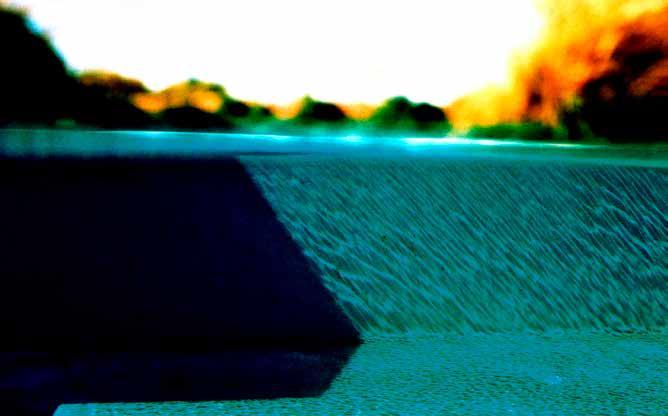
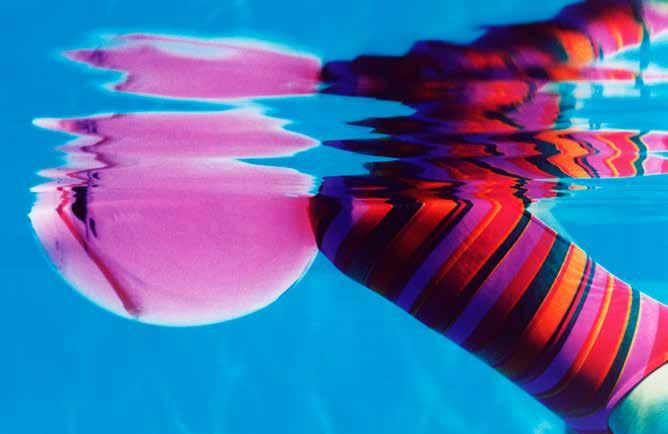
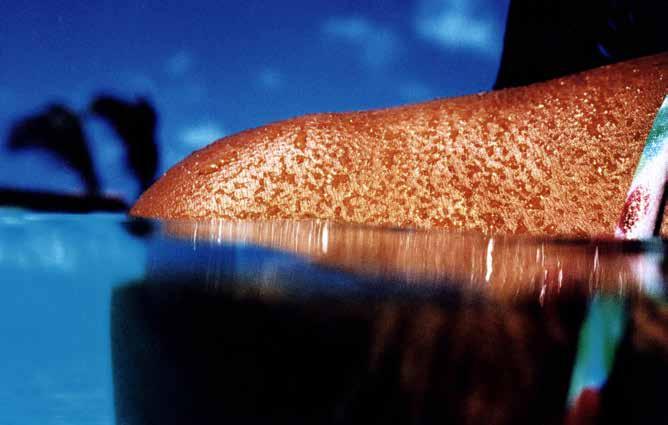
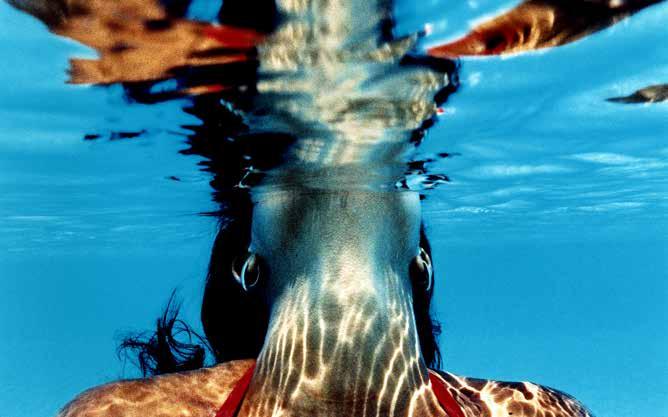
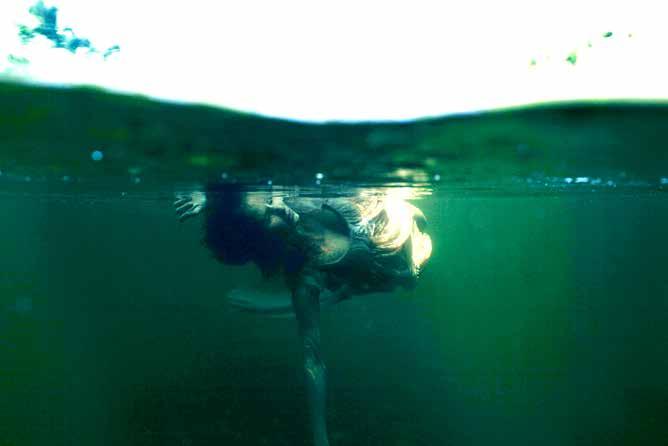

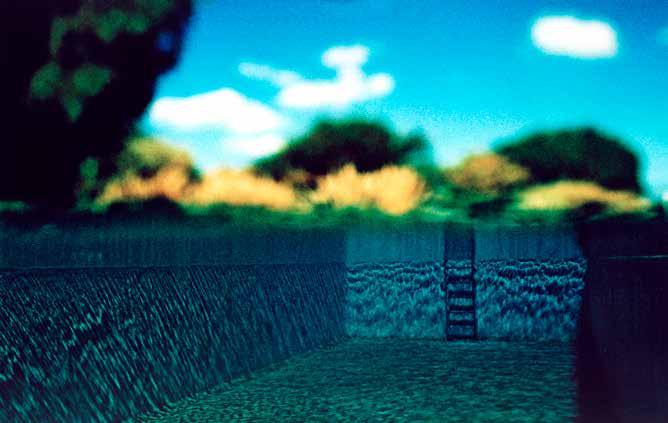
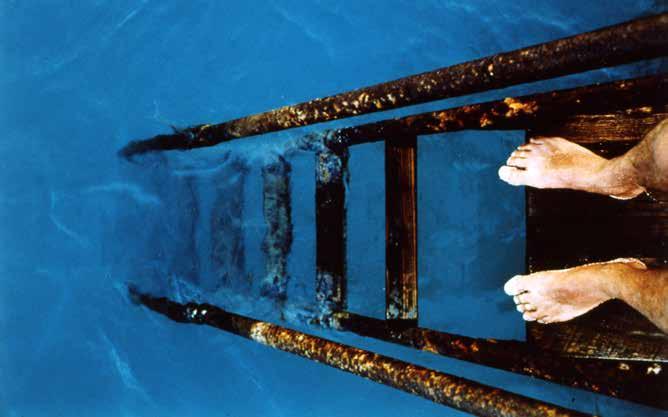

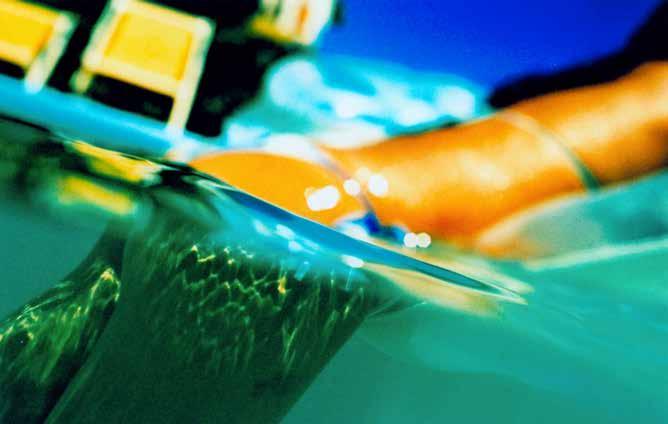

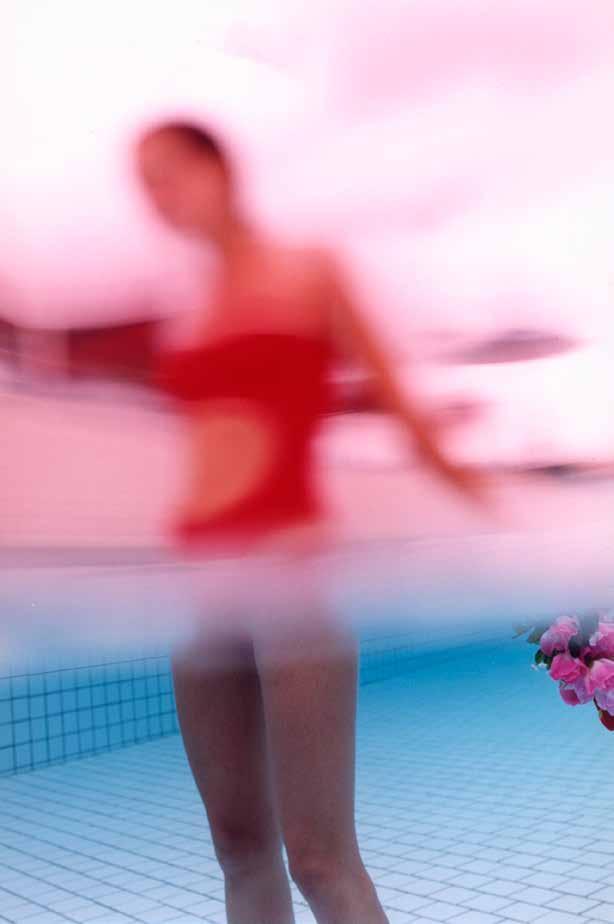
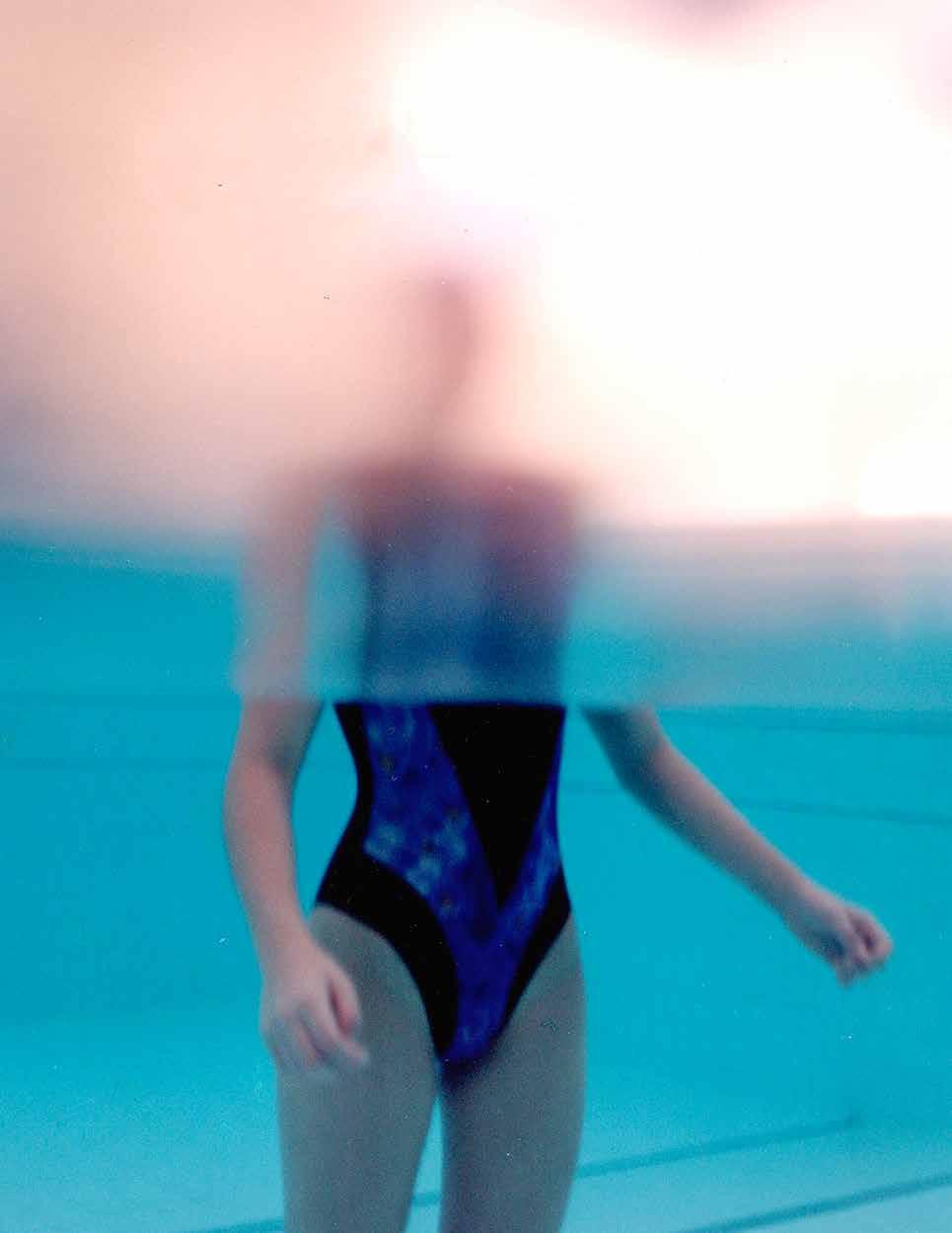

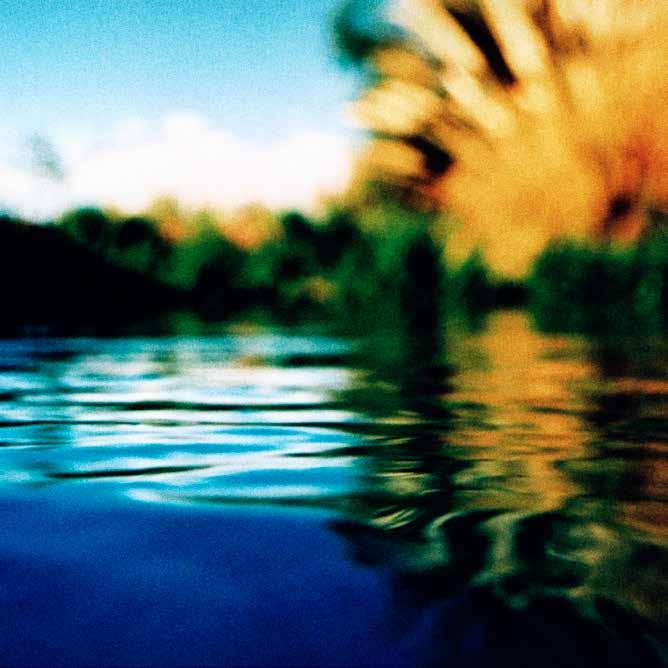
PHOTOGRAPHY AS WRAPPED WATER
If the images in “Introvisão” are liquid, and if, when confronting the other, we hold to the idea that photography will always be a self-portrait, what Klaus Mitteldorf signals in this series is a tactile provocation within a very fragile visual field (the gaze) and another way of thinking about how one sees — toward the other (before) and toward oneself. It is within this almost sculptural material — three-dimensional in its shadow-box contours — that the photographer throws himself into the abyss: seeing seen by the gaze. By delving into the senses that only vision transforms into life and death, “Introvisão” allows each image to free itself from itself: what is seen is not what is looked at. One sees what it contains, as in a game of beginnings, the reflection of that other, the one who is naked beyond the front, within oneself, he himself, the other.
Klaus Mitteldorf has always wielded his scalpel before the exuberance of colour. He is a photographer of layers. In earlier moments, he turned bodies and wet landscapes into abstraction, as a supplement for a psychology in which reality could confront itself with a make-believe construction. This is why he maintains a contextual relationship with painting, most precisely with a strong passage through a Matissean facture: light touches in a poetic explosion that redeem colour. There is a glancing perception in his images. By plunging beyond form, the photographer establishes a symbiosis, without allowing that possible play of synonyms to lead the revealed soul into the field of explicitness. This agreement is only possible over time. Mitteldorf probes his photography with images of a memory that, when meeting the possibilities of what now stands before his camera (the other tactile object), evokes literature as a “matter of emphasis”: without distortion, the gaze of reality elevates the temporality of the dream. This is the abyss between matter and distance.
In the moments when the photographer crosses the line of colour to reach black and white, and to see through the
eyes of others — himself — the instructions for use remake the transparencies. Cut like themes from cinema, here lies another question: photography almost as an installation within its present body (the next tactile object). Without wounds, “Introvisão” reaches the third eye to return to the initial theme: seen in transparency, the image turns toward itself and recognizes human existence as part of a corpus with no interrupted flow — sometimes paused, so that the gaze may return to the state from which it came; at other times announcing the fluidity of balance, so that the poetics of imagination may write its days; at other times still, immune to time, because there photography recognizes itself, to reflect the spirit of what others are — those, the ones here, ourselves. This is the abyss like wrapped water.
Diógenes Moura
Photography Curator
Pinacoteca do Estado de São Paulo
Introvision (2006)


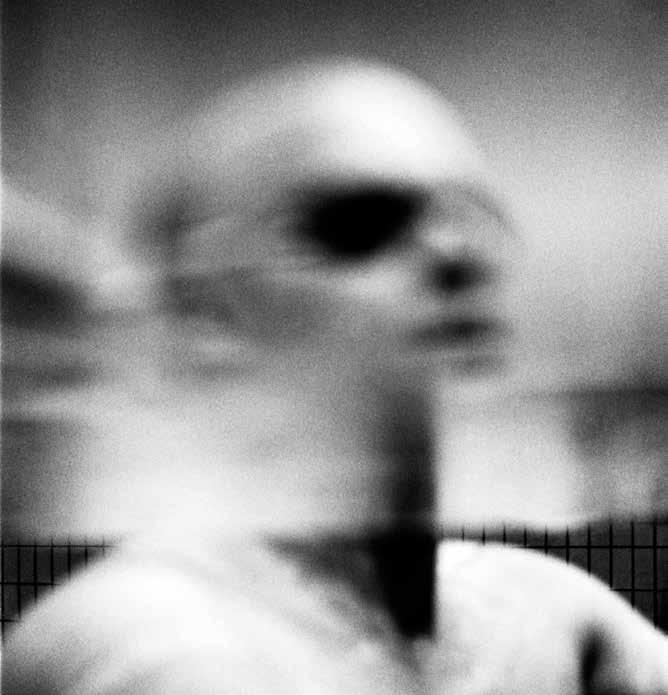
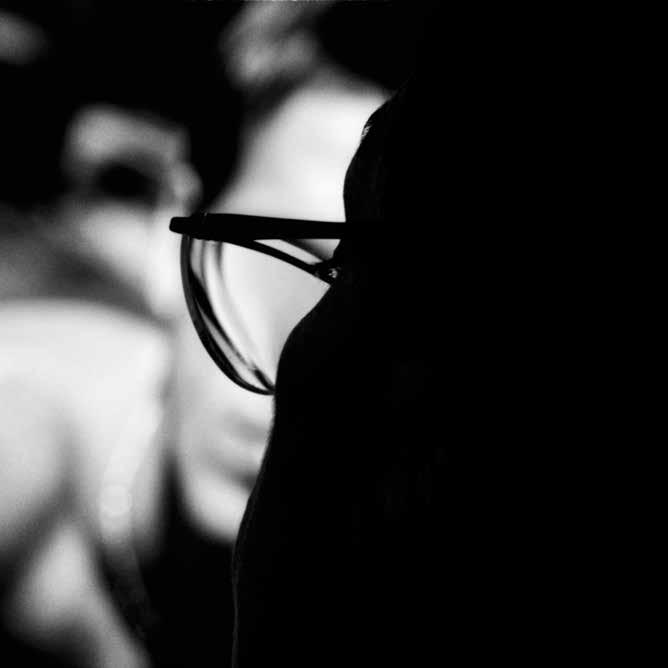


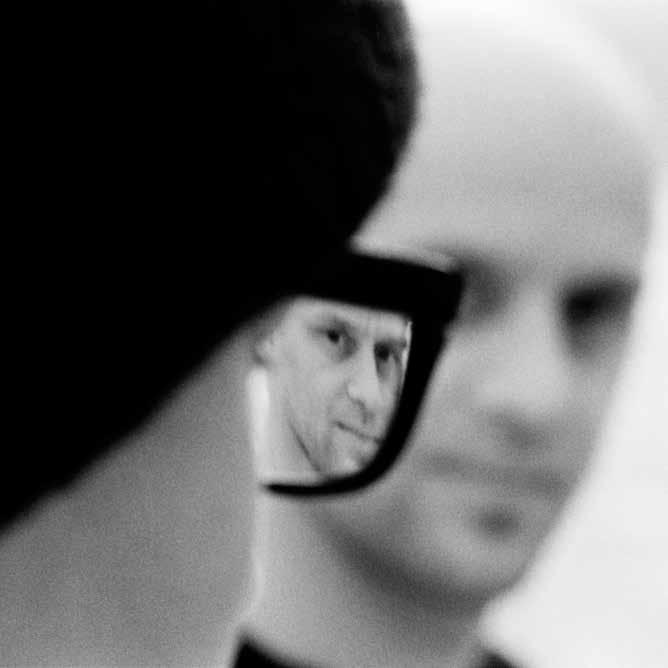


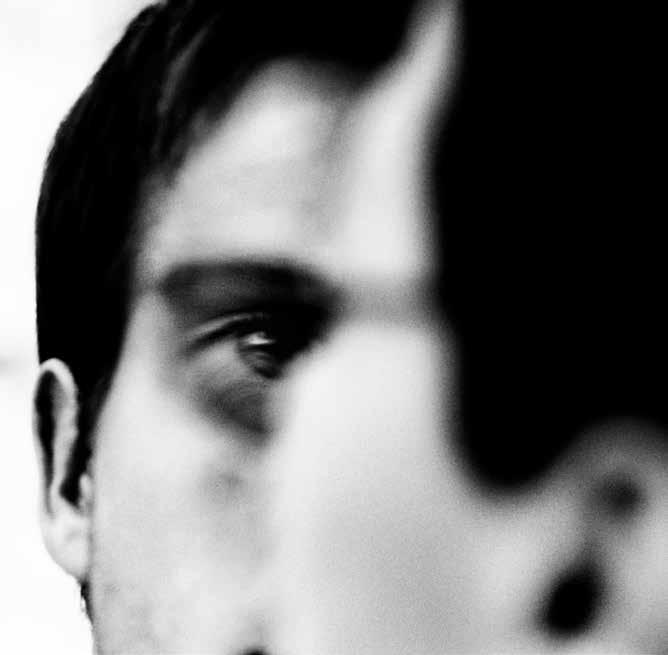
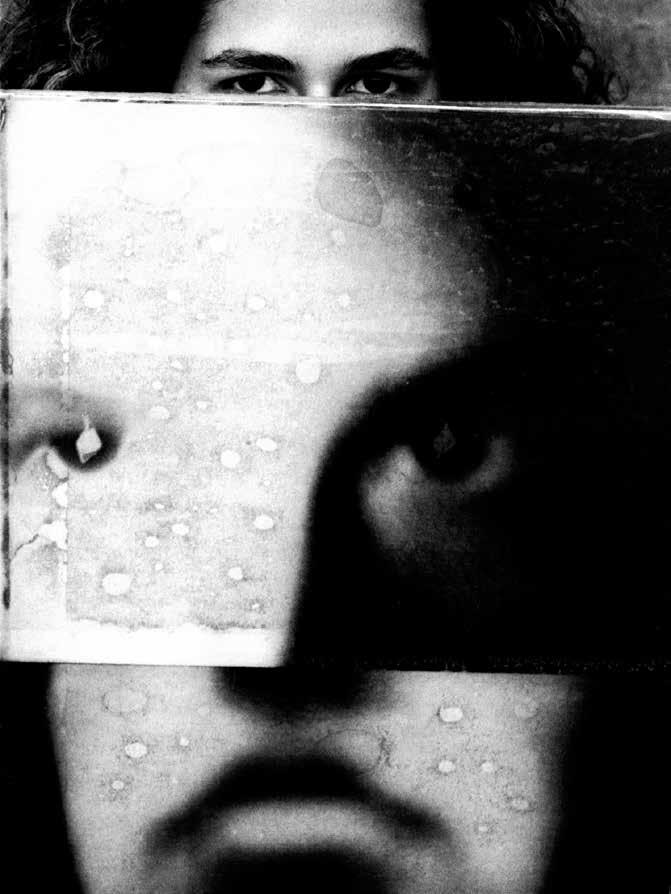

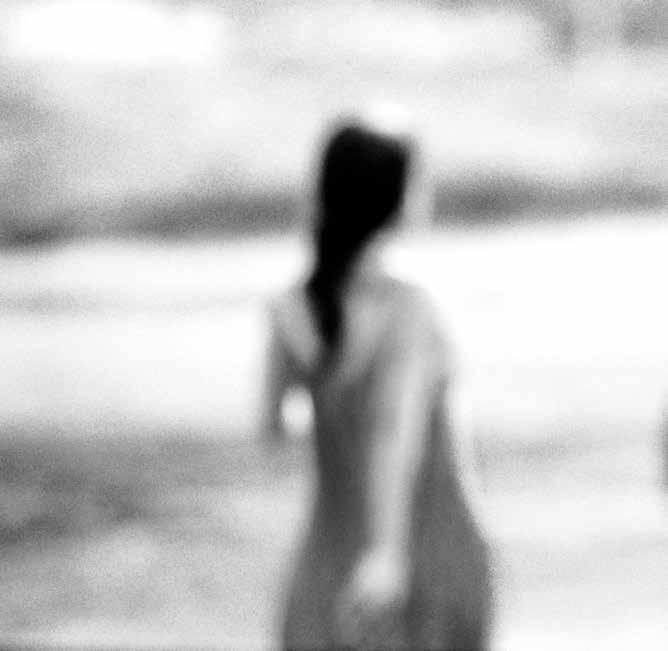
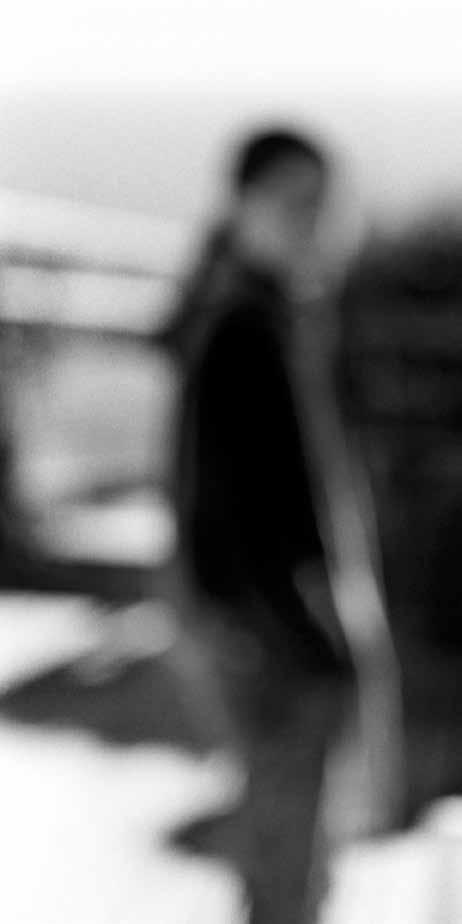




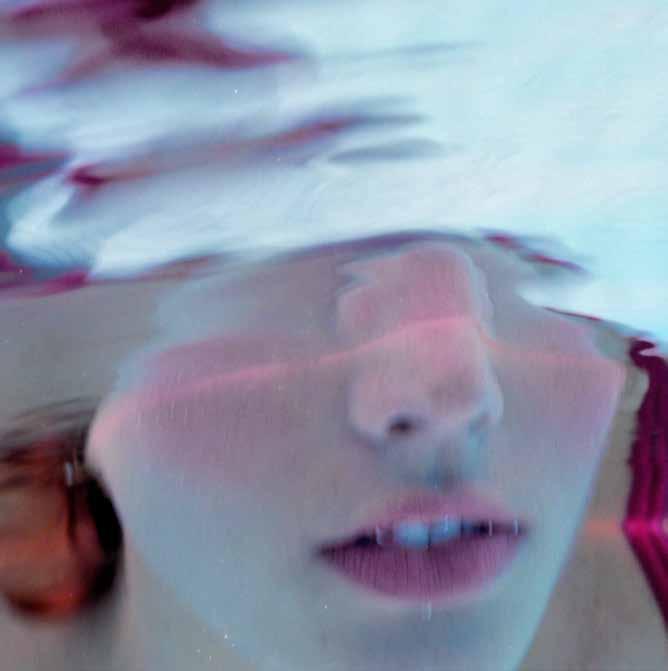
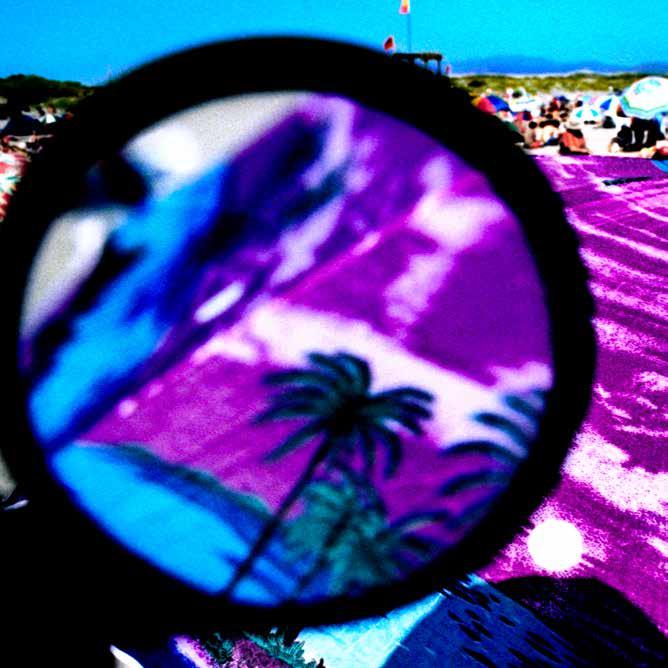

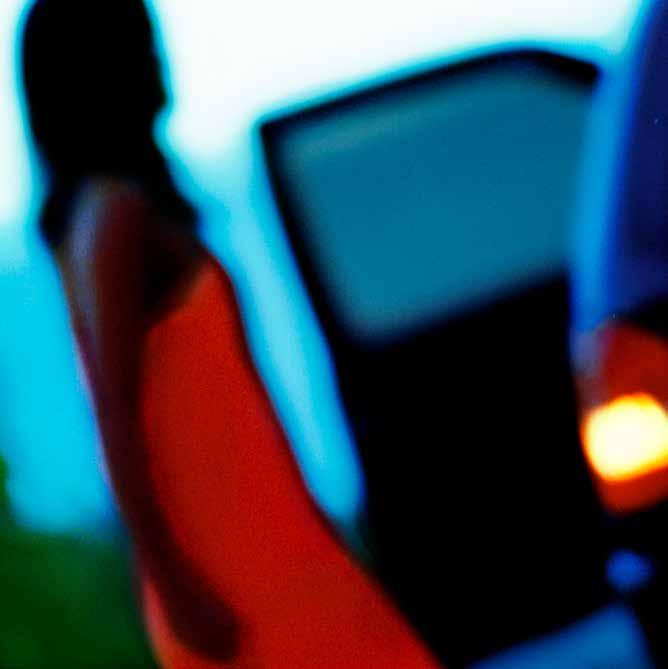
NEXT: COMPLEX VISUALITIES
“The arts are not conceived as historically invariable actions of humankind, nor as an arsenal of ‘cultural goods’ that live in a timeless existence, but rather as a process that unceasingly advances, as a ‘work in progress’ in which every artwork participates.”
Hans Magnus Enzensberger
“Next” is a new series of images created by São Paulo artist Klaus Mitteldorf. It is unlike his first photo shoots, with their stunning syntheses of shapes wrought in an exuberance of striking colors, evincing a profound influence from his German origins on his visual production. They are also different from the pictures he made during his monochromatic forays, sometimes exploring the dramaticity of black and white, sometimes navigating through the blues. He studied architecture and was a surfer along São Paulo’s North Shore where he made incredible experiments as a pioneering surf documentarist using Super-8 cinema; he has lived in Germany, created photographs for important national and international advertising campaigns, and worked as a fashion photographer and movie director.
Throughout his wide-ranging, successful career, he has needed to master various optical codes and visual languages while transiting through a succession of mutually distinct phases, in ceaseless movement, plotting new courses for his nearly always explosive, uneasy photography. Currently unbound from commercial restraints, his production is now graphically and artistically bolder than ever. All of this has garnered his work an unquestionable position of importance within the context of Brazilian photography produced over the last decades.
Perhaps the artist’s most noteworthy characteristic is precisely the continuous flow of his production. In the series “Next”, the photographs – can we still call them photographs? –not only captivate our gaze but also throb on our retina, making our central nervous system shift into high gear to unravel the
visual puzzle it is faced with. I would say that it is nearly impossible to re-encounter the different times and places present in these pictures; when we can, it is through the help of clues provided by their titles. Not that this is important, but in the Western culture we are all immersed in, we are always seeking to discover the true meaning of what we see. It is hard to allow ourselves to be simply swept away by the beauty of the shapes or by the thrill of the signs that pulsate in each of these images.
When asked about their nature, Klaus Mitteldorf sidesteps: “I don’t know how to explain it, but the first thing I knew, I was taken over by the need to create these images”. Certainly, they do not fit into any category or trend of contemporary photography. They synthesize this globalized world, where millions of devices and applications are available to all who wish to visually document their everyday life. In Klaus’s visionary view, even though we see the images one by one, they actually “massage” our retina intermittently, as though they were superimposed on transparent, vibrating layers.
Canadian thinker Marshall McLuhan, the precursor of the concept of the global village, stated that “There is absolutely no inevitability as long as there is a willingness to contemplate what is happening.” This is precisely what Klaus evidences in his images. In other words, in the not-so-distant future we will be seeing in a way predicted by the mechanic world, as though the mechanic visual possibilities anticipated what we would soon be seeing. McLuhan was also a pioneer in stating that each technological moment gives rise to a perceptually new man. It is enough to consider how sensorially different we are from our ancestors.
Certain historical shifts in visual language, of which we are already aware, can be associated with the images of the “Next” series. While the photo shoot foreshadows new perceptive possibilities, it also points to other moments of aesthetic rupture as a reference. The photo series “Next” inevitably brings to mind the experiments of Eadweard Muybridge, of Etienne-Jules Marey, of photodynamism (the Italian futurism of Giacomo Balla and
of the Bragaglia brothers) and even cubism. In light of this visual vocabulary of movement, Klaus Mitteldorf proposes new visual configurations arising from his own experience as an artist who explores and elaborates other perceptive possibilities. As we know, the progress of art requires courage, boldness, and rebellion in order to create unlikely tensions and to counteract environmentally imposed visual patterns.
In 1967, Marcel Duchamp, in an interview given to critic Pierre Cabanne, stated that his greatest influence in making Nu descendant un escalier, 1912, was not cinema, as many people had thought up to then. Actually, what had really touched the artist were Étienne-Jules Marey’s pioneering experiments with chronophotography. Marey set forth the idea that photography could be more interesting if it did not seek to capture “the before” or “the after” of a given instant, but rather “the during” of the time span of a given action. This is an astonishing thought for those who still see photography as a mere documental record of reality. Marey’s researches were so important and decisive for the photographic language that they later paved the way to Duchamp’s revolutionary ideas, which, for their part, constituted a new paradigm for the visual arts.
Establishing paradigms in contemporaneity, independently from the media used, is nearly impossible. But artists unceasingly seek visual possibilities that record our own time or point to future paths. A photo series developed in recent years by Klaus Mitteldorf, “Next” is an imagistic proposal that requires a perceptually differentiated spectator. It uses the same bidimensional surface which has supported photography for more than 170 years, including the experiments of Marey, of photodynamism, and of cubism, which sought to revoke the perspectivist illusion and to instate new modes of sensing and assimilating other sensations made possible by the machinic world.
Klaus Mitteldorf has unveiled the essence of the contemporary mechanic world, centered on digital technology, and knew how to create based on software. The images acquired
a pop aspect that recalls some of Rauschenberg’s collages from the 1960s. But of course, beyond these possible references it is necessary to know about the artist, including his background and the procedures he uses. With know-how and perspicacity, Mitteldorf aims to question the photographic image, which for him was never the simple representation of reality.
His response is a radical one: he takes some of the machinic effects and articulates them with the visual universe he has idealized in his creative paths. Mitteldorf proposes an interplay of images where blending, superposition, transparence, displacements and other artifices trigger distinct sensations that intensify and prolong a supposed continuity of the photographic shot’s frozen moment of time. He gives rise to a different sensation of rhythm that stems from the dynamic of the movements; he is concerned with the intermovement of a gesture; he explores the perception of the gaps between the movements. “Next” furthermore involves a performative character that is likewise present in other photo shoots the artist has produced, for example, “O Último Grito” [The Last Cry], where a performance facet is discernible in the actions of the photographic subjects.
Now his photographs have taken on other visualities, even while maintaining some of the unmistakable features of the aesthetics of his previous works, including color and movement, which accentuate their pop character. Klaus Mitteldorf has always been impulsive in the construction of his images, whose complexity and provocative tone are enough to make the viewer question their veracity. But this is entirely consistent with the artist’s opposition to creating works with an unchangeable reality. “Next” unleashes a frenzied visual possibility without breaking away from a certain tradition, without aiming to be a disconcerting discovery; its original, authentic images come like a condemnation of the rampant imagistic banality of everyday life.
In his manifesto “Futurist Photodynamism” of 1911, Anton Giulio Bragaglia emphasizes that “we are certainly not concerned with the aims and characteristics of cinematography
and chronophotography. We are not interested in the precise reconstruction of movement, which has already been broken up and analysed. We are involved only in the area of movement which produces sensation, the memory of which still palpitates in our awareness.” More than 100 years later we come upon “Next”, the outcome of a free outlook that perceives the symbolic power of the layers that kindle the multiple sensations that pervade our gaze with transparencies and radiant visions of light. The interpenetrations and superpositions of the images evidence distinct times which nevertheless coexist in the elaborate ethereal space created by Mitteldorf.
The rich visual experience proposed by the artist makes “Next” a look into the future insofar as it tests our perceptions and proposes images in trance. It is simultaneously a look into the past, particularly into the sensations experienced by the Italian futurists when they declared that “thanks to the persistence of the image on the retina, things in movement are multiplied, deformed, and follow each other like vibrations in the space they cross.” This process of signs created on the basis of a prospective outlook is what makes the photoshoot ‘Next’ an innovative narrative in contemporary photography. It is the explicit wish to oppose an immutable reality.
Rubens Fernandes Junior Independent Researcher And Curator
Next (2017)

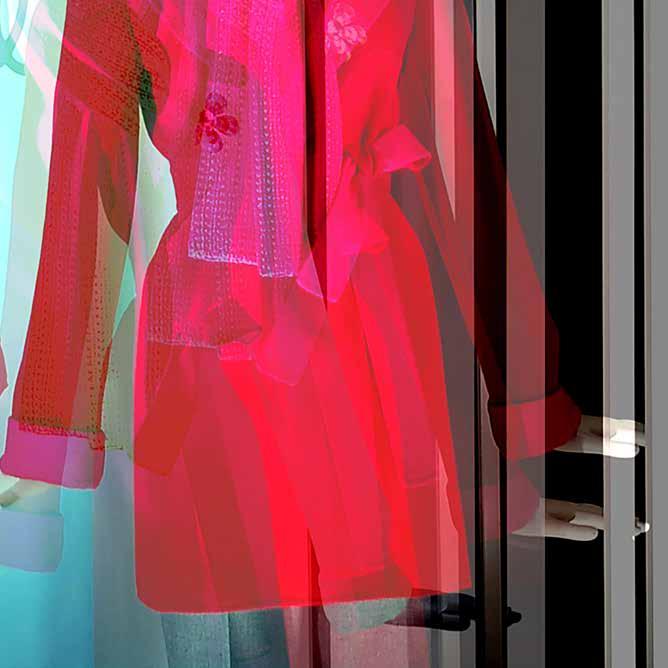

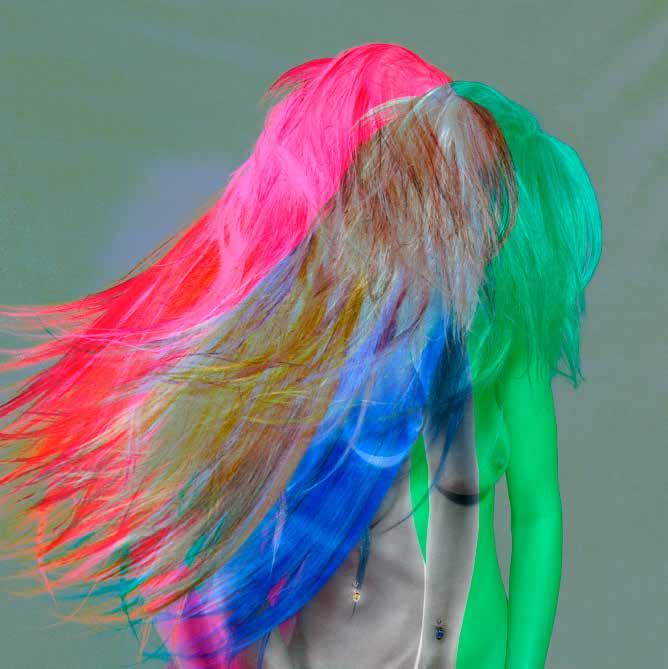



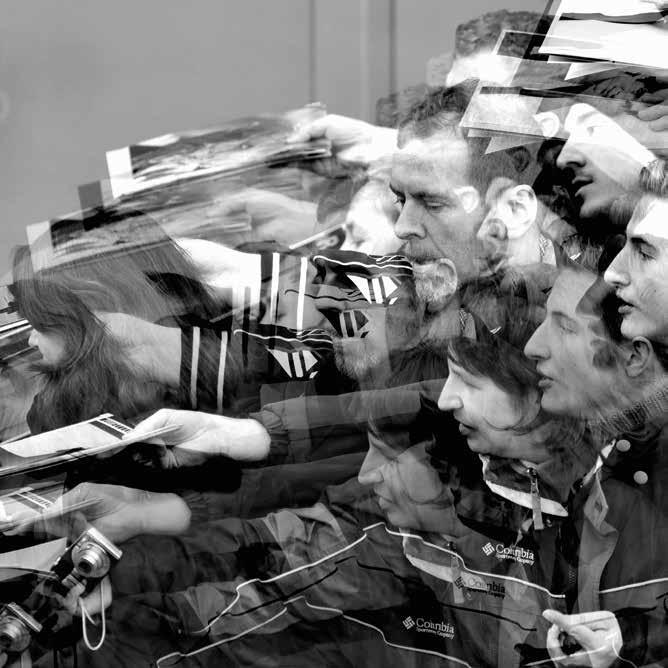


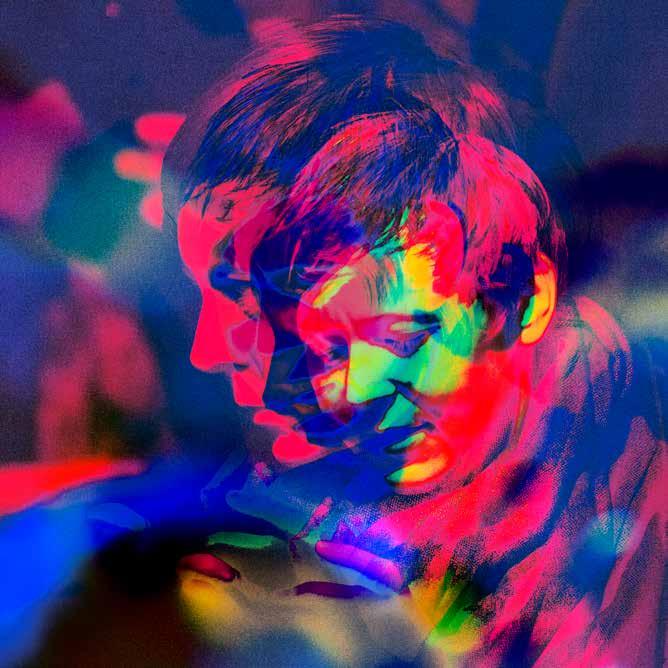
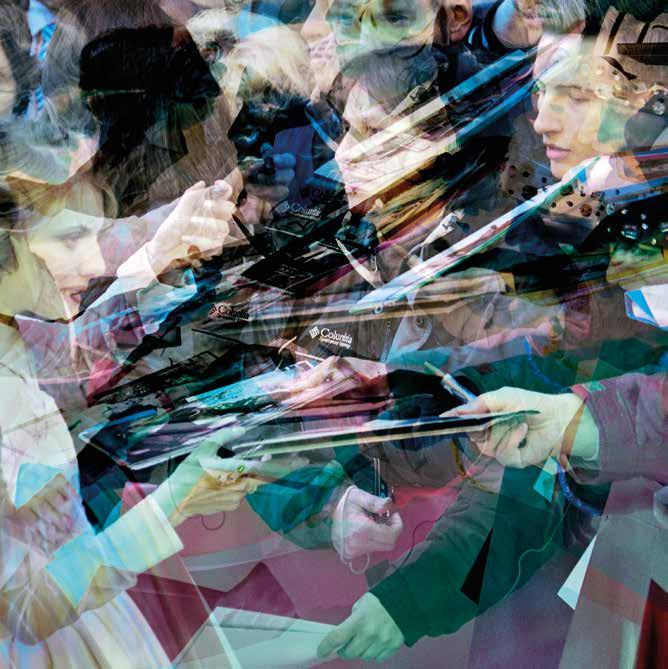


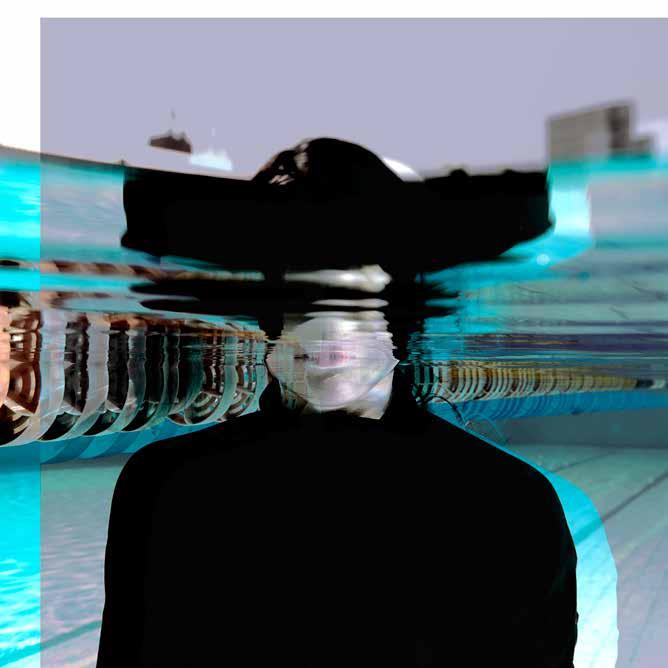

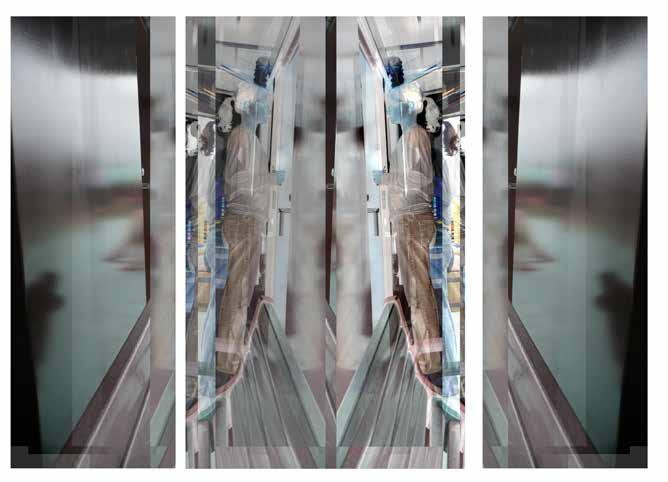
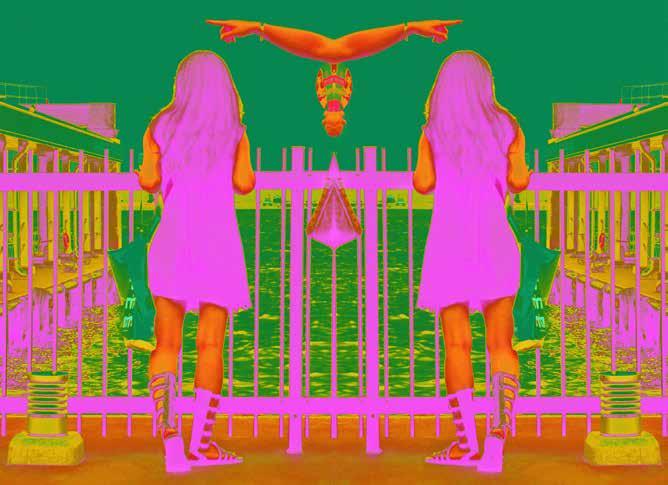
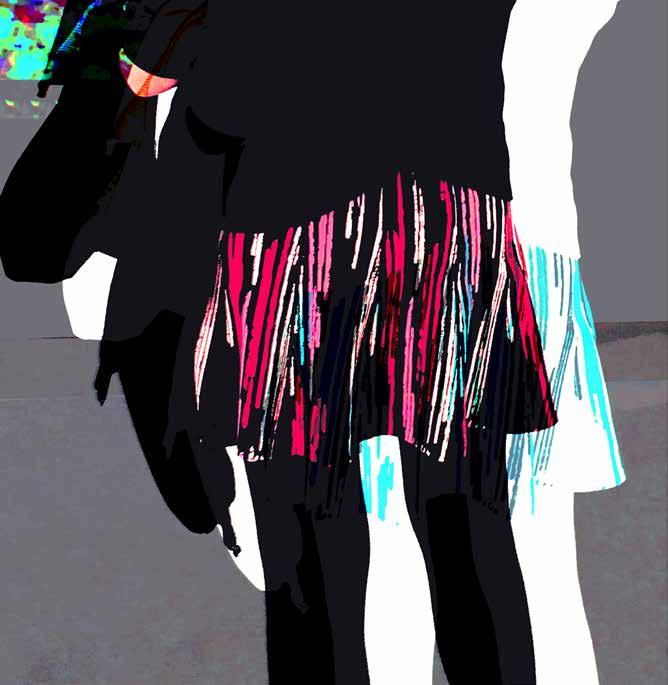
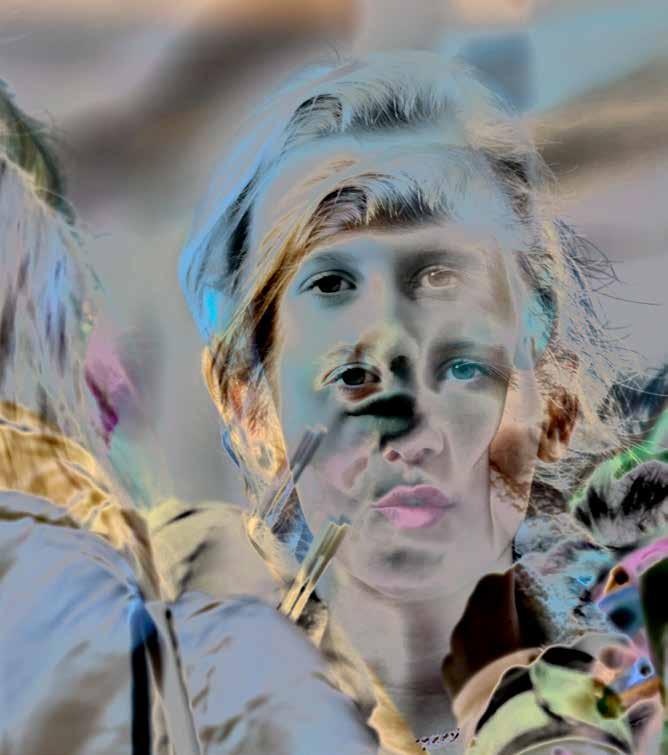
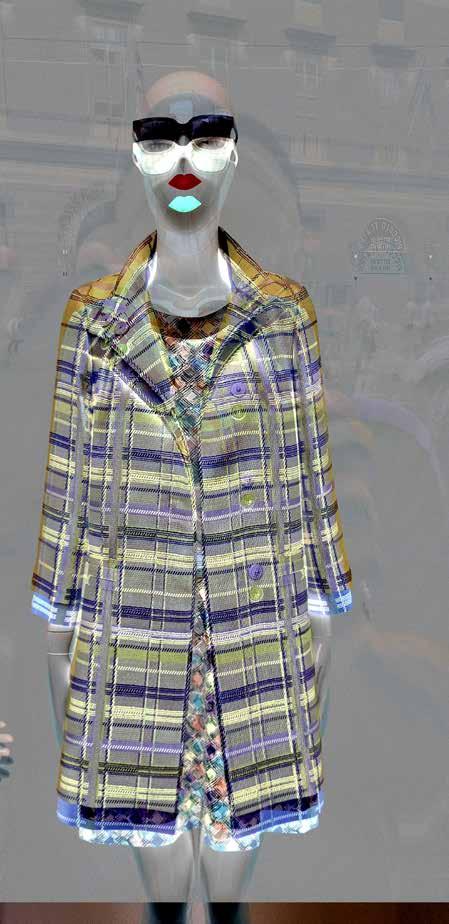
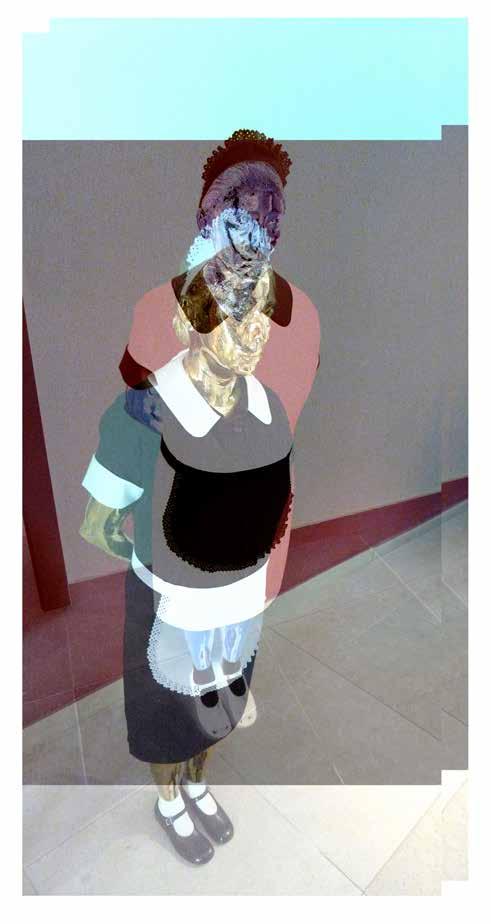
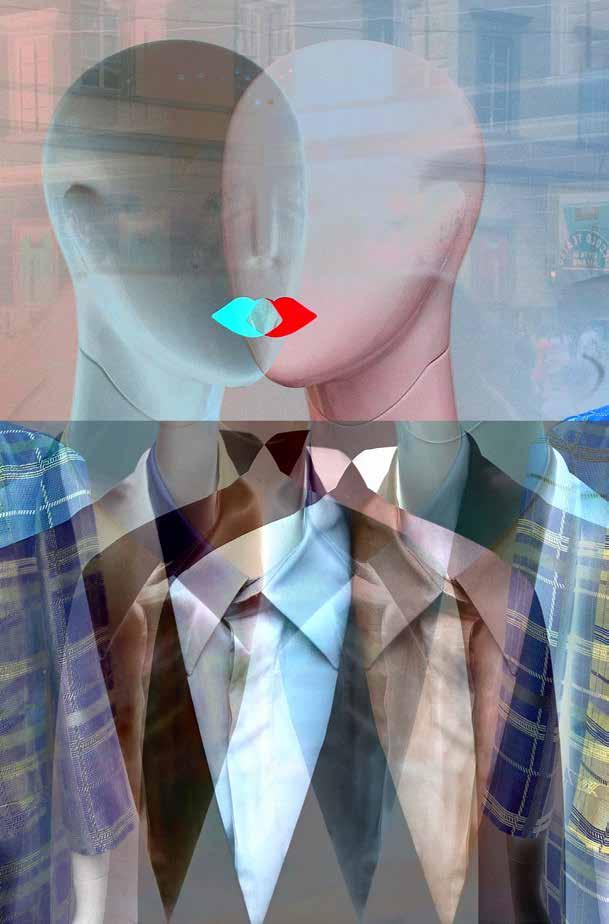
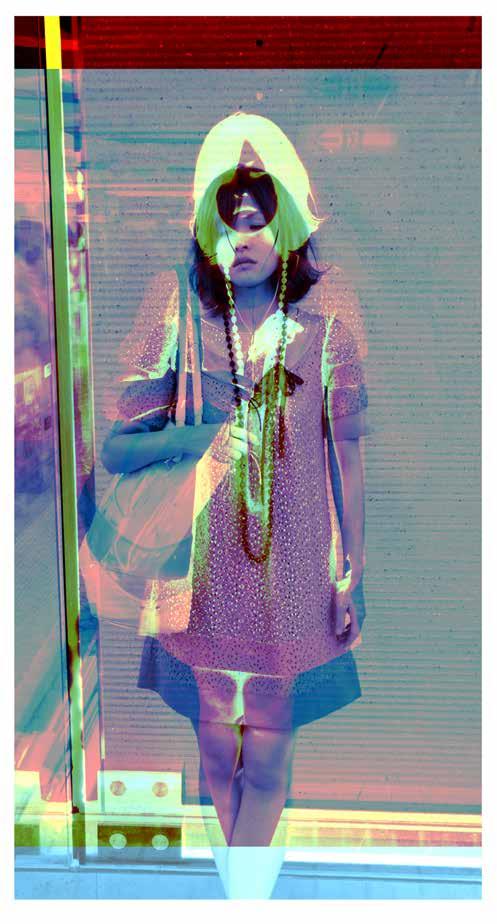

“ART IS AN EXERCISE OF FREEDOM”
“Rubens, my friend, you are gone, but I don’t forget you. Kiss and miss you. Klaus, June 1995”
I found this dedication in a small, printed portfolio, published at the time by Klaus Mitteldorf. We have been friends and worked together for over 40 years. A quick look back is enough to see that, throughout our journeys, we have crossed paths countless times. In my archive, I keep not only books, but invitations, folders, notes, postcards, newspaper and magazine clippings — everything that proves and secures the existence of a solid partnership. That is why I was invited and challenged to write, once again, a text that celebrates his 50 years in photography. And what stories we have to tell.
While reviewing his material in my archive, I came across, among many other things, a calendar produced in 1997 to celebrate the 50th anniversary of the beloved magazine IRIS FOTO, in which Klaus paid tribute to the publication with his already famous photographs. Curiously, the calendar stated: Klaus Mitteldorf 1997 © 2025; the year 2025 would be the one for the exhibition and the book that celebrate his 50 years as one of the most relevant photographers and artists on the Brazilian cultural scene. A numerical detail — 2025 — that foreshadowed, in that present moment, an uncertain future created In the past.
Klaus’ photographs have always intrigued me. The first time I met them, there was a kind of immediate enchantment. His bold and exuberant colours, his clean composition, his simple design reminiscent of the creative radicals of the Bauhaus, his framing with asymmetric balances, his variety in the use of wide-angle and telephoto lenses. In short, a range of technical and aesthetic resources that, when combined, produced images that captivated art directors, advertising agencies at the time, avant-garde galleries, and art magazines — everyone wanted his suggestive and provocative images.
More than many other professionals, he knew how to navigate a demanding market, one that was constantly seeking novelty, but often without daring. It was Klaus who, for the first time, spiced things up and stirred that complacent visual world, which was startled by the colours and the gaze of a young man searching for a possible way to show his capacity for creative innovation.
Let us not forget that the times were favourable. In the 1970s, Brazil still lived under a political system with few openings, the result of the 1964 coup, which haunted Brazilians for 21 years — especially artists, who sought free expression, unchained from authoritarian restraints. When Klaus began his professional path, around 1974, he found in the waves of surfing his way to transcendence, visually climbing the waves and bringing the most incredible manoeuvres right up close to the reader’s eye.
This personal and professional revolution began while he was still in architecture school, when he became involved with a group of friends, all lovers of nature and freedom, regulars of the waves of Ubatuba and the region, who tried to outwit boredom and the regime’s prohibitions by facing the movements of the sea and the whims of the tide. College and surfing opened the minds and hearts of that crew, who became his people and, at the same time, opened for him a work perspective unthinkable until then.
Little by little, his photography was published in Pop magazine from the late Editora Abril, in Surf magazine, in Vogue (when Pietro M. Bardi was editor) and, gradually, agencies began calling him for campaigns; magazines opened interesting editorial space; exhibitions appeared. In the 1970s, he also won the Nikon Prize, international and highly important at the time. Suddenly, in less than ten years, his name was already consolidated as a brand associated with creative boldness — with a strong style, centered on sophisticated graphic composition, people in pulsating, suggestive poses, outdoor locations, exuberant colors that recall Frida Kahlo and Almodóvar. His visual organization always flirted with the extremes, with abstract, surreal, and even strange details. Somehow, his constant presence in Ubatuba, to capture
the big moves of surfer friends, and also in the first informal skate meetings, transformed his everyday life. The radicality of both sports, combined with the speed and constant movement of the activities, was in tune with the adrenaline of the young photographer who sought escape from the dullness and oppression of daily life in São Paulo. Regardless of his love for the city, at that time it was a gray, cold, horizonless synthesis — a hostile territory that made him unhappy and unsatisfied.
As Klaus himself likes to emphasize: “At the time, I did my work as a way to escape that frightening scenario. Photography was, and still is, a therapy that allowed me to understand my ghosts, my problems, the things that bothered me. It was what allowed me to find the courage to show myself, strong and respected. As I am very shy, I was happy with this possibility of overcoming that photography gave me. I embraced my interiority through photography. It was also at this moment that I discovered that water is my planet.”
The idea that photography could be his instrument for overcoming and mediating the inevitable reality, he realized at the age of 12, when he received as a gift from his father a small Olympus Pen camera that allowed him to double the number of shots — with a 36-exposure film, Klaus could make 72 photographs. Most of the time, portraits of his friends from Waldorf school. This humanistic school, which prioritized art and individuality, was, according to him, “fundamental for my existence, and everything I learned, I transformed in my own way into photography. It was there, for example, that I learned about the mythological figures of history, which later enabled me to develop the Divas series.”
On the other hand, Architecture school was also a more artistic option, after having considered studying Oceanography in Hamburg, Germany. The subjects of the Architecture course gave him a better understanding of forms and structural concepts. For him, “the course gave me the opportunity to understand and see everything through a compositional structure — depth, height, width, and the weight of things. After understanding this, I added
colors to photography, and that’s what caught the attention of magazine editors and advertising agency directors.”
Klaus also travelled extensively. This not only expanded his visual culture but also allowed him to meet interesting people and gain unique knowledge. Recently, I found in my archive a postcard sent from Munich, dated May 29, 1989, in which Klaus wrote:
“Hi Rubens: What a wonderful little trip. We’re shaking up Europe. We made two magazine covers you must have already received and many great contacts. Not to mention the countless fun things we’ve been living. We’ve already been to Frankfurt, Munich, Paris, and Geneva and on 6/7 we’re going to New York. We’re on our way to the movies with some friends. How good it is to travel. Miss you and kisses. Klaus.”
I photographed it and sent it to him, to which he replied:
“Wow, Rubens! That was the best year of my life — the exhibition ‘O Último Grito’, the cover of the French magazine Photo, a 12-page feature in the French magazine Zoom and much more. What a beautiful find.”
In our conversations, Klaus has always made it clear that “art is an exercise in freedom.” Restless and provocative, his photographs reveal his unusual vision of reality — they are simple, strange, sensual, futuristic, mysterious. He brings the synthesis of a visionary gaze that seeks to provoke the viewer. At the same time, his photography is also the result of much experimentation. If in the past he used the chemical lab — developing positive film with the C-41 process (which developed negative film) — today he appropriates the possibilities offered by digital techniques, creating fusions and using layers that give new meaning to the images from his archive.
His trajectory through galleries and museums is marked by books and exhibitions that are reference points for many young artists. Among the books, we highlight: “Norami” (1989), published by Rotovision, Geneva; “Klaus Mitteldorf Photographs” (1992), published by Art Forum, “Frankfurt; Katharsis” (2001), Editora DBA, São Paulo; “Introvisão” (2006), published by Cosac
Naify, São Paulo; “Klaus Mitteldorf” (2006), Editora Senac, São Paulo; “O Último Grito” (1998); “Almaquatica” (2006); “São Paulo Blues” (2011), all published by Editora Terra Virgem, São Paulo; “Work” (2013) and “Next” (2016), published by Damiani, Bologna; and “Sobrevivendo no Inferno – Racionais MC’s” (2018), published by Companhia das Letras.
The books make up another chapter in Klaus Mitteldorf’s work. He recalls that, officially, his professional life began with “Norami”, which, in his opinion, “was a gift from the gods.” Edited by Englishman Brian Morris, founder and head of Rotovision, in Geneva, it was what opened the doors to the internationalization of his work. Five thousand copies were distributed worldwide –London, Amsterdam, Paris, New York, among other cities – and, on the launch night at Galeria São Paulo, more than 400 books were signed.
But the euphoria was tempered, for when closing the editing and printing process, Brian Morris told young Klaus: “I’m going to make your book, but you’re going to get depressed.” And that’s exactly what happened. As we know, photography is always a great challenge and, to overcome this anguish, he strengthened himself creatively and innovated with the series “The Death of Ophelia”, when he decided to make a turning point in his path. Once again, research and experimentation made possible a deviation in the course.
The photoshoot has much of improvisation and chance, controlled by the artist. “The Death of Ophelia” was a turning point in Klaus Mitteldorf’s photography. Those who were used to seeing very precise photography – focus, framing, strong colors, among other variables – were now faced with a different kind of photography. Klaus photographed on positive film and developed it as if it were negative, creating, in this reversal, pleasant visual surprises. In addition to this technique, he used a Nikonos underwater camera, which allowed for much improvisation in an aquatic setting where everything was in motion. The result was surprising: “it was the first turning point in my life and my work.”
This first stage led Klaus to better understand his creative process. After that came “O Último Grito”, “Introvisão” and “Next”, which denote the distinct moments of the artist’s phases. Picasso wrote: “every act of creation is first an act of destruction.” This means that with each new phase, there is a significant change in the syntax of the work. In each phase of Klaus Mitteldorf, we see a new visual power, another radicality not yet explored in his photo shoots. The experiences along the process lead to new experimentations. For him, “the greatest thrill of photography is experimentation.”
Throughout our conversations, I asked him about the main influences in his work. He replied with great confidence: the first of them, without a doubt, was the German design school Bauhaus. Then came the photographers: “the British Sam Haskins (1929-2009), the most important of all and perhaps my greatest influence. His experimentation drove me crazy. I was impressed by the use of the wide-angle lens, his blown-out lights, suggestive movements, blurred contours, incredible women, unlikely situations, elaborate compositions, the emphasis on textures and on the grain of the film.”
Then came Art Kane (1925-1995), who “produced distinctive, polarized colour photography, combined with a record of an engaging graphic nature that intrigued me,” and David Hamilton (1933–2016), “who fascinated me for his creative aspect, the presence of nature, and the women in stunning settings.” This triumvirate marked Klaus’s initial phase, focused precisely on some of these variables mentioned above. Later, he grew closer to the German Helmut Newton (1920–2004), who even accompanied him on some of his works, and the Italian Alberto Rizzo (1931–2004), who gave him many technical and administrative tips and hosted him during his two-year stay in New York.
In addition to these photographers, his complementary education came from specialized magazines, particularly the French Photo and Zoom, which featured the best of international photography produced in the 1970s and 1980s. Some years later,
Klaus ended up publishing in these two magazines, which, in some way, influenced his visual repertoire.
The new exhibition at the Museu de Arte Brasileira of FAAP and the new book are called MMXXV – KLAUS MITTELDORF. It is a collection of almost 200 photographs divided into three series – “Pandemic”, “Surviving in Hell” and “Between Mirrors” – new photoshoots, with the exception of the Racionais MC’s photographs, which dominate the “Surviving in Hell” series.
Over almost three years of the pandemic, a time when we were practically isolated, Klaus had the opportunity and enough time to review what he had produced over decades of intense work. In this review, the strength of the Racionais series was the key to reconnecting with the real world. He confessed: “it helped bring me back to earth, to better understand what our city and our country are. A learning experience!” On the other hand, this archival review made it possible to find some unpublished photographs and others that were re-signified with some interventions.
As experimentation has always been present in his journey, now, once again, he sought visual alternatives and image interventions that could bring a new freshness to his work. Everything seems new in these works, which have gained a sharper and more experienced gaze throughout the isolation caused by the pandemic, a situation that confronted us with several dilemmas. Among them, the finitude of life and the possibility of surviving in the face of the imponderable.
Klaus poured his creative energy into this review of his own work and into this new moment, which tends to be another rupture. He rescued from his photographs those that could be resignified after procedures involving different types of manipulation – superimposed images, fusion of two or more images, chromatic alterations, insertion of textures, among others.
His intention now is to enter a new phase in which cinema will be his predominant language. He wants to write stories and new scripts, create characters, establish differentiated visual connections, away from the mainstream. His goal is to invent
visual sequences that are mobilizing, capable of establishing a new dynamic in his art of producing magical images that stimulate our imagination.
Rubens Fernandes Junior Independent Researcher and Curator
Pandemia (2025)


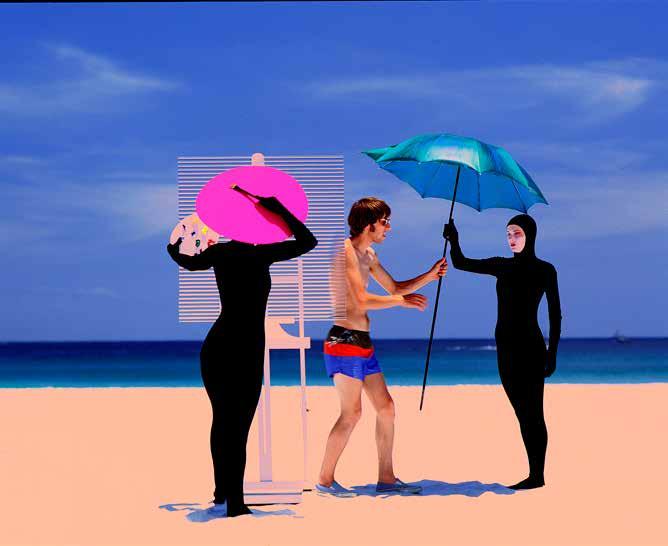

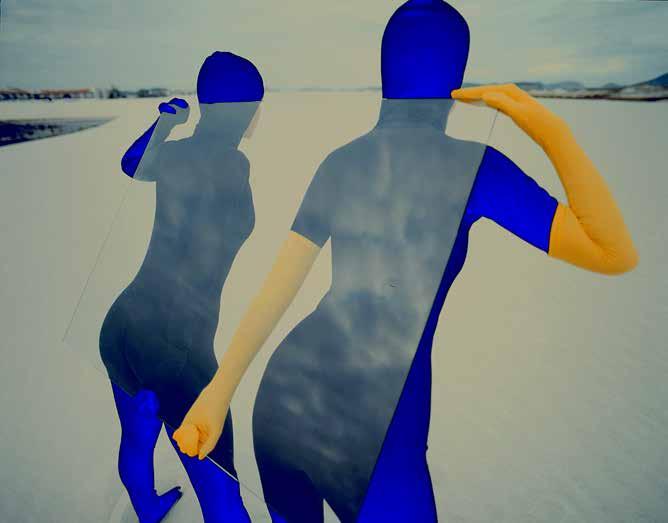
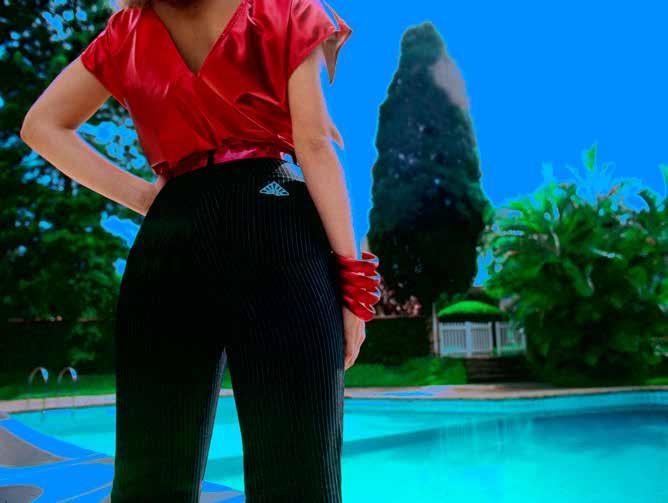
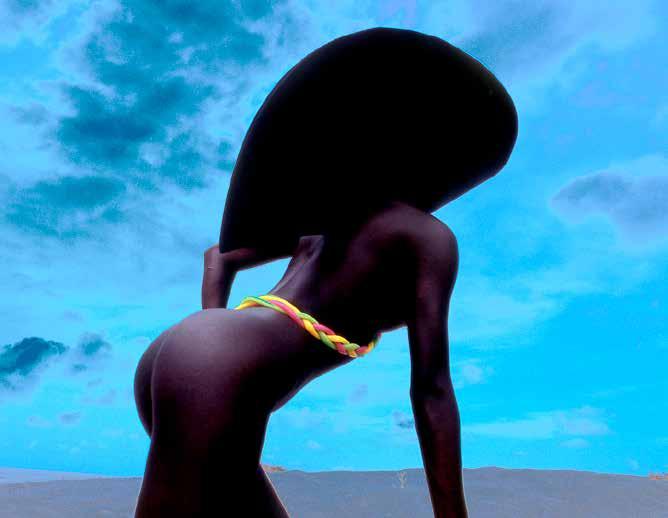
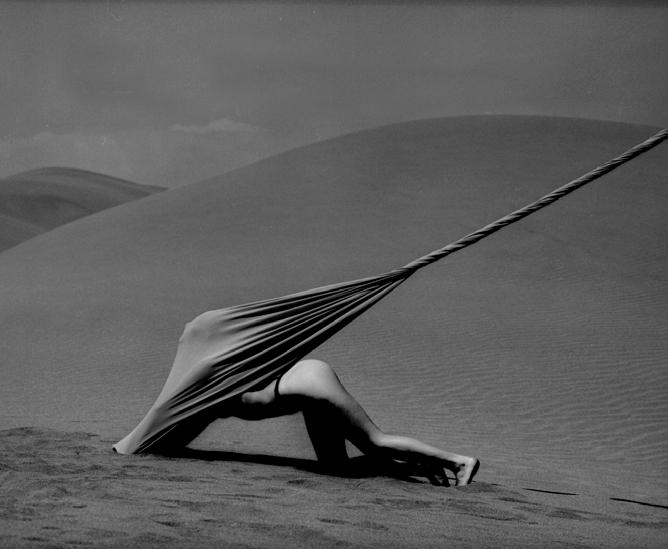
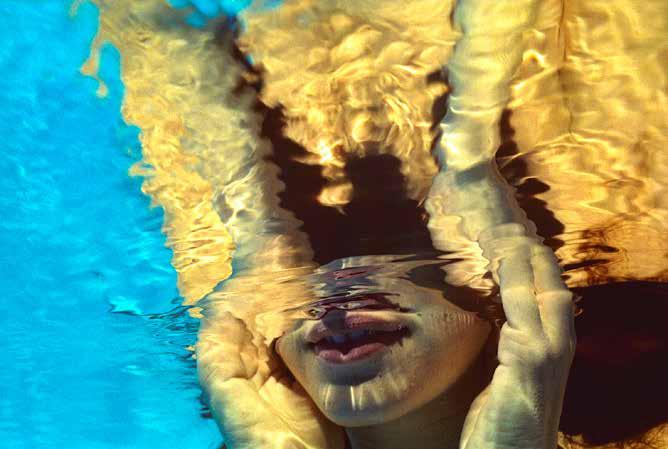
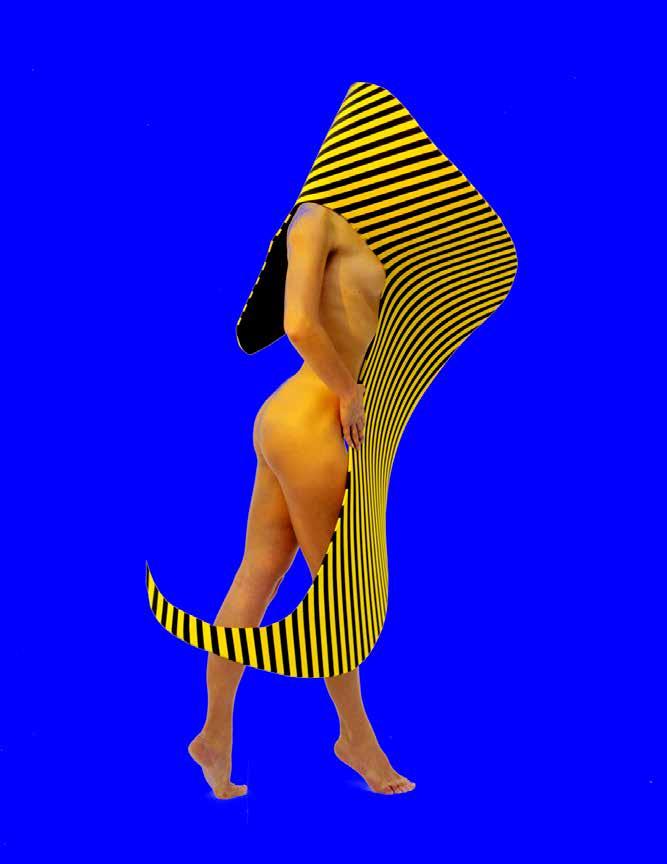
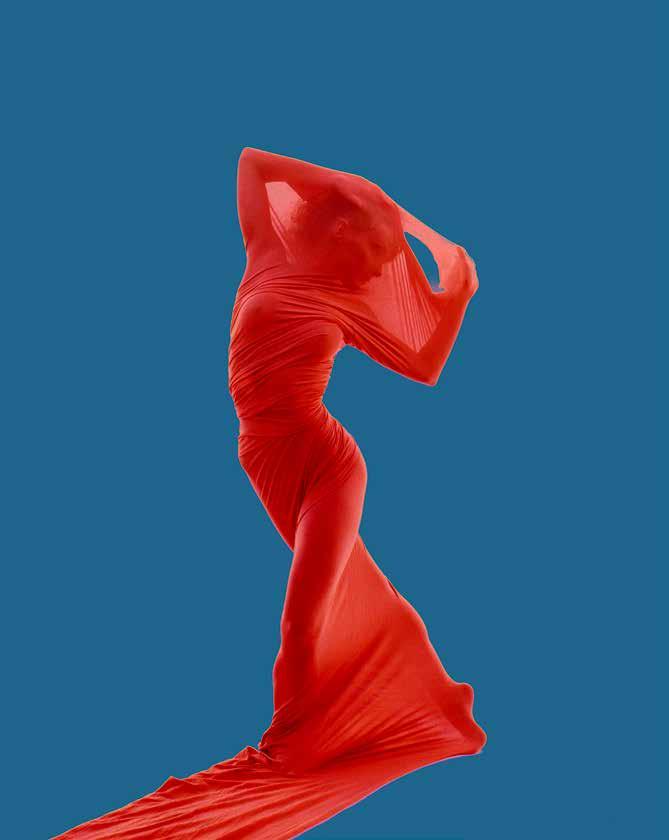


MY HOUSE BY THE SEA
Dreaming the impossible.
That’s how I envisioned what my new beach house would be like, if the Covid-19 pandemic ever came to an end. The sea has always been a supreme source of inspiration in my life.
It was by the sea — and along the Rio-Santos highway — in the 1970s that I discovered a new path to communicate with society, a path that has brought me to where I am today.
Klaus Mitteldorf



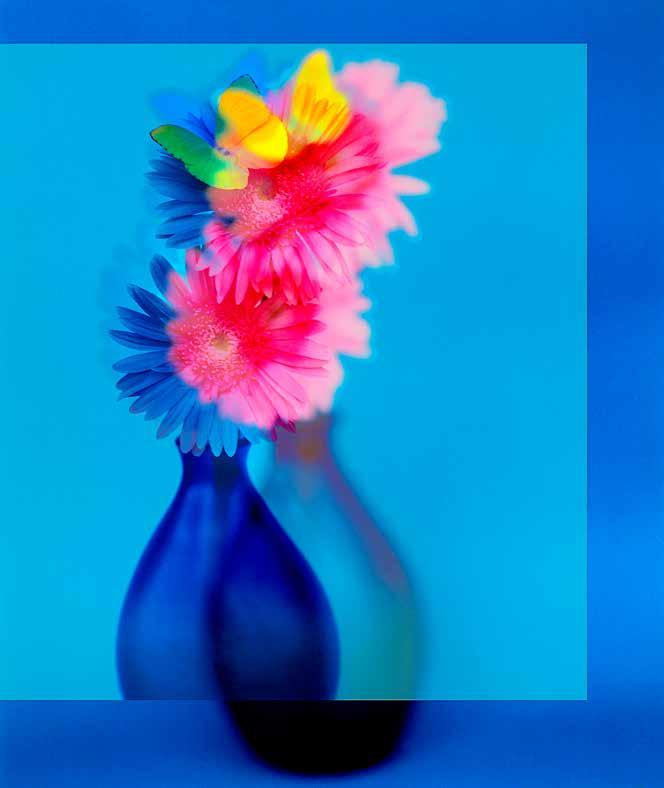
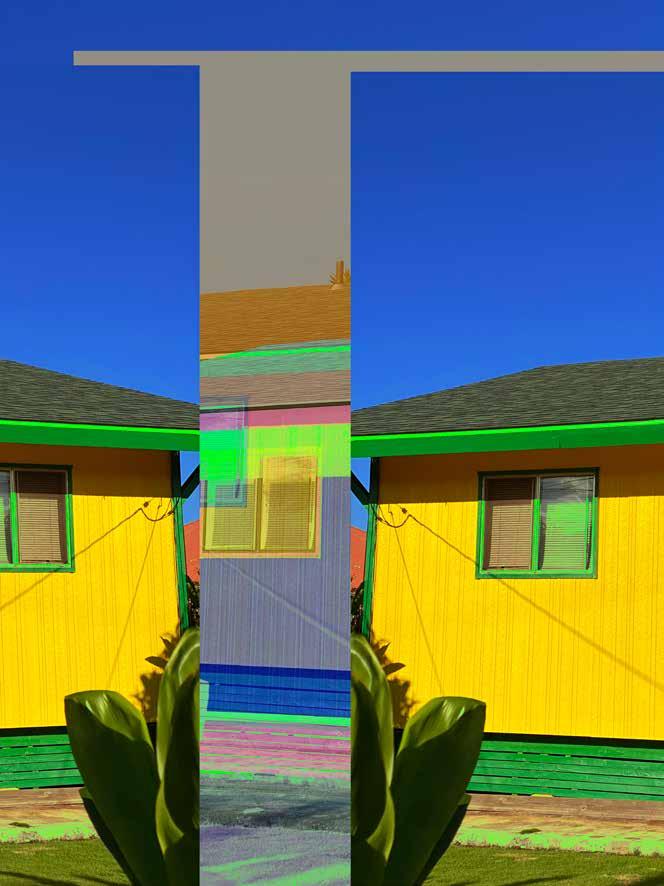
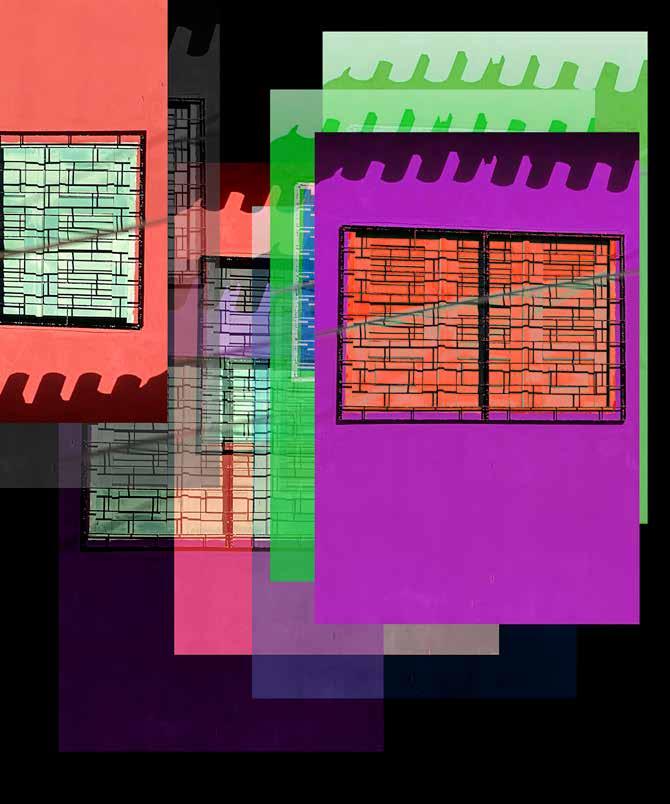
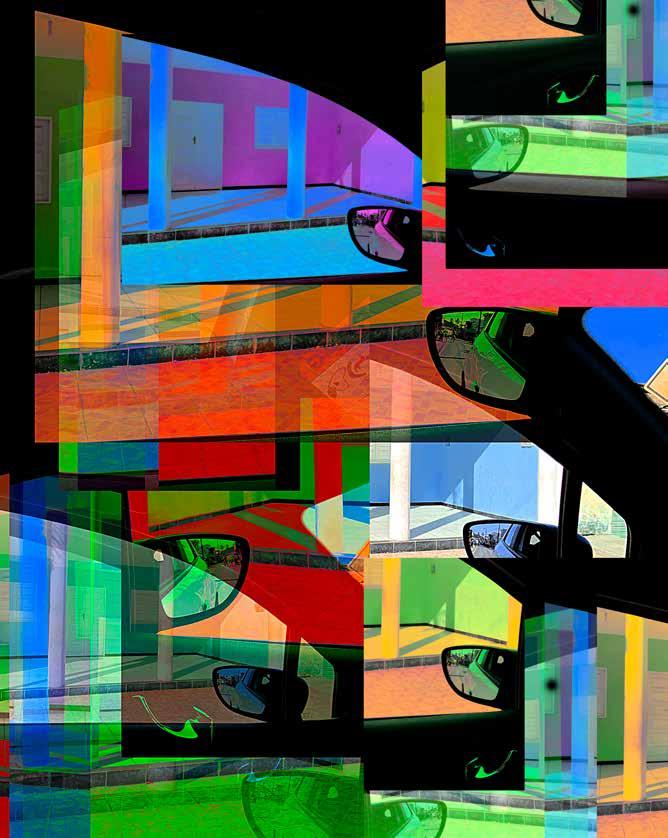
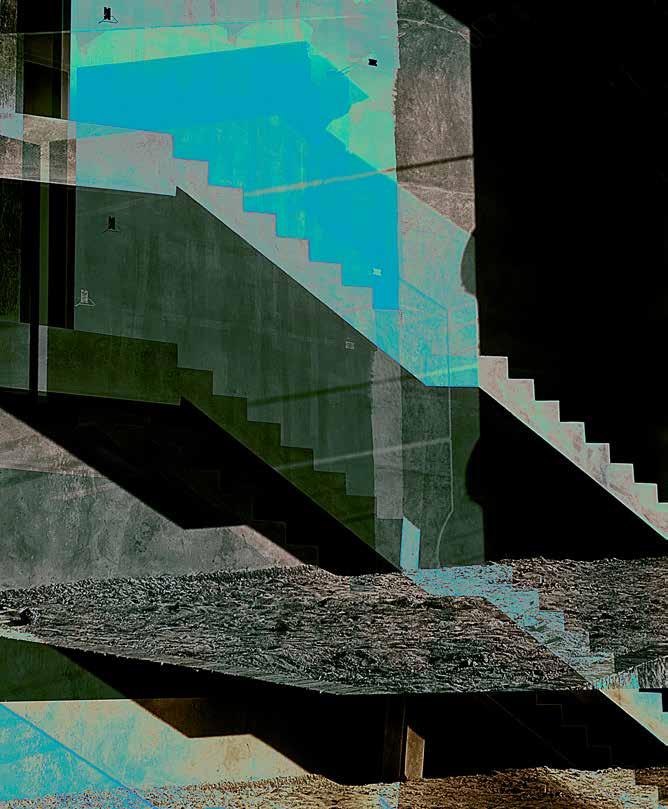
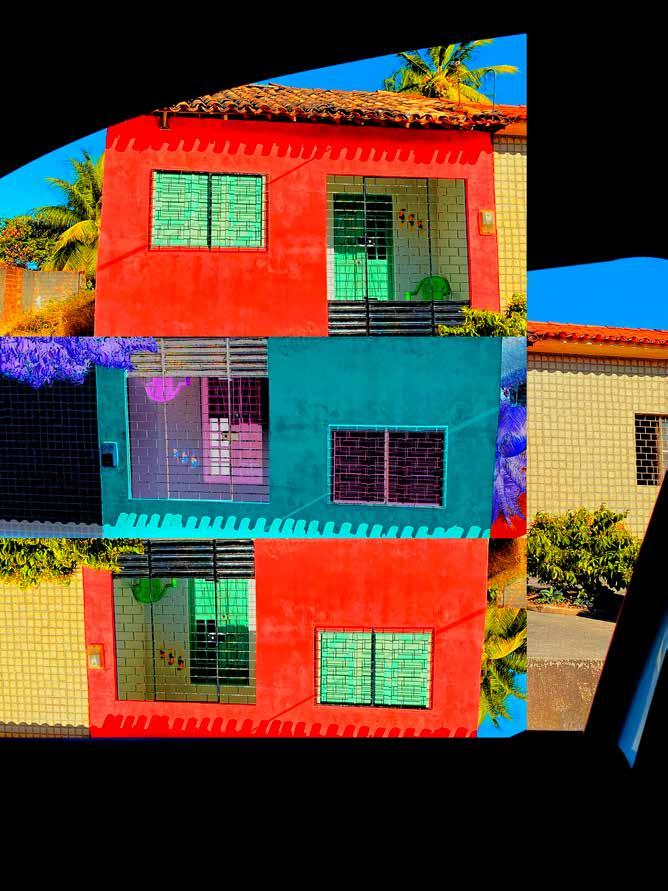
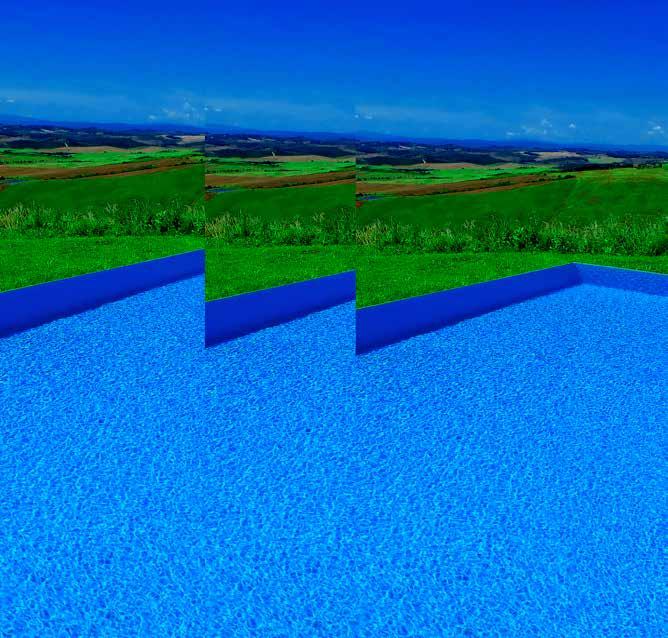
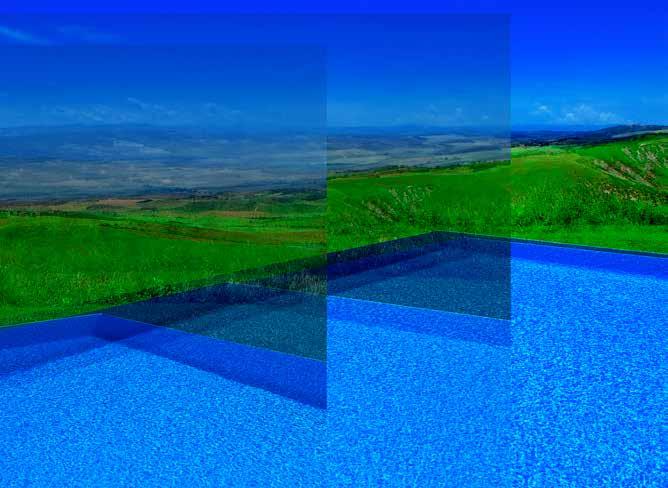
FAKE NUDES
In today’s digital world of apps, nudity has become a problem. To me, it has always simply served as a medium for many stories. In the 1980s and 1990s, I used nudity primarily in works connected to mythology, most of which were published on magazine covers, in editorials, and in books across Europe. Today, media censorship has forced me to introduce graphic interventions and critiques in many of these images, in which nudity is merely a detail within a tale or fantasy.
Klaus Mitteldorf

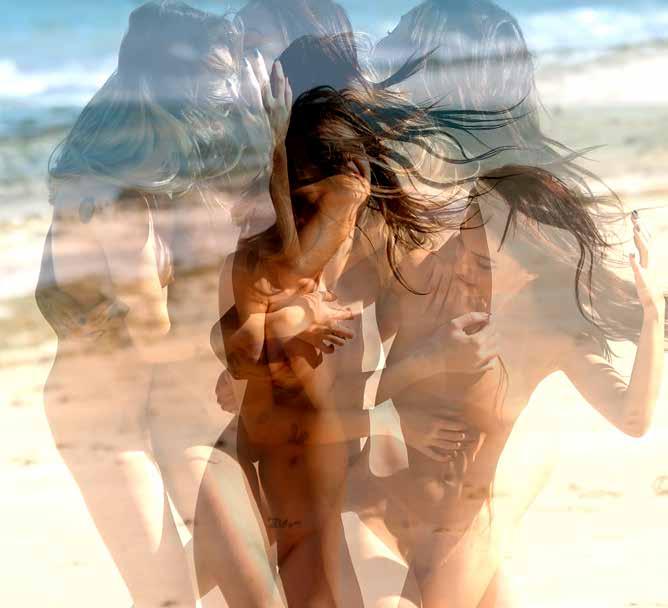
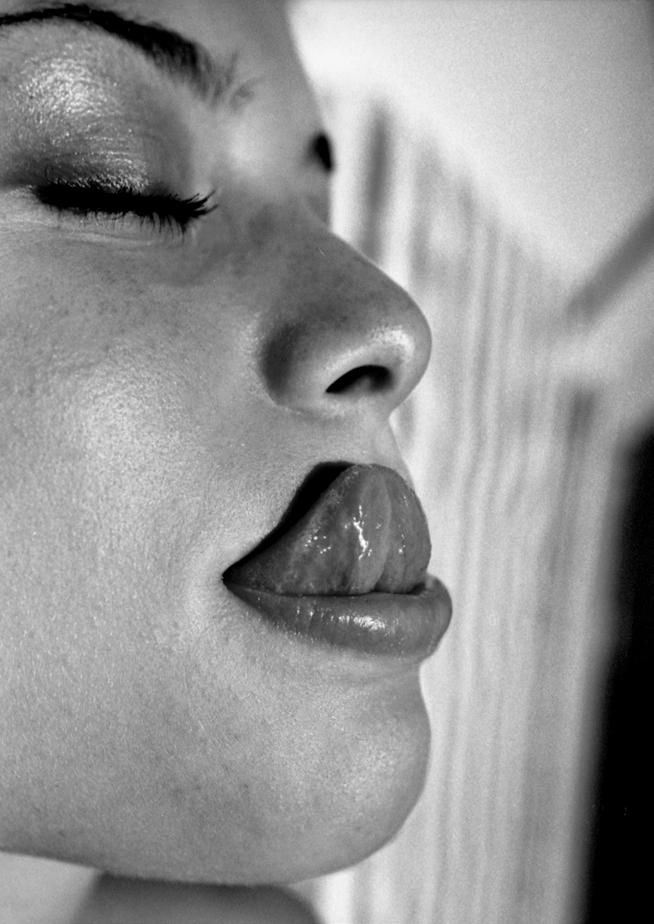
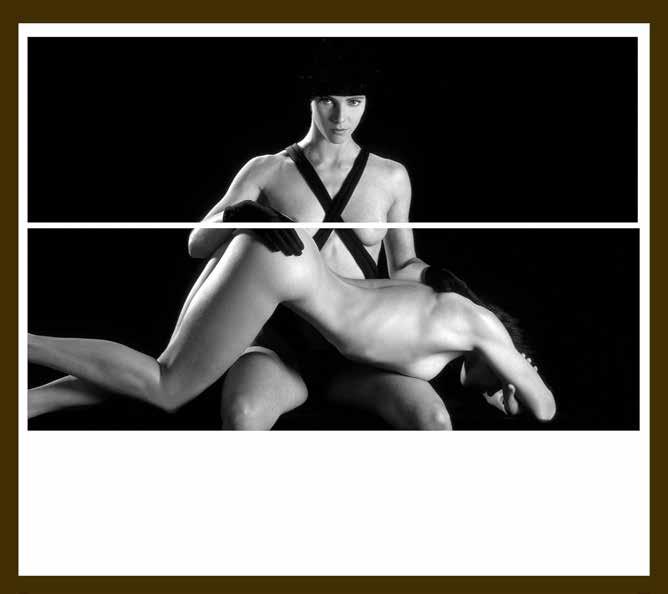

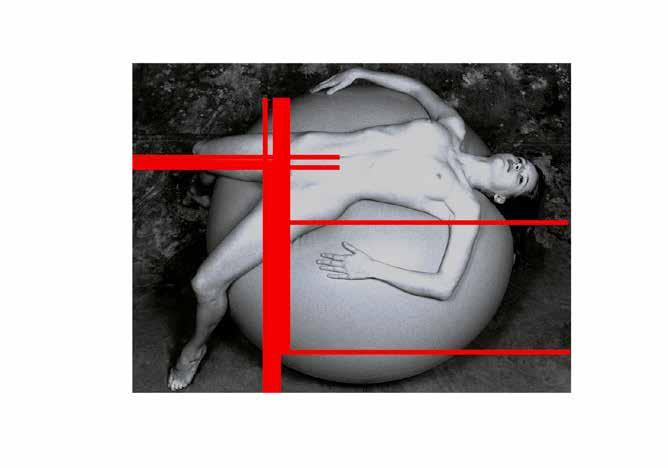


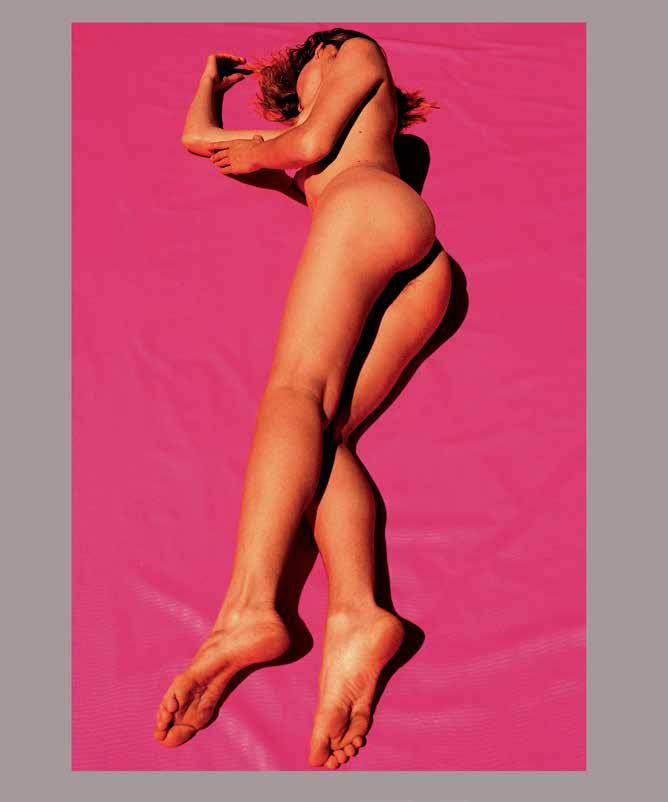
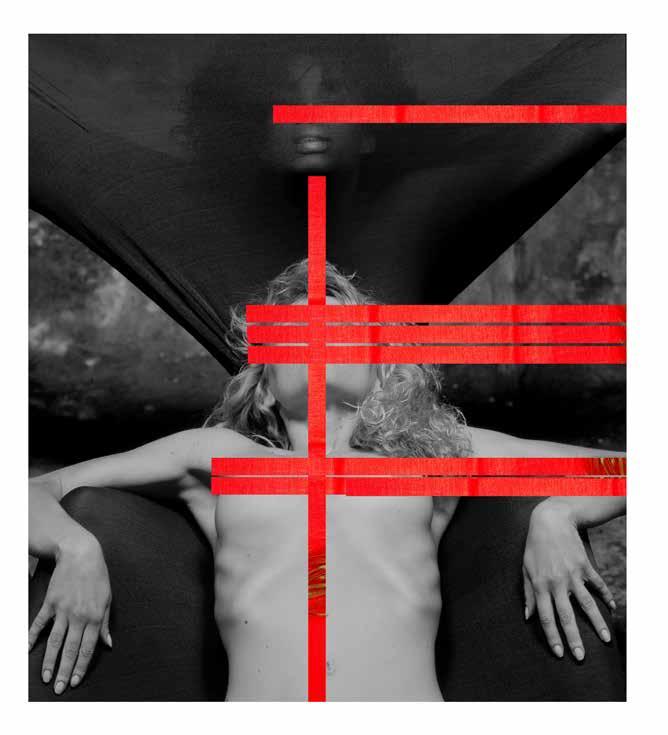

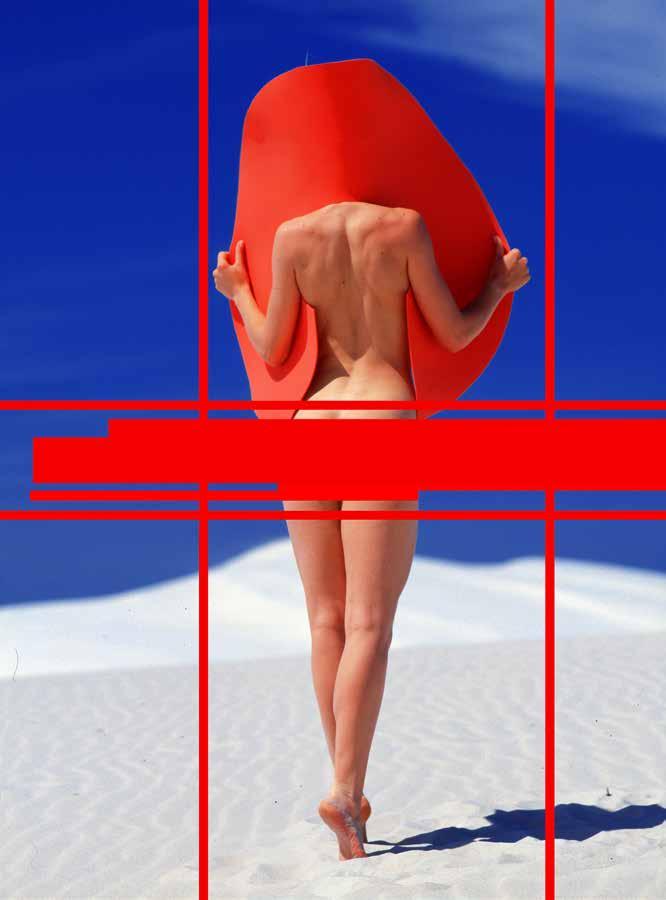
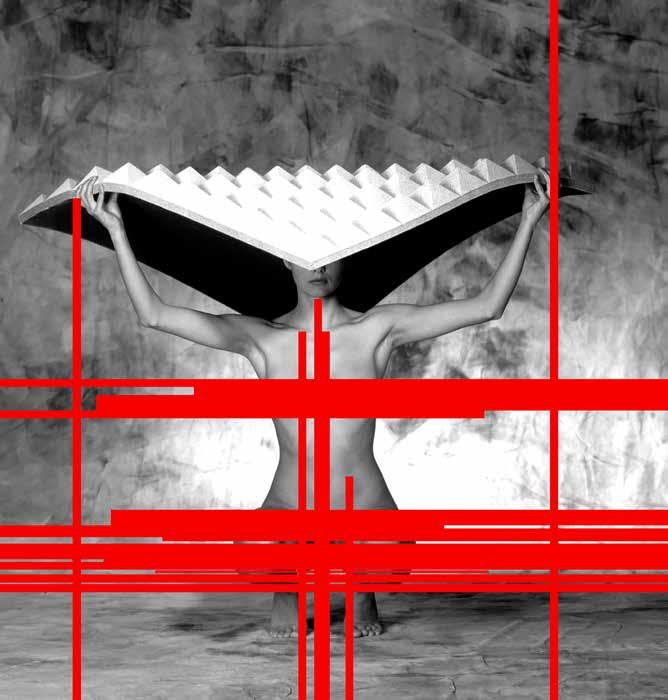
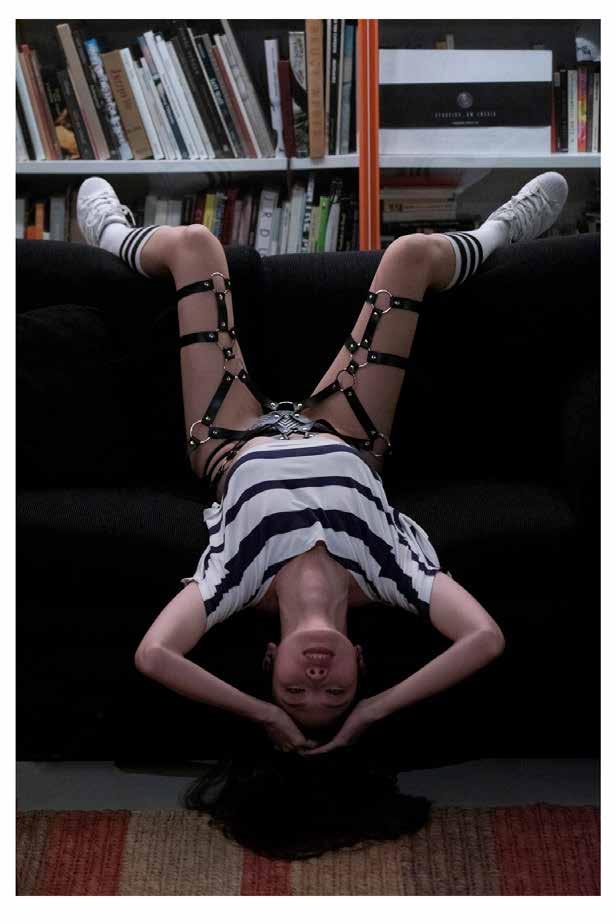
IDENTITIES
I’ve always enjoyed reinventing the world and its people. This practice began in 2008, during my trip to Japan, when the fascination with the inexplicable elements of that ancient culture forced me to see human beings in a different light.
I photographed, distorted and reinterpreted dozens of characters — mostly strangers — transforming them into new “identities” through collages and overlays of photographic layers.
That was the beginning of the process I named NEXT, which became the theme of my 2017 exhibition at Galeria Millan in São Paulo, and of the book of the same name, published by Damiani in Bologna.
Klaus Mitteldorf
Identidades (2025)

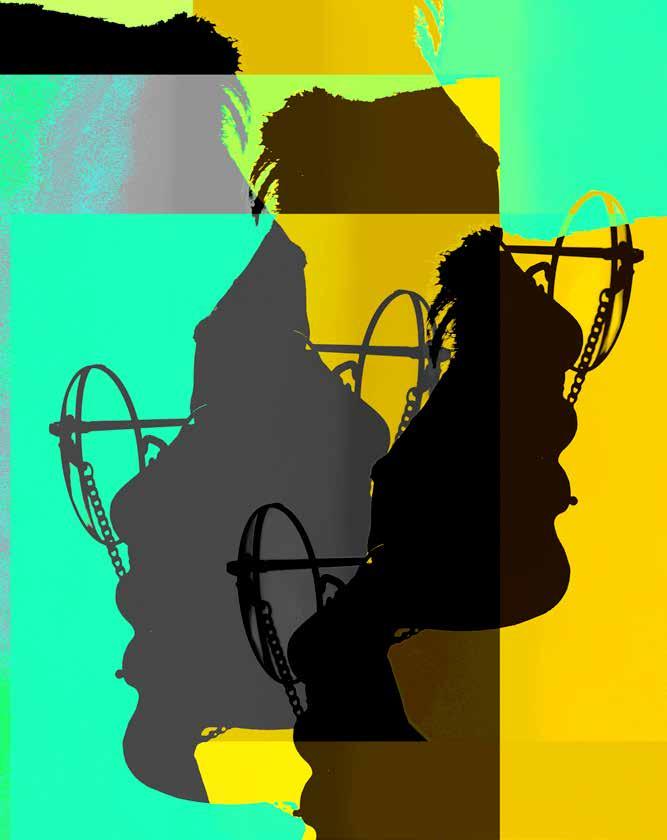
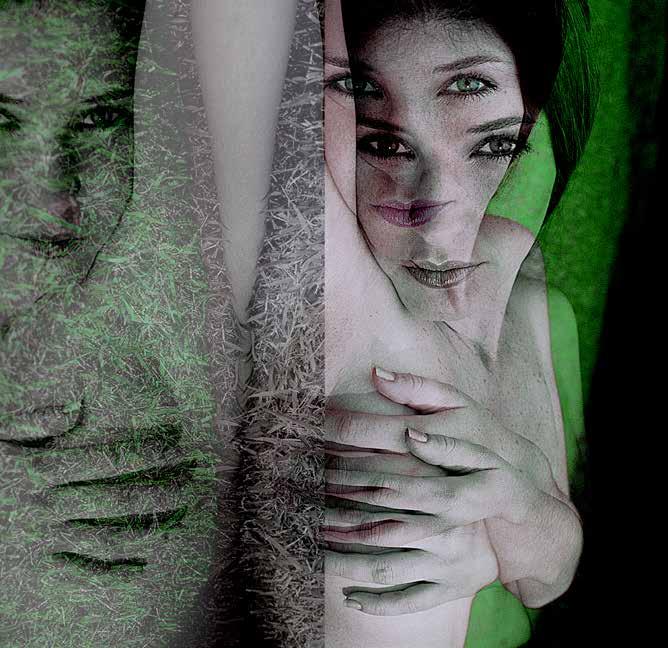
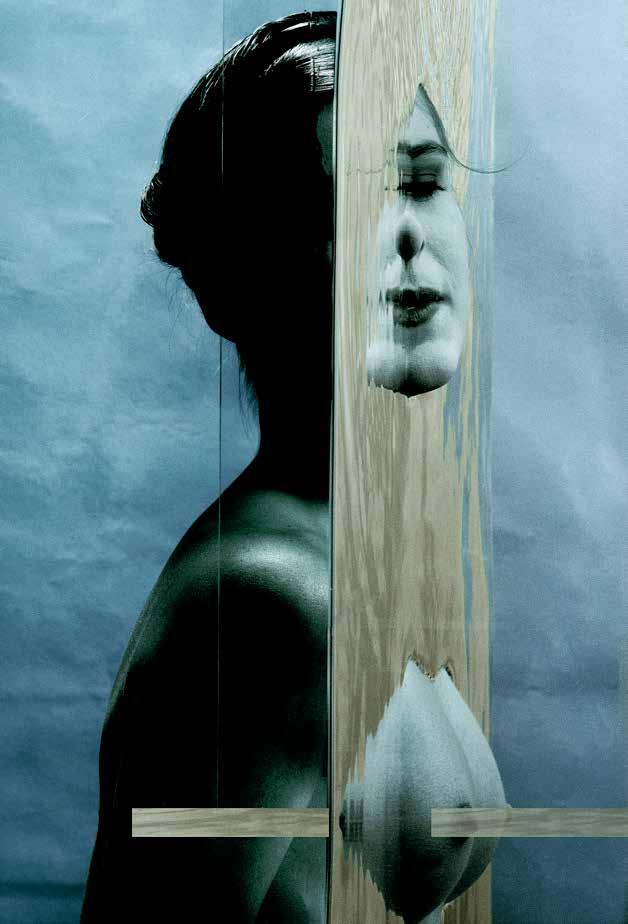

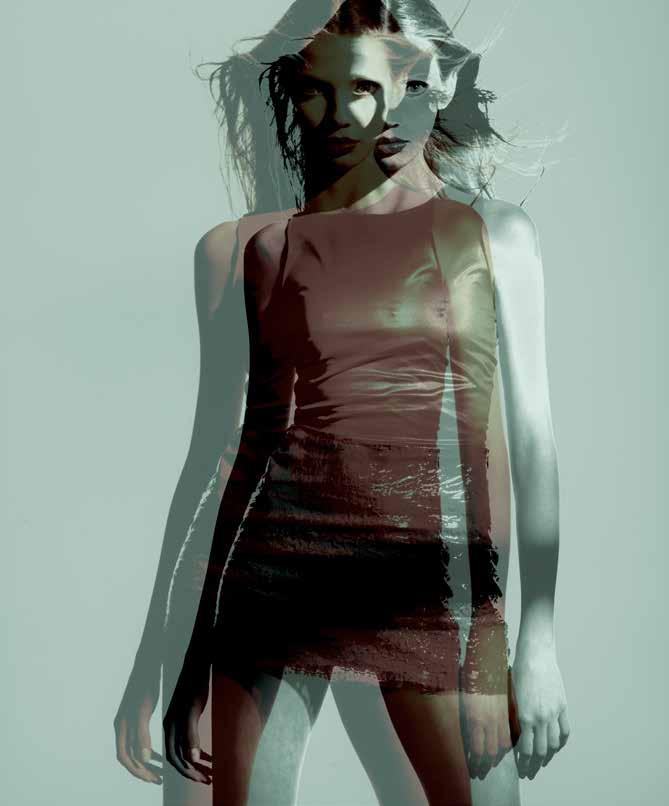
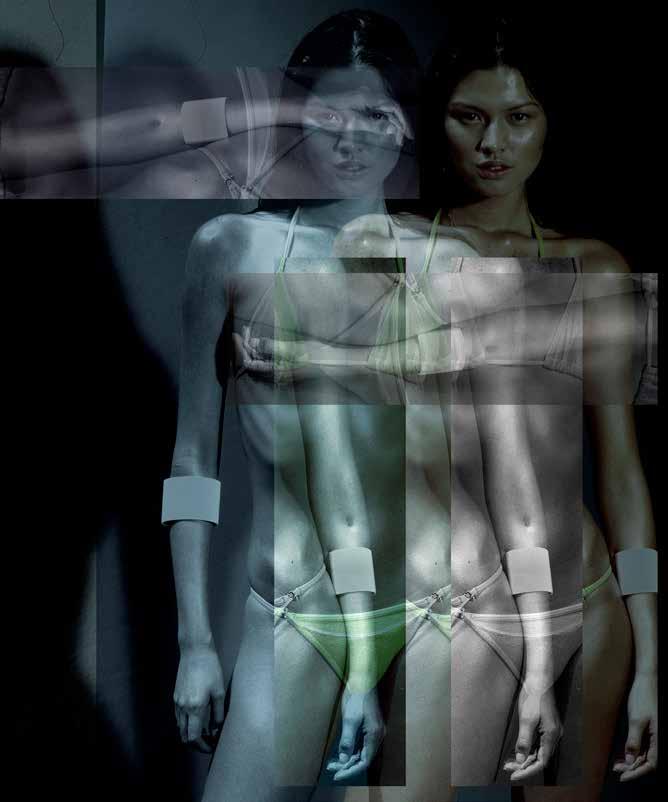
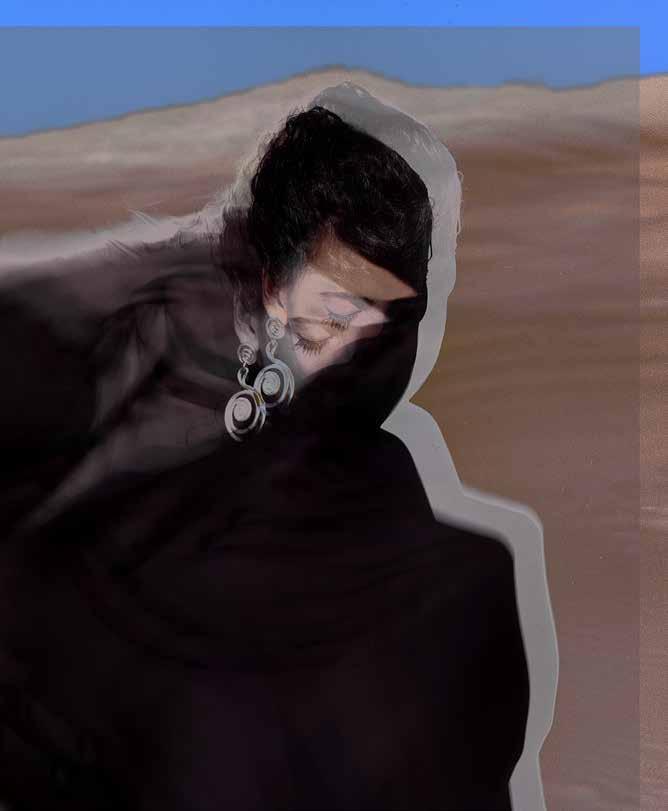
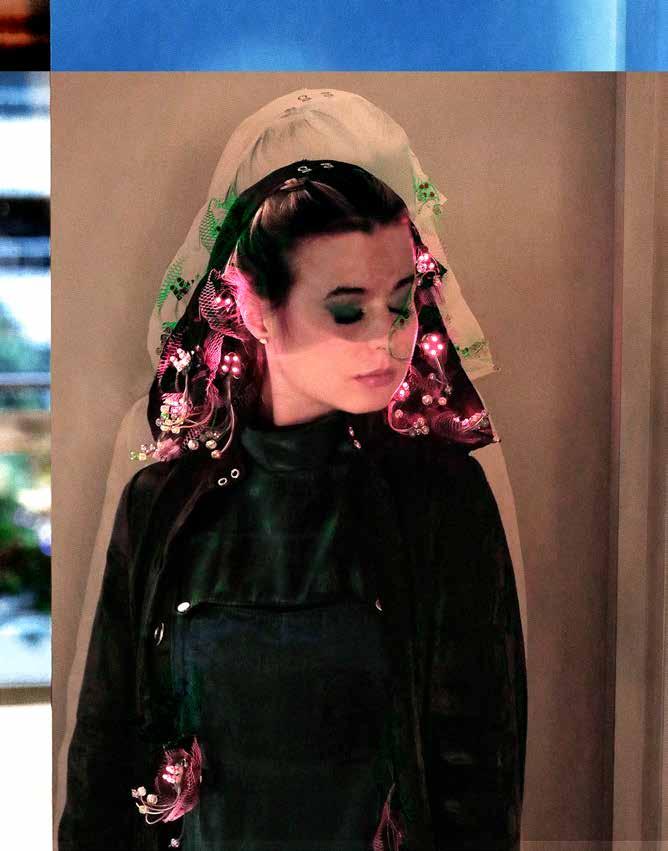
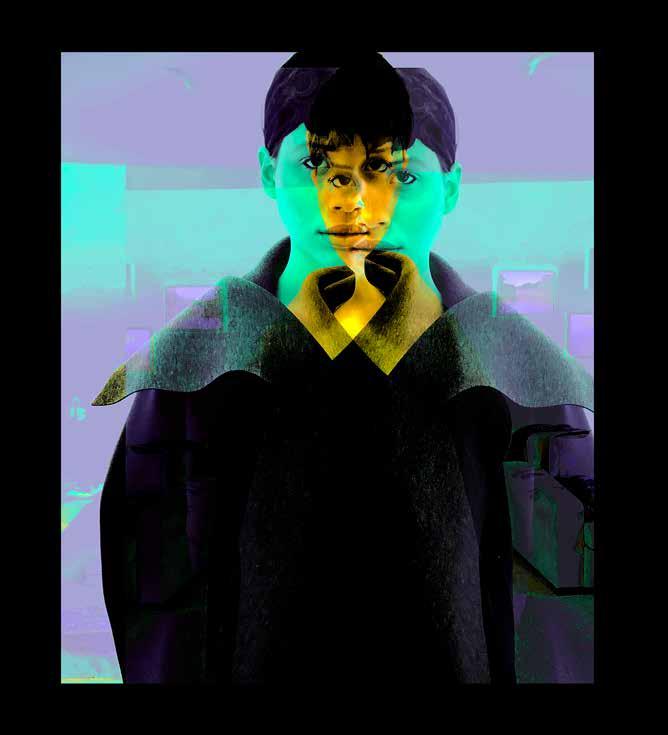
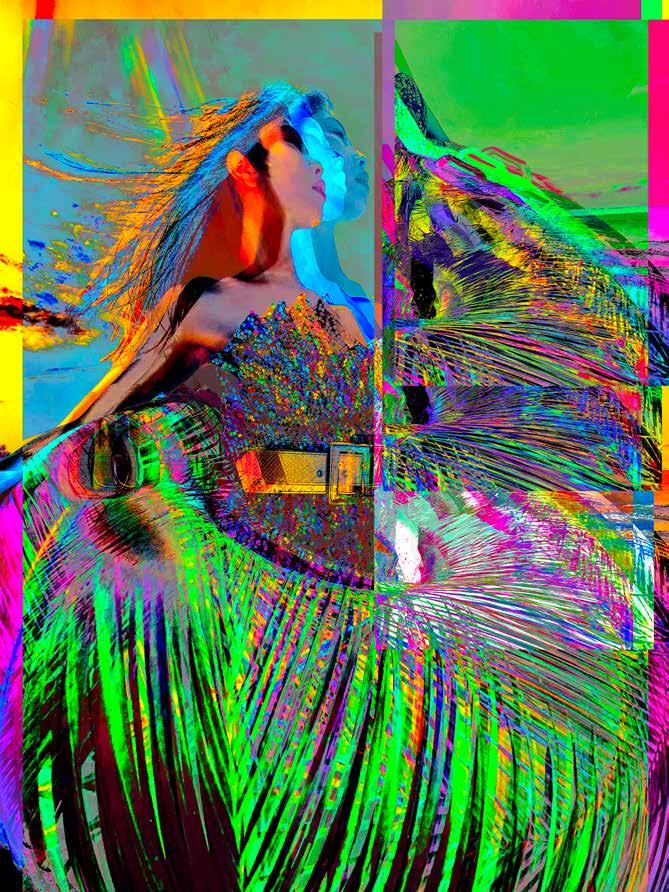
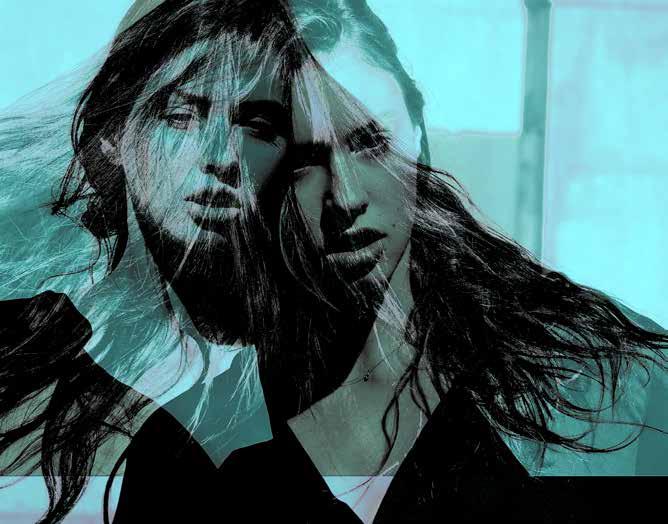



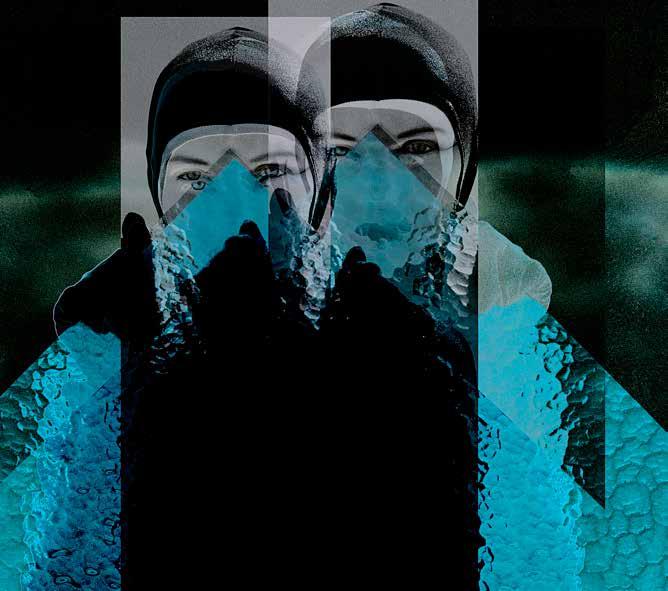
YUME, A JAPANESE DREAM
“Yume” means dream in Japanese.
It was the first project I completed in 2017/18, with model Carolina Mineta, fully exploring elements of Japanese culture— something I came to know well during my trip to Japan in 2008, where I was awarded the Grand Prize at the Higashikawa International Photography Festival.
A blend of folklore, fantasy, and critique, involving the traditions of that Asian country.
Yume, my Japanese dream!
Klaus Mitteldorf

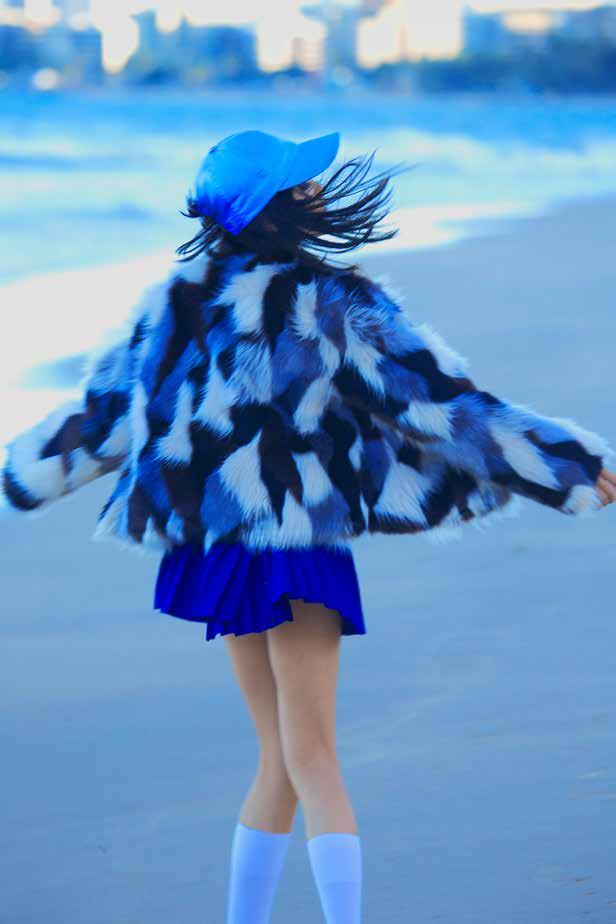


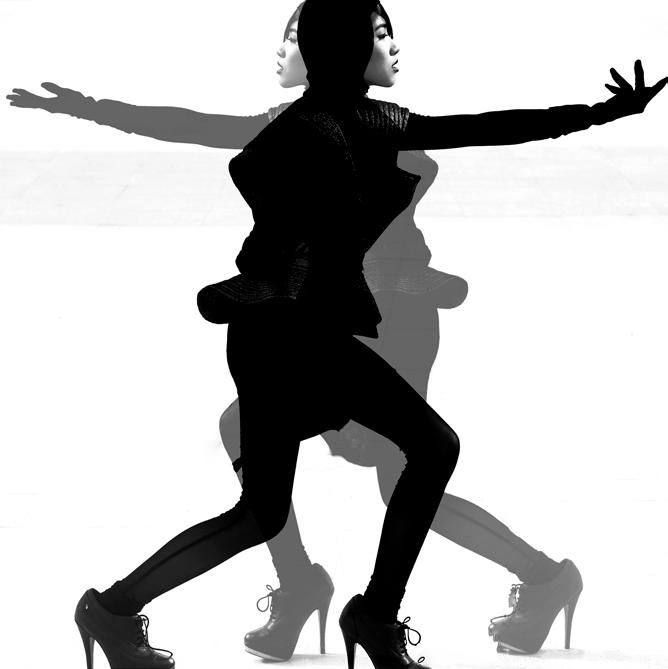

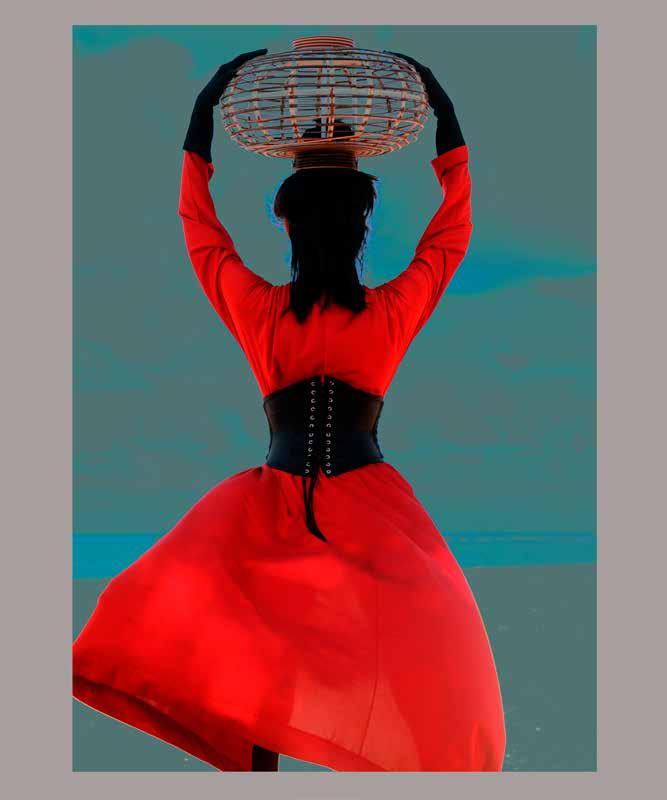
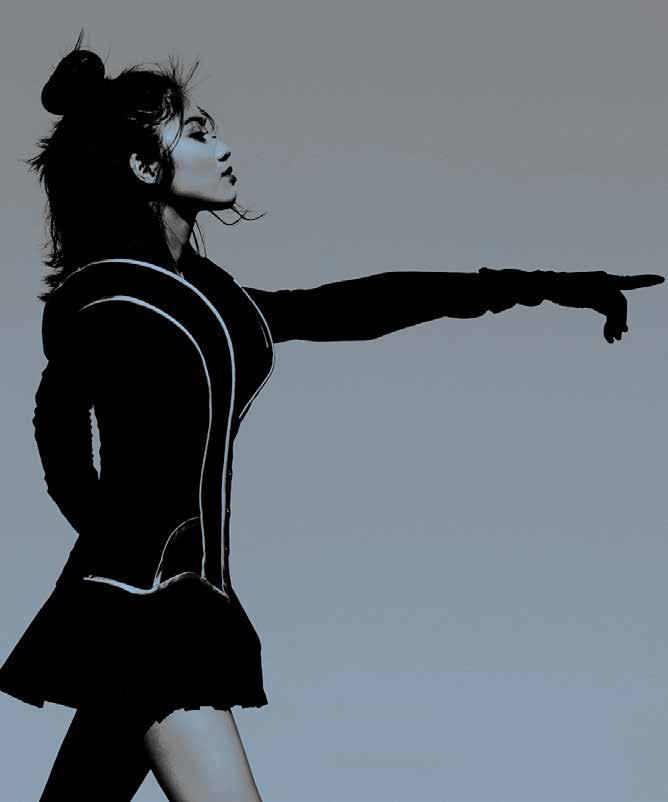
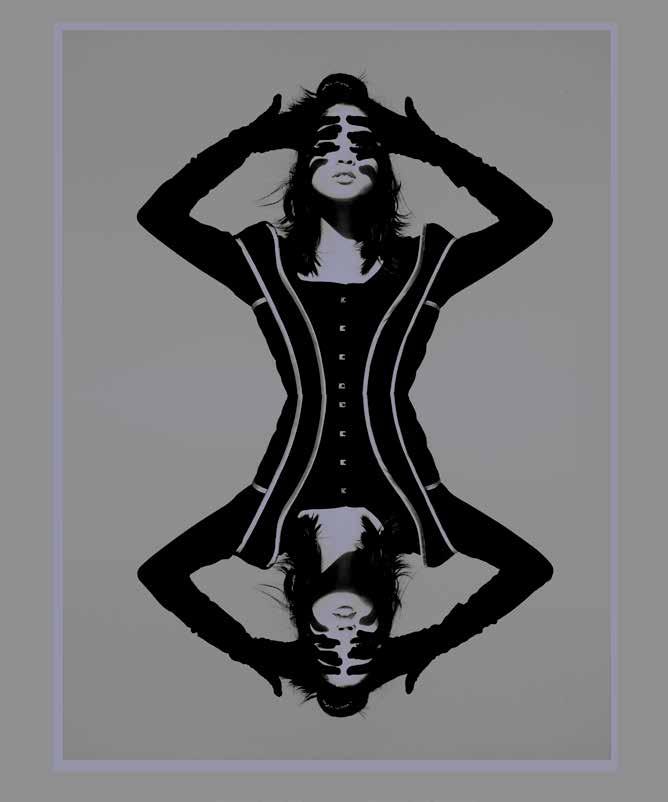


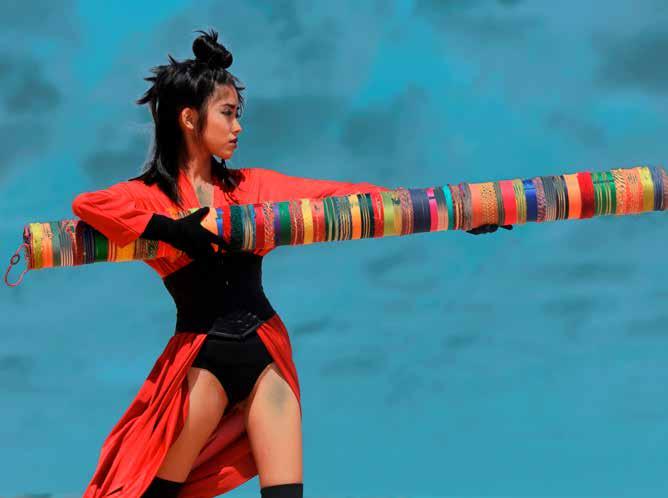
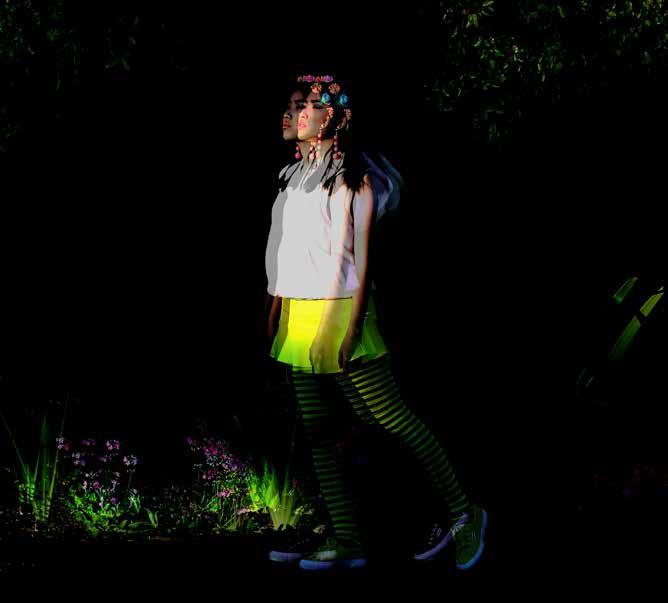
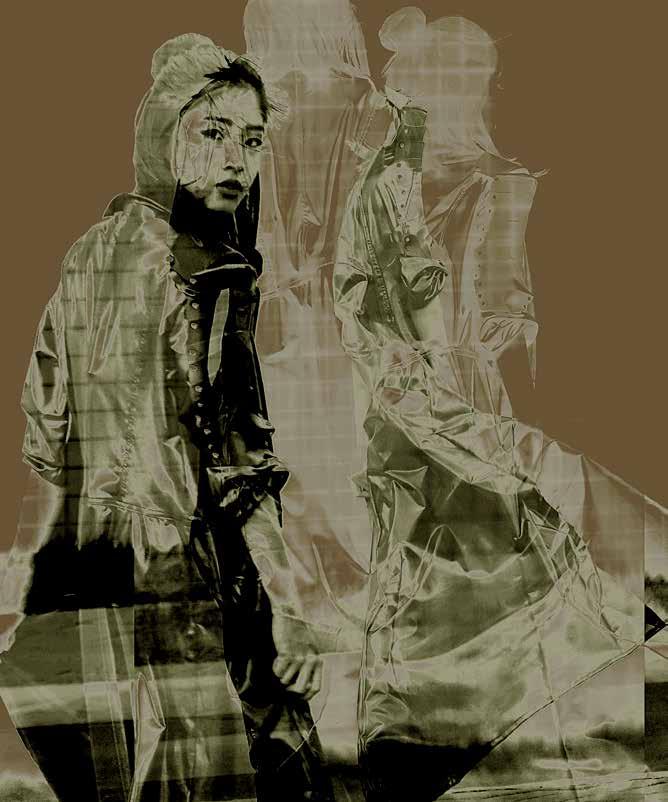



ARIANE
Thinking more specifically about the story behind my film project The Red Carp, which I’ve been developing since 2024 with screenwriter Fernando Bonassi, here I explore the narrative of a revenge.
The work began in 2019, with the development of a cinematic character alongside model Mayumi Ishihara.
For nearly six months, we built the character Ariane together — Mayumi’s birth name — who came to represent not only various aspects of my fictional avenger, but also the essence of Ariane herself, hidden behind the beautiful model Mayumi.
Klaus Mitteldorf

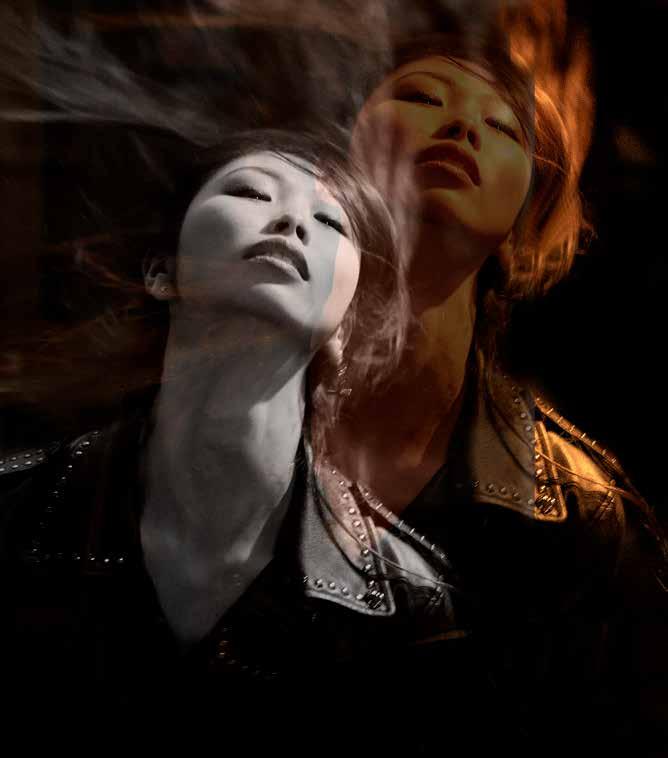


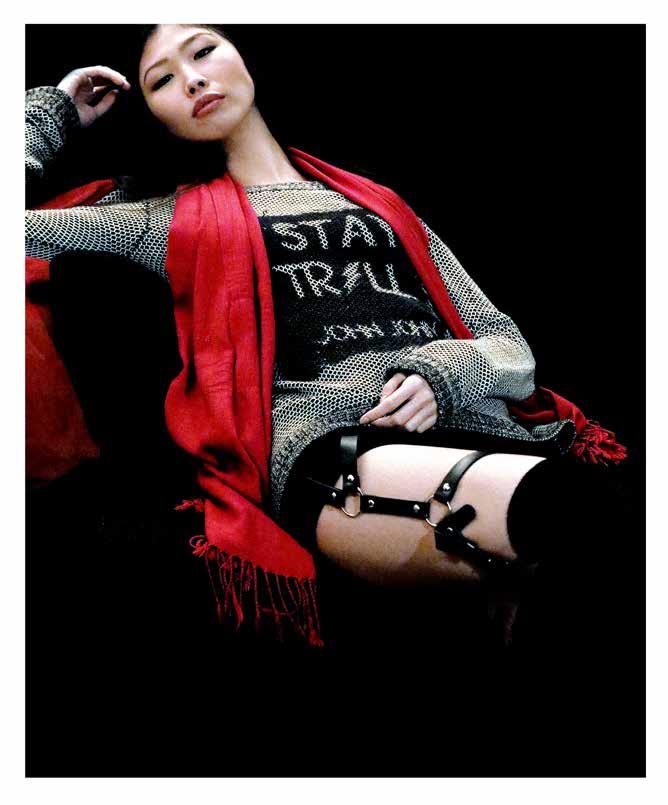
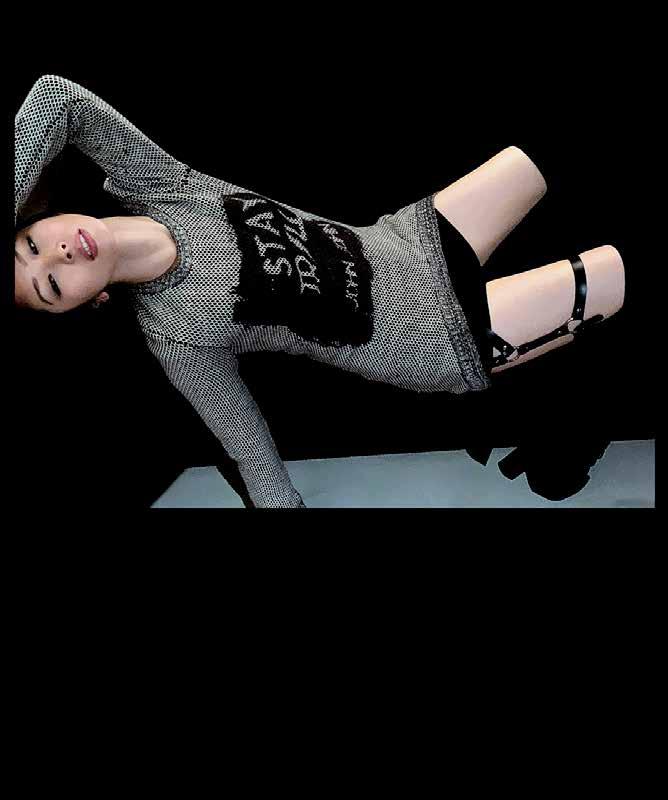
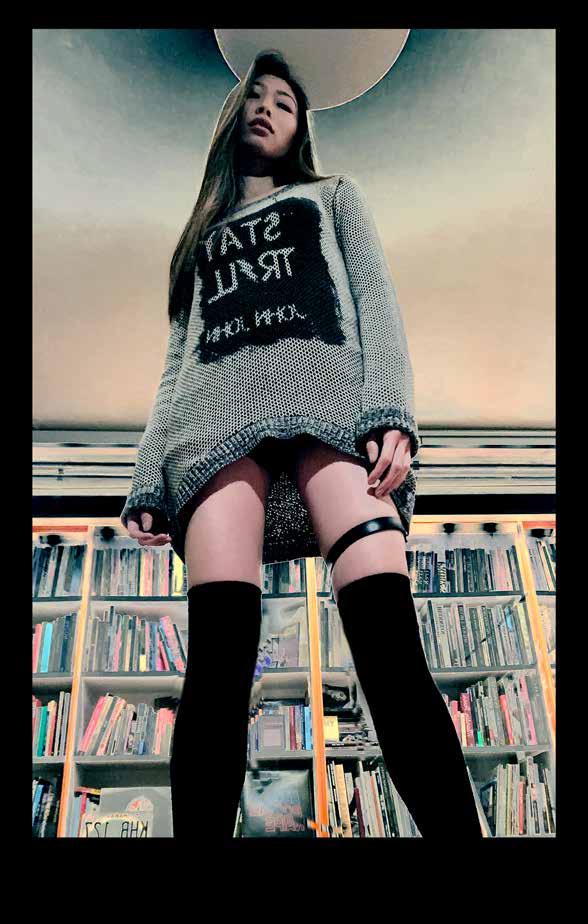

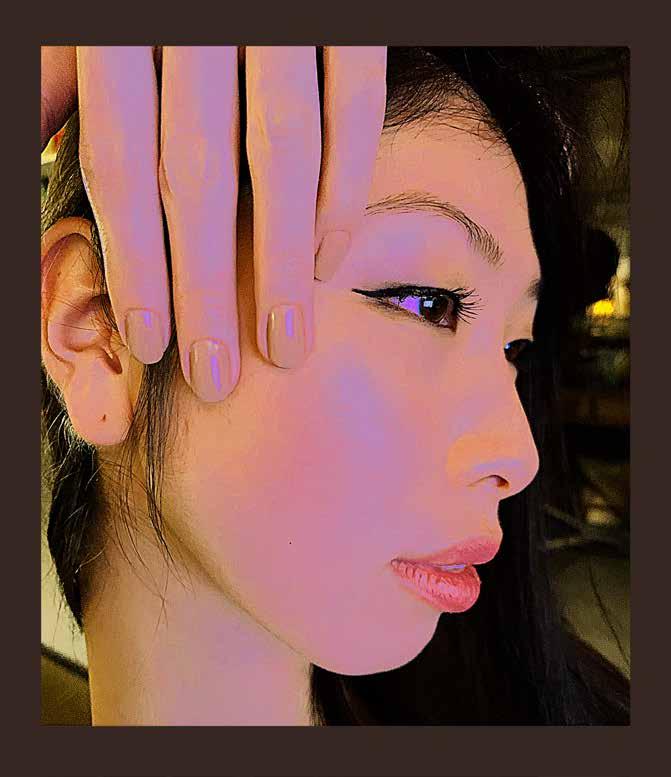
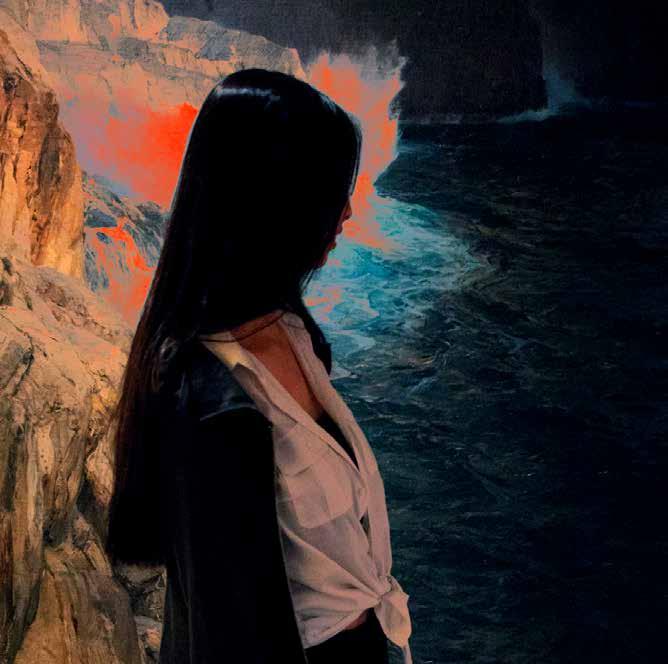

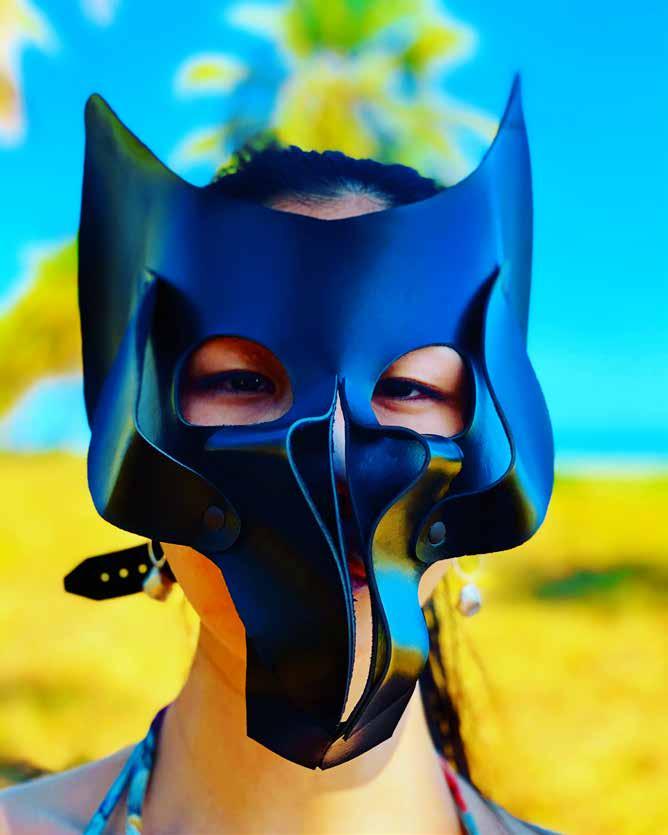
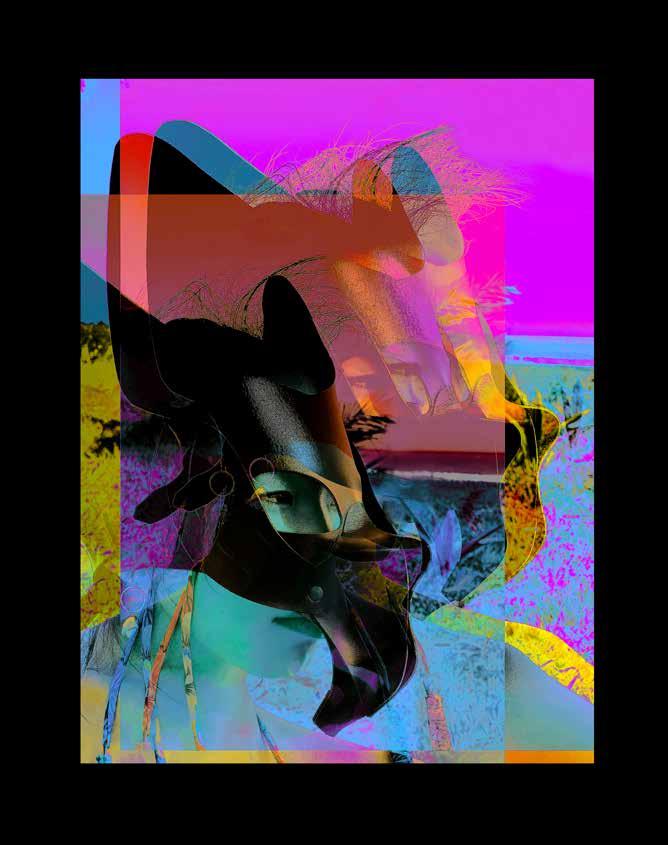
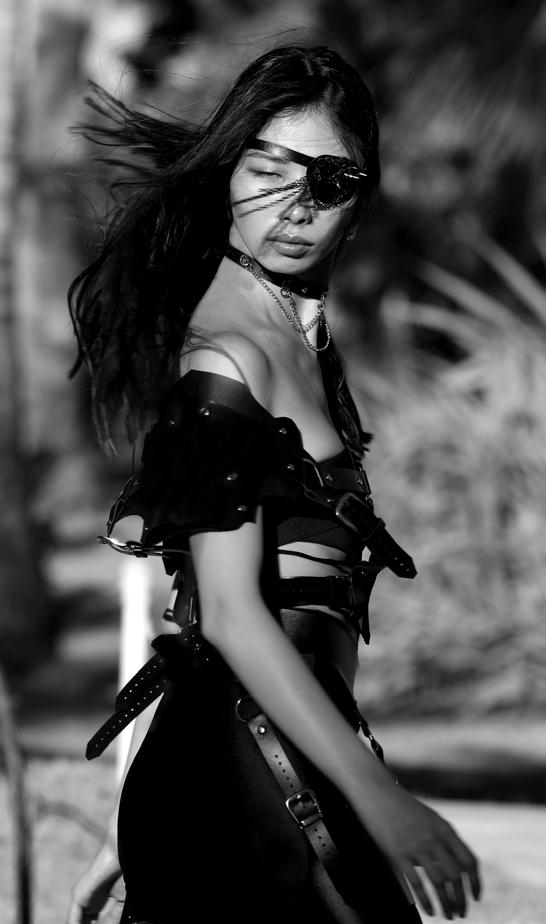

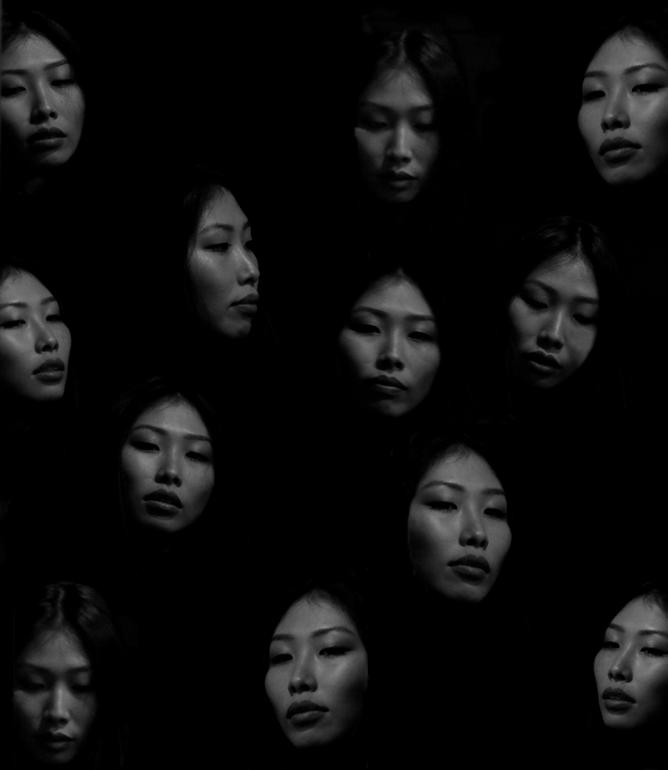
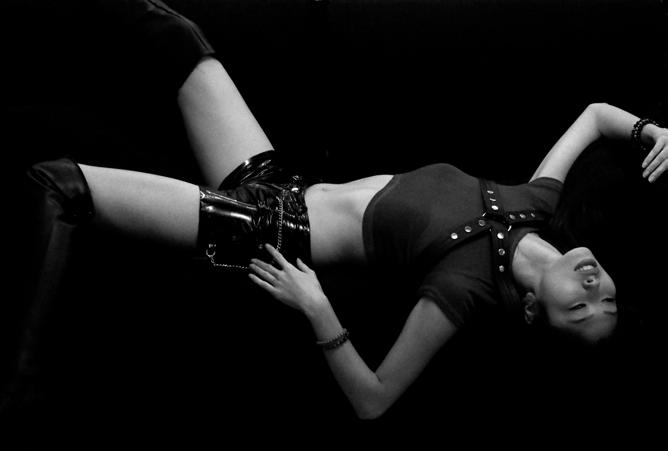

GAME OVER!
“Game Over” is the final stage of a cycle that began in 2017. Produced in the second half of 2024, this work represents my current imaginary universe and, with it, I close a phase of experiences that were more than necessary to start a new cycle of life. Turning 72 years old—50 of them dedicated to photography and cinema—has not been an easy journey.
The pleasure of being able to communicate with the world and with society compensated for any sacrifice. Art took over my life and became an endless form of therapy. Everything I am and have experienced is present in my work.
After countless exhibitions and published books, my life changed radically. I created and directed the feature film Vou Nadar Até Você (Ophelia’s Death), released at the Gramado Film Festival in 2019, shortly before I had to adapt to the onset of the Covid-19 pandemic in 2020.
The result of this whole transformation process is my new exhibition: MMXXV. It is who I am today, at 72 years of age.
Klaus Mitteldorf

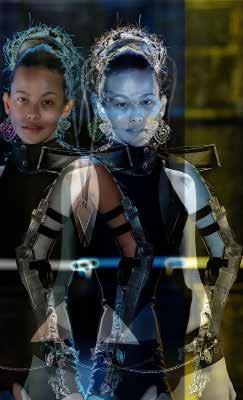
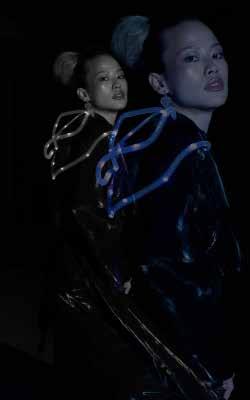
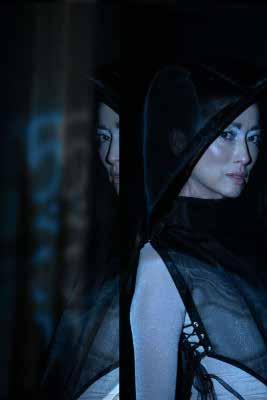


EDITORIAL
É com imensa satisfação que apresento esta edição da revista, dedicada ao olhar singular e à trajetória de Klaus Mitteldorf. Nossa parceria atravessa mais de três décadas e foi construída sobre confiança, amizade e admiração. Desde os primeiros tempos da Paparazzi, tive o privilégio de compartilhar Klaus e acompanhar de perto o desenvolvimento de suas obras, que sempre surpreendem pela ousadia e pela sensibilidade. Ao longo desses anos, Klaus explorou em suas obras cores, texturas e o corpo feminino, construindo uma ampla gama de trabalhos fotográficos impressionantes, que contribuem para elevar o nível da fotografia brasileira. Neste ano, nossa colaboração ganhou um novo capítulo especial. Participamos juntos da SP Arte com o lançamento do livro Klaus Mitteldorf MMXXV e a exposição na Carcara Galeria, momentos que reafirmam a relevância de sua produção artística e a força de nosso trabalho conjunto. A revista que agora chega às suas mãos é mais um espaço para celebrar essa trajetória e compartilhar com o público a potência do olhar de Klaus, que continua a se renovar sem perder a essência. Espero que cada página seja uma oportunidade de descoberta e de encontro com a intensidade de sua obra. Para mim, como editor e parceiro de longa data, é uma honra poder abrir este número com a certeza de que a fotografia de Klaus continua viva e pulsante.
Carlo Cirenza
NORAMI
O artista leva muitos anos para se descobrir, depois outro tanto para encontrar uma linguagem pessoal e original, para depois dominá-la, e ainda leva muito tempo para descobrir a técnica, o material e o meio para fazer suas obras.
Klaus Mitteldorf escolheu a fotografia como meio de expressão e fez isso de maneira completa. Não só utilizou a câmera moderna e tecnológica, como também toda a parafernália possível: aviões, helicópteros, balões, carros, motos, bicicletas — e até faz fotos a pé.
Suas fotos mostram claramente que se trata de um globetrotter, um dos famosos “Marco Polo” da fotografia. Ele pertence à geração de fotógrafos discípulos da filosofia fotográfica pioneiramente implantada pelas revistas Look e depois Life, hoje seguida pela GEO, a versão alemã do Geographic Magazin. Mas acho que Klaus tem duas visões que o dividem como artista, e uma delas é seu lado atlético; a outra, sua herança germânica de grande tradição gráfica.
O Klaus é um gráfico e fico com esse lado do artista. Se ele não fosse fotógrafo, seria gráfico, pintor, escultor ou mesmo designer; tem uma perfeita visão do equilíbrio gráfico europeu, como os mestres Kurt Schwitters, Mondrian, Werner Schreib ou Hans Friederich, que dominam o espaço e o conteúdo com um talento e um equilíbrio únicos. Aliás, o grafismo sempre existiu; os alemães é que o descobriram como uma grande expressão de arte.
Klaus utiliza o visor da câmera como um papel modulado e enquadra seus elementos como um tipógrafo enquadra seus tipos. Ele ainda é possuído pelo glamour de manequins fazendo poses em praias tropicais, mas acho mais perfeitos os elementos dele — estáticos — que, com um desequílibrio natural, compõem com seu talento fotográfico.
Ele é um autêntico paulista, igual a milhares de outros: alto e loiro mais parecendo um alemão de Hamburgo ou Munique.
Ele é o verdadeiro produto deixado pelos imigrantes que vieram de todas as partes do mundo para este fabuloso estado do Brasil: São Paulo.
Isso, por si só, já diz muita coisa, pois é gente séria, laboriosa e de grande talento. Aliás, Klaus é a nova geração dos fotógrafos alemães radicados em São Paulo, que deixaram marcas profundas, aportando sempre novos conhecimentos e novas técnicas.
Além dessa origem, Klaus tem outra qualidade: sua parte brasileira. É o Klaus boêmio, mas não é um boêmio comum. É um boêmio embebido pelo dia, embriagado pelo sol, pelo mar azul e pelos céus profundos. Fica vagando pelo mundo à procura de uma forma ou de um raio de luz, por uma sombra e uma cor, sem pensar, sem ganhar, sem tempo, sem hora, sem dia, como faz um bom boêmio.
A diferença do Klaus é que ele não dá a mínima bola para esse mundo absolutamente comercial, monetarista, frio e calculista. Como todo boêmio, ele também precisa de dinheiro para comprar filmes, lentes, câmeras, pagar viagens e até para uma bebidinha de vez em quando “profissionalmente”. Por isso aceita trabalhos comerciais, justamente para poder ter recursos para voar, fazer suas fotos, suas imagenes embebidas de cores delirantes, que são um porre à beira mar. Mas, como poderão ver, o Klaus é um boêmio muito sério. Suas fotos jamais estão fora de foco, nem tremidas, muito menos balançam. São precisas, retilíneas, quase cortantes. Acho que esse é seu lado alemão, perfeccionista. Essa bela combinação de um brasileiro boêmio e alemão é um coquetel perfeito, com os seguintes ingredientes: uma dose de céu, duas doses de mar, uma mulher, um coqueiro, duas bananas, um guarda-sol amarelo e um lenço magenta; coloca-se tudo dentro da câmera, bate-se bem, aperta-se o obturador e revela-se um Klaus Mitteldorf.
Francesc Petit
O ÚLTIMO DIA DE PRIMAVERA
Tudo começou com uma fragrância agridoce que tomou o ar. Então ficamos em alerta. E logo elas vieram, muitas delas, mais que muitas. Como sombras, só que de luz. Amazonas, ardentemente apaixonadas — as fêmeas de algum lugar. Quanto mais perto chegavam, mais forte ficava o perfume; embriagados, dançávamos às cegas entre nós mesmos. Elas não queriam muito, nem mesmo Poder. Em suas bolsas de pele de lontra — disseram elas — carregavam velhos fantasmas do nosso inconsciente. Era isso que nos assustava; era isso que nos enfeitiçava. Suprema ironia. Foi com os nossos próprios demônios que as Amazonas nos subjugaram.
E, quando não havia mais nada a fazer, porque já não tínhamos força nem Vontade — e éramos então puro instinto —, entregamo-nos ao prazer que elas nos davam.
Foi assim que elas vieram uma, duas, três vezes.
Depois da quarta vez, já não suportávamos a ideia de esperar. Corremos para a Floresta, escalamos as dunas, mergulhamos no mar, procurando qualquer sinal de sua chegada. E, quando a primeira fragrância se fazia sentir no ar, começávamos a uivar. Era feitiçaria. Era cio. Então corríamos para nossos ninhos e fingíamos estar dormindo.
As Amazonas já não precisavam brandir suas bolsas. Éramos um povo conquistado. Agora era apenas questão de escolher a rede, tocar peles e aproveitar o prazer. Quando elas iam embora, voltávamos à vida de todos os dias.
Com a sensação de que algo muito novo estava germinando tanto em seus ventres como nos nossos.
Valdir Zwetsch
UMA QUESTÃO DE SENSUALIDADE
Lilo Wirth: Klaus Mitteldorf, como tudo começou?
Klaus Mitteldorf: Quando eu tinha doze anos, ganhei minha primeira câmera. Achei imediatamente muito fácil capturar coisas com ela e, assim, tornar o mundo acessível para mim.
L. W.: E como as coisas continuaram a partir daí — a vida, as fotos?
K. M.: Eu tentei mudar o mundo um pouco por meio da fotografia. Mas levei muito tempo para perceber que isso realmente funcionava. Então eu já tinha 25 anos. Nasci em 1953. Só em 1978 é que realmente levei a fotografia a sério. Porque eu também tinha começado a estudar arquitetura; isso foi em 1975. Naquela época, a fotografia era algo paralelo; eu tirava muitas fotos na praia, porque eu também era surfista.
L. W.: Exatamente. Você é brasileiro...
K. M.: Eu moro em São Paulo. Foi lá que nasci e cresci. Foi lá que passei a maior parte da minha vida. Viajo muito; já estive em todos os lugares. Quando terminei meus estudos de arquitetura, em 1978, comecei a trabalhar como fotojornalista em diversas áreas. Dessa forma, fotografei todo tipo de coisa: shows e arquitetura, esportes e muitas outras coisas. Nunca trabalhei como arquiteto, mas meus estudos de arquitetura me ajudaram muito. No fim, facilitaram minha decisão final de ser artista. Porque esse sempre tinha sido meu problema até então: eu nunca soube o que seria de mim, porque sempre gostei de tantas coisas diferentes.
L. W.: Então a fotografia o resgatou do dilema de ser uma pessoa multifacetada?
K. M.: Sim, de certo modo. Porque por um tempo eu também estudei em Hamburgo. Quando terminei a escola no Brasil, fui para Hamburgo me preparar, durante um ano, para o “abitur” alemão, o exame de conclusão escolar que qualifica para a entrada na universidade. Depois disso, assisti a aulas de oceanografia na universidade. Porque o oceano, o mar, sempre
me fascinou. Na maioria dos meus trabalhos, o mar está sempre presente. Minha cidade natal, São Paulo, não fica exatamente à beira-mar, mas não é longe. Sempre tive uma relação próxima com o mar; eu o amo e tento ficar perto dele. Já visitei o Havaí cinco vezes; se somar todas as minhas estadias, já passei lá pelo menos um ano inteiro. Onde estive — África, Chile ou Bali —, sempre havia o mar. Todas essas viagens estavam quase automaticamente ligadas à fotografia. A câmera parece fazer parte de mim. E tudo é interessante.
L. W.: Mas ainda assim você quer mudar — ou melhorar — o mundo por meio da fotografia?
K. M.: Não me importaria de melhorá-lo, se fosse possível. Mas o que realmente tento fazer é mostrar, nas fotografias, meu próprio modo de ver. Porque tenho uma forma muito pessoal de representar as coisas. Por isso é inevitável que eu modifique um pouco as coisas, porque quero representá-las do jeito que meus olhos gostariam de vê-las. Isso não quer dizer que eu não gosto do mundo; na verdade, acho-o muito atraente. Sou até fascinado por coisas de que outros não gostam. Frequentemente vejo detalhes muito interessantes, pequenas coisas, que outros não notam. Antes, na primeira fase da minha vida como fotógrafo, eu basicamente documentava as coisas. Isso foi nos quatro ou cinco primeiros anos. Naquela época, fotografava muitos temas ligados à natureza e ao ser humano. Buscava o estético e, assim, formei minha própria linguagem.
L. W.: Como você definiria essa linguagem?
K. M.: No momento, consiste em coisas muito gráficas. Isso certamente se deve à influência dos meus estudos de arquitetura, que me ajudaram a me encontrar. A primeira certeza que tive na vida foi que eu era muito bom em compor. Dessa forma, surgiram coisas muito gráficas. As composições eram muito fortes, com muita cor. Mesmo nas fotos em preto e branco dessa série, a cor ainda é reconhecível.
L. W.: Como você representa a cor no preto e branco?
K. M.: É um tipo de preto e branco que mostra um certo
contraste, uma coloração inexistente, e ainda assim de algum modo reconhecível. Uso diferentes tons de cinza, preto e branco. Nos trabalhos mostrados aqui, há um pouco de tudo o que já fiz. As fotos dessa série foram criadas nos anos de 1990 e 1991. Todas foram tiradas no Brasil, em São Paulo. Não todas de uma vez, mas ao longo desses dois anos, em cinco ou seis etapas, nas quais eu sempre buscava novas interpretações. Assim surgiu uma história frequente.
Em 1989 publiquei um livro na Suíça, que mostrava exatamente o que eu tinha desenvolvido nos dez anos anteriores, como meu próprio estilo, trabalhos muito gráficos e muito coloridos. Até então, eu me sentia absolutamente confortável com esse tipo de fotografia, mas depois que o livro foi publicado e esse trabalho terminou na minha vida, procurei novos elementos.
L. W.: Então esta série define uma fase intermediária?
K. W.: É uma fase de mudança, que foi, aproximadamente, de 1988 a 1992. Durante esse tempo, experimentei e busquei coisas novas. Com esse trabalho descobri um novo caminho. Então ele se tornou muito rico e marcou o início de um novo desenvolvimento.
L. W.: Poderia ser chamado de um trabalho experimental?
K. W.: Sim, fiz muitas experimentações com mulheres, com elementos. As mulheres estão sempre presentes no meu trabalho, como o mar ou a água. Sempre tem que ter um elemento adicional. Deixei para trás a estática, que antes eu preferia. Abandonei a composição rigorosa e tentei incorporar movimento às imagens, além de mais expressão. Isso foi muito importante para mim.
L. W.: São exclusivamente imagens de mulheres? Não há homens?
K. M.: Desde o início, nunca fotografei homens, só mulheres. As mulheres são os seres de que preciso para me expressar. É difícil dizer por que isso acontece; não sei até hoje. Mas de alguma forma elas me inspiram, e tenho uma relação muito boa com as mulheres. Portanto, é fácil para mim transmitir
meus pensamentos a elas. Elas me entendem e conseguem interpretar o que quero mostrar.
L. W.: Não se trata também de outra coisa?
K. M.: É uma questão de sensualidade, mas certamente não de erotismo. Às vezes, especialmente aqui na Alemanha, as pessoas me entendem mal nesse ponto. Não me preocupo com o erotismo, mas com algo muito mais sutil. A maioria das pessoas talvez nem perceba isso. O erotismo pode até aparecer — à primeira vista —, mas por trás dele há algo completamente diferente. Um artista não consegue facilmente expressar em palavras o que vê.
L. W.: Ou então teria se tornado poeta ou escritor...
K. M.: Por outro lado, o meio da fotografia torna muito fácil para mim expressar meus sentimentos. Essa série contém, em diferentes formas, muitas coisas que vivi durante o tempo em que ela foi criada. Isso vai desde o estético até as emoções mais sutis. Se você olhar para as imagens por algum tempo, pouco a pouco vai descobrir coisas que não são tão aparentes. As imagens são menos superficiais do que se pensa.
L. W.: Não é também uma questão de quem você fotografa?
K. M.: Certamente. A maioria das pessoas mostradas aqui são mulheres que conheço. Uma é dançarina, outra é atriz, outra pode ser modelo. Mas não procuro modelos, e sim mulheres que de alguma forma estejam conectadas ao trabalho que estou fazendo naquele momento. Elas precisam ter uma certa ligação com ele. Como me preocupo muito com expressão — expressão física e interpretação —, precisava de pessoas bastante especiais, que estivessem à altura. Foram sempre as mesmas três ou quatro garotas com as quais, durante aqueles dois anos, repeti as mesmas coisas várias vezes e acrescentei outras novas.
L. W.: Havia algo como um plano?
K. M.: Não é um trabalho que se faça em um ou dois dias. Eu não tinha um layout rígido na minha cabeça. Na verdade, não tinha nada de particular em mente, apenas novas
histórias. Sabia que queria interpretar algo com esses xales e esses corpos. Então experimentei muito, e também me deixei inspirar. Por exemplo, por Rodin e Camille Claudel. Esses dois me emocionaram bastante naquela época. Esteticamente, estavam muito presentes na minha mente: vi uma exposição e li livros sobre eles. Mas, embora eles me inspirassem, não devemos traçar paralelos.
L. W.: Você usou os xales para enfatizar o aspecto escultórico?
K. M.: Exatamente. Não apenas para enfatizar, mas também para criar novas formas e narrar histórias.
L. W.: Não é uma abordagem bastante abstrata?
K. M.: É mesmo. Mas há todo tipo de histórias diferentes. Há, por exemplo, algo medieval ou algo mitológico. Explorei vários campos. Depois há esses grandes elementos tubulares, que também uso para interpretação. Uma foto, por exemplo, chama-se “Anna e a Serpente”, outra “Anna e a Borboleta”.
L. W.: Notei que você tende a transformar mulheres em criaturas animais. O que exatamente isso significa?
K. W.: Pessoalmente, não tenho a menor ideia. Como já disse, não tenho layout, não tenho plano. Organizo uma sessão de fotos, reunindo tudo o que quero em um lugar: as mulheres, a paisagem, os elementos. E então simplesmente deixo fluir, sem pensar muito. Isso simplesmente brota de mim, como a natureza quer. Como e por que isso acontece eu não sei até hoje. Ainda não encontrei nenhuma explicação.
L. W.: Não poderia ser este o privilégio do fotógrafo, o de não precisar explicar? Ao contrário dos pintores contemporâneos, escultores e artistas que estão completamente distantes do objeto e, por isso, precisam se apoiar em um referencial teórico. Talvez o fotógrafo não precise tanto disso?
K. M.: Sim; mas no meu caso ainda é necessário. Porque é exatamente a mesma coisa: preciso combinar esses elementos. Estou justamente lendo um livro de Wim Wenders sobre fotografia; seu título é “Once”. Ele escreve sobre como a
fotografia realmente acontece apenas uma vez, naquele único e preciso momento. Basicamente, continua ele, há duas imagens: a que o fotógrafo está tirando e vendo naquele exato momento, mas também a fotografia como seu autorretrato por trás da câmera. O que ele representa naquele instante em que aperta o botão do disparador.
Lilo Wirth
International Nude Photography Magazine
A MORTE DE OFÉLIA
Há fotógrafos que viajam o mundo todo em busca de suas fotos; outros investem em dispendiosos estúdios, e outros perseguem personalidades, ricaços e beldades, na esperança de flagrá-los desatentos... Klaus Mitteldorf, no entanto, não precisa de muito para estabelecer seu universo fotográfico: três modelos, uma piscina, flores de plástico e fundos de tecido bastam para transformar as suas visões em imagens. Pois não é a realidade, tal qual se apresenta à sua volta, o que interessa à sua fotografia, e sim aquele universo originado na sua cabeça, sua fantasia, nos seus sonhos. Em seu mais recente livro, com o complicado título «Zur Rechtfertigung der hypothetischen Natur der Kunst und der Nicht-Identität in der Objektwelt» (Para a justificativa da natureza hipotética da arte e da não-identidade no mundo objetivo), Peter Weibel afirma: “É arte demonstrar que o mundo seja artificial”. Perguntamo-nos como fazê-lo... O ponto de partida teria de ser um confronto direto com o mundo, a fim de demonstrar o seu caráter, a sua artificialidade. Mas aquele que retrata o mundo, tal qual ele se apresenta, corre o perigo de, no final, ter em suas mãos uma imagem que harmonize tanto com a realidade, tal qual a percebemos, que ela acabe nos parecendo extremamente normal e corriqueira, e que, assim, a realidade fotografada não mais pareça artificial, mas sim exatamente real. No entanto, Peter Weibel também não pressupõe que baste retratar a realidade por meio de outros instrumentos a fim de desmascará-la como sendo artificial. A atual e evidente popularidade da fotografia produzida reside, provavelmente, no fato de que ela tenha reconhecido no seu próprio meio seus limites para analisar a realidade, buscando agora possibilidades de anteceder a análise à fotografia ou, em outras palavras, não mais analisar fotografando, mas fotografar o já analisado. Essa é uma questão de central importância para Klaus Mitteldorf. Em sua conversa com o artista Luiz Paulo Baravelli, ficou evidente que o fotógrafo se encontra num
processo de desligamento da fotografia profissional, que, na sua opinião, não lhe permite exercer a introspecção, o egocentrismo e a fantasia descompromissada. O interessante nesse processo de mudança de fotógrafo publicitário a fotógrafo-artista é o fato de que não se trata de uma transformação de documentador da realidade a documentador de mundos fictícios, mas sim de uma mudança de paradigmas: da ficção social, da realidade virtual da publicidade à ficção subjetiva da fantasia individual. Que a mudança da fotografia publicitária para o mundo das artes plásticas seja vivida em primeira linha como um ato de liberação condiz, sem dúvida nenhuma, com esse processo. No entanto, não se trata de uma mera alternativa: fotógrafo ou artista, como quer Baravelli. Confrontado com as presentes reproduções de Klaus Mitteldorf, Baravelli constatou que o fotógrafo está condenado, sempre, a fotografar algo concreto, enquanto o artista plástico tem a seu dispor o mundo imaginário e abstrato. É sua, também, a imagem do fotógrafo como uma espécie de caçador de uma realidade sempre já estabelecida e exterior à obra. Na sua opinião, fotos produzidas como as de Klaus Mitteldorf, com complexas e demoradas montagens, não podem ser consideradas fotografias em si. Uma vez que alguém decida exprimir-se por meio de fotos, tem de sempre levar em consideração que a estética e a técnica estão intrinsicamente interligadas. Não existe, afirma Baravelli, uma fotografia abstrata, no sentido de que existe uma pintura abstrata. Todas essas ponderações têm de ser mencionadas, por equivalerem, em alto grau, àquelas de Klaus Mitteldorf. E por ilustrarem, de um lado, o círculo de problemas com os quais o fotógrafo é confrontado em seu trabalho atual, e, de outro, suas dúvidas em relação à sua definição enquanto fotógrafo. Como já afirmei anteriormente, não se trata da alternativa entre fotografia ou artes plásticas. A questão é o que o fotógrafo faz, quais são seus interesses e problemas e como se manifestam não só em cada foto, mas em toda a sua obra.
Se fosse verdade que o fotógrafo está condenado a
retratar exclusivamente a realidade exterior, então somente a fotografia documentativa, como o fotojornalismo, o retrato, a fotografia de arquitetura ou de paisagens poderia ser denominada como tal. Todo o campo da fotografia de publicidade e de arte, que se movimenta em universos da ficção, deveria ter outro norne. Existe, sem dúvida alguma, uma fotografia abstrata. Os anos 1950 também deixaram suas marcas na fotografia. As pinturas de gelatina prateada de 2 x 1 metro de Chargesheimer, os “chimigramas” de Pierre Cordier, as abstrações de Fritz Pitz, Hans Martin Holzhäuser ou Gottfried Jäger, para mencionar alguns, são exemplos conhecidos dessa linha na fotografia. Sem dúvida alguma diz respeito também ao fotógrafo, o que Klaus Mitteldorf concede em primeira linha às artes plásticas, ou seja, que ele possa criar a sua própria estética oposta ao senso comum vigente, se quiser evitar que a estética fotográfica seja jogada para a técnica fotográfica em si. Expõe-se a esse risco aquele que não realiza esse rompimento, mas subjuga sua perfeição técnica e suas noções estéticas às regras da fotografia profissional da mídia. Klaus Mitteldorf está seguindo essa difícil trilha, procurando sua, por assim dizer, linguagem figurativa (que ele domina tão bem), novos conteúdos, agora por ele mesmo definidos. O desligamento da fotografia profissional representa para Klaus Mitteldorf um ato de liberação, uma independência na definição do conteúdo de suas fotos. E é exatamente a isso que alude quando, em conversa com Baravelli, fala da contradição que há entre o trabalho do artista plástico e o do fotógrafo. Klaus Mitteldorf não se opõe tanto à estética da fotografia publicitária, mas sim à sua definição exterior. Tal qual anteriormente Reinhardt Wolf, ou, hoje em dia, Peter H. Fürst, ele se esforça em encontrar o seu caminho, dissolver a contradição vigente entre o fotógrafo artista e o fotógrafo profissional da mídia.
Klaus Mitteldorf não vê necessidade alguma em negar a sua habilidade e apuro técnicos e, assim, produzir fotos de baixa tecnologia, como fazem artistas plásticos que trabalham com fotografia. Nessa atitude, temos de lhe da razão.
Pois, se a tecnologia não é critério para as artes plásticas, ela também não poderá ser para a fotografia de arte, ou seja, nem a utilização perfeita da tecnologia fotográfica nem a amadorística poderão ser critérios para a avaliação de uma obra de arte. Foi em seu trabalho na mídia que Klaus Mitteldorf aprendeu, exemplarmente, a formular ficções fotograficamente, a fazer a fantasia parecer realidade. Agora, no entanto, não mais transporta para fotos as ideias da publicidade, e sim suas próprias. E é extremamente importante para ele que pareçam sempre ficções, que nelas transpareça a artificialidade e que não possam, jamais, ser confundidas com a realidade. Mas, sendo suas fantasias agora tornadas visíveis, são também parte da realidade, colocações em relação a ela mesma. Não interessa a Klaus Mitteldorf, porém, criar meras oposições críticas da realidade, e sim ensaios de uma “contra-realidade” bela e idealizada, a qual só se pode colocar criticamente em relação à realidade, enquanto ela mesma for sem mácula alguma. As reproduções aqui apresentadas podem ser subdivididas em três partes: as fotos aquáticas, os balés geométricos e os amorfos jogos de formas. Todas têm como característica comum um colorido que nos parece artificial. Nas áreas iluminadas, a água é vermelha, os corpos são verdeamarelados, as flores, azuis e verdes. Nos balés geométricos, os corpos são naturalisticamente pIásticos, mas são confrontados, complementados ou encobertos por elementos de plástico e de vidro; com isso, sua corporalidade é, por um lado, sublinhada, e, por outro, acaba parecenclo irreal. As fotos aquáticas mais impressionantes são aquelas nas quais a água age como linha demarcatória de dois mundos, cortando o corpo em dois. Quanto maior a sua plasticidade, tanto maior a dficuldade em definir o espaço. Na série em preto-e-branco com o tecido escuro, surgem, constantemente, novos seres, pernilongos, lembrando insetos e aranhas, nos quais se entrevêem as formas dos corpos, e que, no entanto, mostram estátuas móveis nas mais diversas posições. Esculturas, elementos como a água e o vento, movimento, balé.
Esses são os termos que nos vêm à cabeça quando observamos as reproduções de Klaus Mitteldorf. Não é à toa que algumas cenas recordem o balé triádico de Schlemmer, que a exasperada artificialidade de algumas cabeças lembrem esculturas de Salvador Dalí ou da Arte Pop. Mas muito no efeito de estranheza e de novidade é motivado por um colorido, que tem a sua pátria no Brasil. Um colorido ao qual não estamos habituados, e que, possivelmente, só conhecemos de algumas imagens do Carnaval no Rio. Esse colorido não é meramente multicor.
Tomadas isoladamente, as cores poderiam até ser definidas como tons encobertos e quentes. A impressão de colorido resulta, em primeira linha, de uma mistura de cores que não respeita as nossas regras de combinações cromáticas.
Encontramos, acima de tudo, uma série de combinações de cores não complementares, que, pelo contrário, encontramse próximas às outras no círculo cromático, como, por exemplo, verde azulado, azul, violeta e vermelho púrpura. Aos olhos europeus, essas combinações são desarmoniosas, ou ao menos estranhas. Para nós, esse colorido, na sua totalidade, só pode sublinhar a impressão de artificialidade, de mundos fictícios. Mas como poderia ser de outra forma em um mundo no qual as flores são de plástico, e, mesmo assim, esse não é o motivo pelo qual parecem tão artificiais.
Dr. Reinhold Mißelbeck
Diretor do Departamento de Fotografia e Vídeo Museu Ludwig, Colônia, Alemanha
FLOWERS
A fotografia é hoje um produto altamente tecnológico. Não importa o que esteja sendo visto pela câmera. Da lente para trás até a cópia final, o processo tem a precisão e o mistério técnico associados à indústria avançada. Seria possível, marginalmente, existir ainda uma foto artesanal, em que o artista-fotógrafo fabricasse a câmera, o filme, a química e o suporte da cópia –mas não é absolutamente o caso aqui. Klaus Mitteldorf usa a melhor máquina, o melhor filme, a melhor luz e o melhor papel. A impressão que seu trabalho causa é de extremo apuro técnico, de algo no limite do possível com a tecnologia fotográfica atual. Se um fotógrafo se coloca como publicitário ou profissional da mídia, essa foto tecnicamente perfeita estará em seu habitat: o último modelo de automóvel fotografado pelo último modelo de máquina fotográfica, fotolitado a laser e impresso na revista pela mais moderna rotativa. Não há solução de continuidade, e o leitor recebe uma mensagem que não é estranha ao meio que a produziu. Tudo estaria bem. Klaus poderia se definir como esse tipo de profissional e levar essa atividade de modo satisfatório e sem problemas. Mas, para melhor ou para pior, foi mordido pelo vírus da arte e o que poderia ser uma profissão rentável e glamourosa se tornou uma camisa de força. Quando um fotógrafo se redefine como artista, tudo se complica muito, principalmente com a associação evidente da foto com a pintura, entendida aqui no sentido amplo de produção de imagens fixas. Enumero alguns dos pontos onde as duas atividades se encontram e conflitam:
- O fotógrafo, em uma definição estrita, está limitado a criar um negativo e copiá-lo de um modo que se pode dizer definitivo. O fotógrafo purista não corta seu negativo, não interfere nele depois de revelado, e sua cópia “autorizada” deve poder ser repetida igual.
- A um artista plástico é permitida uma infinidade de processos manuais e industriais que estão fora do procedimento padrão.
Ele pode incorporar processos de baixa ou nenhuma tecnologia, misturar harmonicamente o tradicional com o ultramoderno.
- O fotógrafo está condenado a fotografar algo concreto, enquanto ao artista plástico se abre facilmente todo o mundo imaginário e abstrato.
- Há um impedimento, cultural agora, para o fotógrafo de publicidade ou de moda em transgredir o belo, o limpo, o elegante. Este é um problema central para Mitteldorf.
- Uma pintura de um metro quadrado é um formato médio ao alcance de qualquer pintor, mas um tamanho heróico para uma cópia fotográfica. Uma sensação de claustrofobia vem de fotos que compactam muita informação em formatos pequenos. É preciso lembrar que, em uma foto, o espaço estará no assunto, mas em uma pintura o espaço estará na superfície pintada.
- As artes plásticas, e especialmente a pintura, têm uma história muito longa, algo como quarenta mil anos. Como a fotografia tem uns 150, mudar de um campo para outro amplia muito o universo de referências e comparações. Uma coisa simples em fotografia – um retrato, digamos – quando considerada no âmbito maior da pintura, tem de lidar também com todos os outros retratos já feitos.
- A questão do tempo e do “momento decisivo”. Falando sobre Cartier-Bresson, o crítico Dan Hofstadter diz que toda fotografia é “uma intercepção”. A pintura mais singela é uma construção deliberada e sucessiva, enquanto o fotógrafo é uma espécie de caçador de uma realidade já pronta e exterior à obra. Eventualmente, uma foto posada, como acontece aqui, pode ter uma montagem complexa e demorada, mas o instante em que esta cena se torna fotografia não é uma construção, principalmente por ser muito breve, quase imperceptível. Fotografia, enquanto artes plásticas, coloca em conflito a produção com o registro. Em termos simples, trabalha-se muito quando se fotografa, mas é um trabalho que acontece antes e depois do momento cego e decisivo. Quando se pinta, a situação é exatamente simétrica.
- Estamos hoje, pintores e fotógrafos, em uma posição subalterna
em relação às técnicas, mas isso se torna mais pungente no caso do fotógrafo. Se, por exemplo, no século XVIII ninguém entendia mais de tintas do que o artista pintor e ninguém entendia mais de fundição de metais do que o mestre escultor, hoje certamente a Rolls-Royce entende mais de superfícies pintadas do que qualquer artista, e a NASA entende mais de fundição do que o mais informado escultor. Mesmo o fotógrafo mais técnico tem um conhecimento apenas esquemático de como funciona todo o seu material e, mesmo que estique os limites, é obrigado a ficar dentro do que a Hasselblad e a Nikon lhe fornecem. O pintor tem pelo menos a possibilidade de fazer sujo, errado e artesanal – e, com isso, exercer uma independência simbólica.
- É normal, quando se fotografa, que em uma hora se usem cinco rolos de filme. Depois, dentre as 180 fotos, escolhe-se uma. O processo do artista é muito mais árduo – me dou por satisfeito se consigo fazer um trabalho a cada dez dias de dez horas de ateliê por dia. Bom ou mau, esse trabalho vai embutir toda essa concepção. Não nego o esforço de um fotógrafo, mas é um esforço mais difuso, centrífugo, e não centrípeto como o do pintor. A hipótese de apertar o disparador uma vez a cada dez dias deveria ser considerada pelo nosso fotógrafo tornado artista.
- Em arte, em pintura em particular, metade do trabalho é tirar coisas depois de tê-las colocado, retrabalhar, ir corrigindo o rumo dentro do trabalho. Talvez isso seja possível tecnicamente na fotografia, mas vai contra toda a sua praxe.
- Poder-se-ia argumentar que estou inventando esta mudança de Mitteldorf para o mundo das artes plásticas, que ele mesmo não se coloca claramente assim. Explico: o modernismo nos colocou a todos em uma situação ambígua; chama-se hoje “artes plásticas” uma gama quase infinita de manifestações e técnicas. É artista plástico aquele que faz minúsculas aquarelas figurativas e sentimentais e o que projeta raios laser na Lua, o que faz instalações gigantescas com sucata ferroviária e o que cava buracos no deserto, o grafiteiro, o performático descabelado e o artista conceitual que só usa textos datilografados. Alguns
até tiram fotografias. Ficou difícil estabelecer um limite. Depois de mais de cem anos de luta para afirmar a autonomia do artista, o modernismo venceu, mas essa vitória tem aspas. Podemos fazer o que quisermos e chamar o resultado de arte – e essa é uma situação muito simples, mas muito difícil. Na verdade, em todos os exemplos de “artistas plásticos” enumerados acima há, entre eles, apenas um tênue fio de ligação, que é uma atitude de introspecção, egocentrismo e fantasia descompromissada. É a única coisa que os une, uma vez que materiais, processos e modos de produção, veiculação e financiamento variam aleatoriamente. A impossibilidade de exercer a introspecção, o egocentrismo e a fantasia descompromissada é que fazem da foto profissional a camisa de força contra a qual Klaus está lutando. À medida que ele se afasta do trabalho publicitário e ilustrativo e registra desinteressadamente suas fantasias pessoais, passa a ser um artista plástico e até um artista plástico tradicional (um “pintor”), uma vez que de sua atividade resultam superfícies tratadas, fixas e duráveis. Na frase clássica do surrealismo, não é a cola que faz a colagem e, certamente, hoje não é a tinta que faz a pintura. É uma questão de atitude.
Parece que a hipótese, um tanto quanto vertiginosa, de se tornar um artista “tout court” ainda está amadurecendo para ele. É fácil e não completamente correto dizer que ele ainda se refugia na técnica que conhece bem. Se, do lado de trás da câmera, sua certeza é indiscutível, o que esta câmera vê é um emaranhado de problemas; o fotógrafo sabe exatamente o que faz, mas o homem tateia. Escrevi em outro lugar que, ao iniciar uma obra, um ilustrador sabe tudo e um artista não sabe nada. Toda a sua experiência técnica pouco pode elucidar dos problemas especificamente artísticos, da imagem em si. Apesar desse “não saber nada”, a trajetória de seu trabalho se desenvolve com clareza. Das primeiras fotos reproduzidas, de 1984 a 1990 (das quais não gosto) até as recentes (das quais gosto muito), a evolução é no sentido do exterior para o interior, da estilização para a delicadeza, do efeito para a sensibilidade. É curioso ver
que o trabalho evolui, mas vai ficando mais tentativo, apalpando possibilidades e correndo o risco de entreter visões simultâneas e conflitantes. Dentro dele, o fotógrafo e o artista apontam para extremos opostos do universo artístico. Essa tensão entre polos impregna de dualismos todo o processo de Klaus Mitteldorf. Alguns desses dualismos são claros e assumidos; outros, temos que descobrir. Se eu tivesse que resumir em uma frase o que está reproduzido neste livro, diria que há uma estética do desejo e um desejo pela estética lutando pela posse de sua alma. Vivemos em um mundo cindido pelas polaridades judaico-cristãs: céu e inferno, corpo e alma, cultura e natureza, homem e mulher são extremos nítidos, mas tanto estética como desejo são termos mais difusos e escorregadios. Escolher se exprimir através de fotos joga a estética para a técnica em si, com a clareza solar da superfície esmaltada em luta com o mundo mais escuro do desejo ao qual alude o assunto das fotos. Da lista de condições enumeradas antes quero ressaltar uma, simples: não existe fotografia abstrata, no sentido em que existe uma pintura abstrata. Nem mesmo os fotogramas por contato de Man Ray escapam dessa constatação: toda foto é foto de algo. Essa aparente limitação é usada por Klaus como um fato a favor: as fotos não são belas imagens obtidas de uma coisa qualquer, como uma natureza-morta, por exemplo, nem são achados acidentais como um bonito efeito de luz em uma escarpa montanhosa, no qual o fotógrafo não tem participação. Estas são belas fotos de belas (e metafísicas) situações criadas especificamente para serem fotografadas. É inevitável para o espectador imaginar-se fazendo estas fotos, sob o sol ou na água, em presença dessas míticas mulheres sem rosto. Haver uma correlação entre o clima da realidade e o clima que seu registro produz é aqui uma metáfora desse comprometimento figurativo da foto. É uma aproximação, mas podemos pensar que a estética é uma noção abstrata, enquanto o desejo depende de um estar aí, de uma realidade repensada. A imagem figurativa descreve a variedade do mundo e sua riqueza infinita, é uma arte da superfície das coisas. Como
diz Italo Calvino: “É apenas depois de conhecer a superfície das coisas que você pode se aventurar a descobrir o que há embaixo. Mas a superfície das coisas é inesgotável.” A arte figurativa é horizontal, topográfica, humana e transigente. O “procurar sob”, impossível segundo Calvino, é uma ascensão ou uma escavação, mirando o paraíso se escolhermos uma direção, ou o inferno se escolhermos a outra. A procura horizontal é estética, a vertical é ética. Matisse é horizontal, Mondrian é vertical, Andy Warhol é horizontal, Pollock é vertical, a Renascença Italiana é horizontal, a arte islâmica é vertical. A superfície sempre é bela e o que chamamos drama poderia ser descrito como o destino entrelaçado das superfícies do mundo; esse entrelaçamento pressupõe alguma superposição, um indício de verticalidade. Uma superfície é sempre o limite de um corpo e o interior do belo é um mistério. A passagem da beleza puramente formal para as recentes alusões ao misterioso é também uma das migrações polares pelas quais passa o trabalho de Mitteldorf. Nestas fotos é claro o indício que a água representa: um meio imensamente mutável e sensual, mas só possível ao homem em situações transitórias. A partir da superfície calma de um lago, pode-se com a mesma facilidade ver refletidas as estrelas ou afundar para um desconhecido hostil. Podemos pensar aqui, sem interpretações literais, nas metáforas junguianas do inconsciente. A série mais recente (de Ana na piscina) é, sem dúvida, a melhor arte desse álbum, as fotos que mais coisas têm para nós, onde a guerra e a festa do horizontal e do vertical, da superfície e da profundidade são mais nítidas. Flores e mulheres não pertencem à água e estão ali de passagem; é um instante o que está sendo representado e um instante de ação para a mulher, ser humano. Ela precisa nadar para ficar perto da superfície, onde está o ar de que vai precisar nos próximos segundos, mas as flores, símbolos estereotipados do belo, afundarão com certeza, já cortadas e mortas. Nadar pode ser um intenso prazer ou uma necessidade aterrorizante; que esses instantes de vida e morte sejam também os instantes do desejo e da beleza é um comentário sintético,
mas pungente, sobre a existência humana.
Há entrelinhas. Que as fotos sejam feitas em uma piscina e não em um lago ou no mar é uma alusão à arte e à declaração de artificialidade implícita. Uma piscina é um paralelepípedo de água e é pela geometrização da natureza que nos destacamos dela. Que as flores sejam de plástico é uma ironia sutil, porque isso só é percebido fora da foto, quando se lê os títulos, uma vez que a vista viu e se emocionou com “a natureza”.
Essa consciência das polaridades volta também claramente quando percebemos que há várias fotos copiadas em negativos ou, com um pouco menos de clareza, nos trabalhos mais antigos onde aparecem as duas modelos, a branca e a negra. Nessas fotos há de se notar um ar de violência, amordaçamento e imobilização, e isso tem um eco importante. Para muitas pessoas, o limiar entre o erotismo e a pornografia não é bem claro. Como a visão de Mitteldorf aponta algo nessa direção, me permito definir: sexo é ação, e o sexo erótico é uma ação harmônica entre duas pessoas; pornografia, entendida aqui como violência sexual, é qualquer ato de natureza sexual feito contra a vontade de alguém, em geral uma mulher, ou seja, uma imobilização dela, física ou mental, enquanto o homem age. Como pintor, trabalho muitas vezes com modelos mulheres e a própria situação de ficar imóvel enquanto o artista age tem um paralelismo com a pornografia. Nessas fotos de Ana e Zuleica isso é um dado perturbador; montar poses estranhas e forçadas, introduzir elementos geométricos e usar uma luz crua são a ação possível do fotógrafo aqui, ação quase ausente na série de Ana na piscina, onde a luz se distende, os gestos são de prazer e ela age de modo próprio, guiando a ação do fotógrafo e não sendo imobilizada por ele. As fotos estiveram perto de ser pornográficas, mas se tornaram eróticas.
Colocadas sabiamente como conclusão, a última e a antepenúltima fotos, de Karina gritando, apontam talvez uma direção para o trabalho futuro de Mitteldorf. Ele enfim chega perto dessa figura misteriosa, que age com paixão, gritando –
não sabemos se em chamamento ou desespero – e faz uma foto quase jornalística, em preto e branco e sem formalismos. É o registro da ação de uma mulher e não da pose de uma modelo. Closes são raríssimos em seu trabalho, e aparece de novo uma diferença polar entre essas fotos e uma similar, mais antiga (Papillon). O relógio fez uma volta completa, mas o tempo continua – boa viagem, Klaus!
Gostaria de acrescentar um outro pensamento diverso que o trabalho de Klaus desperta. É, surpreendentemente, uma noção política, numa obra que parece passar ao largo dessa questão. Ele é uma pessoa de dupla nacionalidade; meio brasileiro, meio alemão, uma das fontes de sua energia é a tensão entre esses dois modos de ser tão diversos. O país rico, velho, branco e ordeiro convive dentro dele com o país pobre, novo, mestiço e desigual. Essa polaridade implica também em pressupostos simétricos para os respectivos artistas.
Dizendo de modo simples, a função do artista é estar sempre do lado oposto do senso comum da média das pessoas e dizer o tempo todo que o inverso do que se pratica pode ser interessante. Assim, é característico como os artistas alemães mais sensíveis fazem, em geral, uma arte tensa, suja, amargurada, e como é vital, limpa e positiva a arte que, também genericamente, fazem os artistas brasileiros. Os artistas fazem sempre o oposto: dada uma fila de arrogantes e lustrosas limusines, pensa-se em furar pneus e quebrar para-brisas; dado um amontoado de calhambeques ferrugentos, pensa-se em remendá-los com arame para que durem mais um pouco. Nos primeiros trabalhos, Klaus é ainda duro nessa escolha moralizante: as fotos impõem uma geometria e uma limpeza quase à força; mesmo a cor “tropical” é áspera e esquemática, a sensualidade das mulheres proibitiva e seca. Há mesmo imaginações assustadoras, como a da foto da pág. 56. Ele foi percebendo que essa ordem “alemã” não serve aqui. É preciso encontrar uma ordem brasileira, e uma das coisas que mais me encanta nos trabalhos novos é quando ele a vislumbra. Um diplomata israelense, em visita ao Brasil, achou
impossível ter uma visão pessimista da vida em um lugar que tem tanta água, e a água serve para Klaus investigar os princípios dessa nova ordem brasileira: fluidez, leveza, iridescência e um erotismo metafísico que impregna até flores de plástico. É uma plataforma política própria para o país que desejamos.
Luiz Paulo Baravelli
KLAUS MITTELDORF REGISTRA A AGONIA DO MUNDO MODERNO
Em seu livro mais recente, “The Last Cry”, ele faz um flagrante das modelos como seres despreparados e sem rumo no fim do milênio.
Como fotógrafo, Cartier-Bresson se inseriu na ética surrealista, além de sua estética que, segundo suas próprias palavras, não passava de uma resolução de uma piada literal. Em outras palavras, o francês Cartier-Bresson nunca percebeu a paródia, mas sim a (po)ética do surrealismo — seja na construção de um mundo fantástico apelando apenas para elementos concretos — a mesma ética percebida pelo fotógrafo brasileiro Klaus Mitteldorf. Seu terceiro livro, “The Last Cry”, a ser lançado como parte do projeto Pinacoteca no Parque, é prova dessa resistência à estética e rendição à ética do surrealismo. O livro, que custará R$ 35 durante o evento (e R$ 45 nas livrarias), é um projeto sofisticado que será publicado pela Terra Virgem. “The Last Cry” tem 136 páginas e foi impresso em sete cores pela respeitada editora italiana Mondadori, com tiragem inicial de 3.500 exemplares. A publicação tem projeto gráfico de Sylvia Monteiro e prefácio do professor Rubens Fernandes Júnior. Nada tem em comum com os dois livros anteriores de Mitteldorf: “Norami” (1989) e “Klaus Mitteldorf Photographs” (1992). Tratase de uma investigação de signos de outra natureza. Enquanto os dois primeiros funcionaram como uma vitrine do impecável trabalho técnico de um fotojornalista formado em arquitetura e dedicado à moda e à publicidade, “The Last Cry” é um ensaio sobre a dor existencial. Mais exatamente, sobre a angústia do fim do milênio, quando o mundo parece ser povoado por sobreviventes de todos os tipos (portadores de doenças raras, vítimas de desastres nucleares, deprimidos crônicos etc.).
O “grito” pode ser tanto o grito primal de alívio de Munch quanto
o da parte final de “The Waste Land”, de T. S. Eliot — um grito de socorro para toda a humanidade.
Belas top models, comumente vistas nas capas de revistas internacionais, emergem gritando das águas de lagoas, praias e rios, mas seus gritos, parafraseando São Mateus, não são ouvidos nas praças. É um grito silencioso, mudo, inaudível. Portanto, um grito puro de desespero que ecoa de corpos submersos. O afogamento, obviamente, é uma metáfora para os limites a que todo ser humano está submetido. Pode representar tanto a morte como o renascimento. O tema é muito familiar ao fotógrafo, experiente surfista, que já salvou pelo menos três pessoas de morrer afogadas. As locações são variadas — de um lago na Baviera ao rio Paraguaçu; do sertão da Bahia a piscinas e praias. As técnicas também variam — de Polaroids a filme e pré-impressão, incluindo o processo de papel salgado do início do século.
Entre as 60 fotos escolhidas pelo curador Rubens Fernandes, “Authobahn” (autoestrada), uma série de 22 fotogramas, chama a atenção pelo tom dramático do grito da modelo nesse painel de quatro metros de comprimento. Desta vez, o meio não é a água, mas a terra. Realizado há cinco anos, na estrada que liga Munique a Salzburgo, o ensaio mostra a modelo alemã Alexandra (semelhante a Liv Ullmann no final de “A Vergonha”, de Ingmar Bergman), moralmente abalada pelas guerras civis e envergonhada por ser uma das sobreviventes do Holocausto.
“Não sou um fotógrafo sutil, gosto de cores fortes e sempre busquei um alto nível de excelência técnica”, diz Mitteldorf, filho de um engenheiro químico que esperava ver o filho formado em oceanografia. Inicialmente influenciado pela técnica de Art Krane e pelo surrealismo sensual de Sam Haskins, Mitteldorf ficou traumatizado quando começou a distorcer corpos como Kertész. “Queria criar um cenário surrealista em um ambiente realista, até perceber que não havia nada melhor do que adotar a própria natureza como modelo.”
Outra preocupação de Mitteldorf: como fotografar o
espírito? Em outras palavras, como tornar visível o invisível nas pessoas? Se Klee conseguiu fazer isso em suas pinturas, por que os fotógrafos não poderiam?
Aqui está a explicação para a concentração de foco nos rostos das modelos e a falta de foco no cenário.
São fotos feitas em tempo ruim, em condições precárias de luz, para valorizar a expressão desses gritos agonizantes. “Há também referências românticas à morte de Ofélia, mas eu não diria que este é um livro de belas-artes, e sim de análise, de investigação sobre a filosofia da fotografia.”
Antonio Gonçalvel Filho
O Estado de São Paulo
DO NEGATIVO AO SISTEMA
O Olhar do outro surge do seu além. Não se assemelha a nada: somente a ele mesmo. Um retrato fotográfico é um revelador dessa fronteira: Poderá ir do nada ao mundo além.
Dos ensaios quase surrealistas onde personagens submergiam das águas ao encontro de outras baías e cidades , e mais adiante corpos despidos, a imagem da santa desaparecida, um disfarçado autorretrato e, ainda além, quando toda a movimentação do músculo visual encontrou um outro/mesmo/ rumo mais abstrato ainda em figuras superpostas e retratos com óculos e cérebro também espalhados pelas ruas . De lá para cá, uma década e meia se passou. Klaus Mitteldorf enfim chega a esse tempo de hoje, agoraquando , fragmentado e entrega a São Paulo o seu sistema “virtual e tecnológico”. As torres gêmeas caíram; a guerra virou um espetáculo tão popular quanto o futebol; a propaganda oferece ração humana para fortalecer a saúde do próximo e o Brasil, no seu ultimato popular, criou um idioma onde não existe plural e onde seus “novos” filhos sempre em ordem crescente tentam abrir a janela do avião em sua primeira viagem de núpcias. Por dentro, estamos mais ocos ainda. Com toda essa celebração cotidiana derretendo segundos, a fotografia se estabeleceu para sempre como uma linguagem de rapidez, de fluxo e de confronto entre o que é aparência e o que é memória. Quando? Agora?
Então o fotógrafo, utilizando o celular e uma câmera de baixa definição, ganhou as ruas para tratar do que lhe interessava na cidade em que vive e observa. Partiu do seu acervo pessoal, onde estão preservados mais de três décadas da sua história, ao dia seguinte. São Paulo Blues trata desse experimento entre o que é perpétuo, virtual e tecnológico. Entre o que é oferenda e o que é possível ser imaginário. Matéria ou sentido? Mitteldorf – com suas placas de interpretação que em alguns casos transformam negativos em positivos/originais invertidos para o
negativo/positivos revelados em negativos – avança em lances rápidos vistos de dentro dos ônibus, nas avenidas enferrujadas, nos takes vividos no Capão Redondo entre a música e a realidade crua e nua. Em suas andanças pelas quebradas da cidade, aquelas que muitos que vivem “do lado de lá” sequer imaginam que verdadeiramente existe, presenciou o povo do crack em seus recintos mais antigos, onde hoje há apenas escombros. São imagens dessa chaga pública onde cada um dos usuários luta pelos seus direitos: numa visita em plena campanha política, onde tudo é prometido, um determinado senador caminhando pela região central da cidade ouviu o apelo de um transeunte: “Excelência, a gente não tem mais espaço na rua. Por que não arranjam um prédio e verticalizam logo a cracolândia? Mete a gente lá e deixa rolar o nosso suicídio coletivo”. O espectro desse homem está fotografia.
Num jogo de duplos e para dar início a São Paulo Blues, Mitteldorf tomou como inspiração a pintura Lilith (1987), do artista alemão Anselm Kiefer, também escultor e que muitas vezes faz uso da fotografia como suporte para seus trabalhos. Trata-se de uma obra iluminada por tons entre o ocre e o marrom, onde São Paulo é vista de cima, estatelada com seus prédios musculosos e suas veias interligadas. Ao vê-las, a pintura e a cidade, torna-se inevitável o mergulho em suas profundezas. Mitteldorf fez uma imagem à semelhança, iluminando e incendiando uma panorâmica nos 30% da parte superior. Pó, poeira e desaparecimento entre o concreto e as montanhas. É a penúltima imagem desse livro. Se em Kiefer tudo é codificado através daquilo que o artista busca para representar o passado, a memória, e se colocar diante do que virá pela frente, a intenção de Mitteldorf com seus códigos em blues é tratar dessa mesma decodificação/representação na cidade em que vive para ir além da pintura e do mito da primeira mulher, Lilith – feita em igualdade de condições com o primeiro homem e expulsa do Paraíso por tentar fazer valer essa igualdade. Um tumulto dentro do outro. Uma cidade dentro da outra.
É esse emaranhado de motivos que dá início a São Paulo Blues. Uma visão de baixo para cima, os fios do Capão Redondo, uma construção geométrica em desespero gráfico, espécie de headphone por onde grita a voz da realidade, para logo em seguida o mundo não imaginário encontrar a verticalidade dos mitos que passam a fazer parte da terra: agora os edifícios aparecem em recortes; agora estamos aqui caminhando sobre o antigo riacho, o Vale do Anhangabaú; agora a antena parabólica reproduz uma sombra arredondada e aquela janela com grades se integra à panorâmica incendiada tanto quanto do som do headphone que vibra pelo lado de fora porque, por trás das grades, em prisão domiciliar, nós precisamos respirar. Acontece que antes de hoje alguém passou por aqui e deixou pichado em alemão, num resto de parede qualquer: bodenlos – sem chão. Dentro da cidade, sem chão. São Paulo Blues vai além da fotografia, numa crônica que de imediato estabelece uma questão: o que o artista pretende “ver” daqui para adiante? Seria este um livro de fotografias? Não, um livro. Um livro em busca da calmaria? Um livro de desespero? Um livro de reflexos? Um livro de espelhos? Mesmo sendo uma palavra gasta, um espelho será sempre um espelho: “Uma mulher sem espelho e um homem sem autoconfiança – como poderão sobreviver neste mundo?”
Uma luz sépia banha o assento do carro de Mano Brown, dos Racionais Mc’s. Em letras semigóticas ali está inscrito: “Vida Loka”. Vê-se ainda uma pequena sombra do retrovisor com algumas contas (uma espécie de patuá) penduradas. É naquele naco de espelho que o vocalista se olha e olha para trás quando dirige e vê a cidade e seus transeuntes passar pelos lados da sua vida e pelo lado da vida dos outros. Nem o vocalista nem a cidade estão ausentes. Trata-se de uma fotografia de detalhe. Um resumo. Não se trata de uma imagem de aparência. Estamos falando de um registro de memória e imaginação. Fotografias foram feitas para serem interpretadas. São Paulo Blues é um ensaio para ser interpretado. Nada nele é fácil. Algumas páginas antes, o mesmo ícone, outro automóvel (o que os homens
preferem mesmo: autoconfiança ou um conversível? Atualmente pode-se pagar o último tipo em até 90 meses) grafitado no portão de uma casa exibe um modelo de época para anunciar: “Paz! Pra Quem Merece!” Ploc. Ploc. Ploc. Calibre 38 ou Taurus 380? Não, os disparos estão dentro de nós. Ocos. Reverberando até a eternidade. Uma simples fotografia aponta para o futuro: “Pra Quem Merece!” E novamente abre-se a página do livro: “Eu não sou da paz [...] Paz é coisa de rico [...] Não venha me pedir para chorar mais. Secou. A paz é uma desgraça. Carregar essa rosa. Boba na mão [...] Não vou fazer essa cara chapada. Não vou rezar. Eu é que não vou tomar a praça. Nessa multidão. A paz não resolve nada. A paz marcha. Para onde marcha? A paz fica bonita na televisão. Viu aquela atriz? No trio elétrico, aquele ator?”
“Paz pra quem merece!” Pronto, é isso. Página por página a palavra muda a todo instante, tanto quando as fotografias de São Paulo Blues poderão mudar. Mas o que é uma fotografia se não podemos vê-la? Nada. Nenhuma fotografia é a mesma quando a olhamos duas vezes. E o que é um livro se não o abrimos? Jorge Luis Borges responde que seria “apenas um cubo de papel e couro, com folhas. Mas se o lemos acontece uma coisa rara: ele muda a cada instante” . Nenhuma fotografia é a mesma quando a olhamos duas vezes. Uma fotografia é como um livro aberto: pode mudar a cada instante.
Diógenes Moura
Escritor e curador de fotografia
ACQUA
Se as palavras nos ajudam a definir as pessoas, as coisas e a criar conceitos, fica muito difícil quando tentamos procurar um adjetivo para definir Klaus Mitteldorf.
Talvez a que mais se aproxime dele seja a palavra investigativo — ou melhor, curioso. Mas as palavras – como acontece muitas vezes – nem sempre dão conta do que queremos explicar ou contar. Mitteldorf consegue juntar uma miríade de conhecimentos e transformá-los em informação a partir da construção de imagens. Pode parecer óbvio, mas não é quando falamos de Klaus. Ele consegue nos surpreender a cada momento. Surge sempre com uma novidade, que, à maneira dos alquimistas, ele transforma em uma imagem contundente.
Pensar nas imagens de Klaus somente em termos de esportes radicais é muito pouco, dada a variedade de trabalhos que ele nos propõe.
Insatisfação talvez seja outra palavra que possa vir à mente quando pensamos em Klaus. Desde cedo, ele sempre quis experimentar, descobrir e ir além dos limites impostos pelas bulas dos filmes fotográficos ou pelos dogmas da fotografia: “Sou uma pessoa do contra. Sempre gostei de ir contra fórmulas pré-determinadas e que querem nos dizer o que fazer, o que é certo. Eu sempre gostei de pesquisar e foram esses estudos que determinaram a característica do meu trabalho.”
Características essas que se transformaram em imagens saturadas, contrastantes, mas não duras. São imagens cheias de sensualidade e de fluidez: “Uma imagem sem contraste não é uma foto minha.”
Sua chegada à fotografia, porém, não se deu através de uma pesquisa ou de um estudo. Foi quase por acaso. A impressão que temos, muitas vezes, é a de que é a fotografia que nos escolhe e não o contrário. É ela que se impõe: “Na fotografia eu achei o lugar onde poderia ser rebelde, não no mau sentido, mas no sentido de poder ir contra a corrente.”
Na sua família não existe tradição nessa área: “Meu pai era químico, minha mãe dona de casa e meus irmãos são todos engenheiros ou administradores. Minha cultura na área de arte veio da escola que eu cursei, que foi a Waldorf. Uma escola que me ensinou a trabalhar com formas e materiais: aprendi marcenaria, cerâmica, aprendi a trabalhar com tecidos.”
Seus ídolos, ao contrário de muitos fotógrafos da sua geração, não eram ligados nem à fotografia nem ao cinema: “Sempre li muito, mas meus livros eram mais sobre história, inclusive história da arte. A pintura e a escultura me influenciaram muito mais do que o cinema e a própria fotografia”. Mas, em um certo momento, a fotografia acabou entrando em sua vida — ou atravessou seu olhar. E foi na fotografia que ele aprendeu a ver, a sentir e a perceber que ela seria o meio mais adequado para ele se expressar. A fotografia, que desde o seu surgimento sempre foi generosa, se adequando muito bem a todas as formas de conhecimento e ajudando a transformar o invisível em visível, também se adaptou bem às necessidades de Klaus Mitteldorf de traduzir de forma sintética, mas ao mesmo tempo misteriosa e sutil, o que lhe ia – e vai –pela alma.
Aos 13 anos, ganhou sua primeira câmera – uma Yashica. Foi com essa câmera que ele descobriu o fascínio da imagem. Ela passou a acompanhá-lo em todos os lugares aonde ia: “Adorava fotografar meus amigos, já ensaiava algumas experiências, mas claro, era tudo muito ruim. Mas eu gostava de fotografar.” Imagens despretensiosas talvez, de garoto, de curioso, mas que com o tempo se transformaram naquilo que o teórico francês André Malraux (1901-1976) definiu como “museu imaginário”. Ou seja, imagens escolhidas, esculpidas, que guardamos em nossa mente e trazemos à tona para produzir novas imagens. Não é qualquer imagem. Crítico, nunca se deu por satisfeito com o que produzia. Era o final da década de 60: “Eu comparava o que fazia com as outras fotografias que via e não conseguia entender como os fotógrafos chegavam a determinados resultados, e
achava que tudo o que eu fazia era uma grande bobagem, que não significava nada.” Mas essa sensação, ao contrário de desanimálo ou paralisá-lo, lhe deu o mote para, mais uma vez, ir além, experimentar: “Montei um laboratório no banheiro da minha casa e passava dias revelando, ampliando. E foi nesse tempo que passei na câmara escura que eu descobri uma série de coisas que se tornaram importantes não só para meu trabalho fotográfico, mas também para minha vida pessoal.”
A fotografia se tornou seu caderno de anotações, quase um intérprete entre ele e as pessoas. Tímido à primeira vista, se transformava quando via o mundo por meio das lentes fotográficas: “As pessoas me entendiam através das minhas imagens e gostavam do que eu fazia. Foi pelos olhos dos outros que aprendi a gostar do que fazia.”
Isso, é claro, trouxe a ele uma autoconfiança maior e a possibilidade de continuar andando por esse caminho que lhe dava prazer, que lhe trazia paz.
Como vários fotógrafos, Klaus Mitteldorf também é egresso da faculdade de arquitetura. Ele entrou na Faculdade Brás Cubas, em Mogi das Cruzes, São Paulo, em 1974, aos 21 anos.
A faculdade foi muito importante para ele: “Criei um círculo de amizades muito legal, com pessoas com uma cabeça muito boa. Com eles comecei a viajar, ir para a praia. Aprendi a surfar. E foi nessa convivência que eu percebi que eu gostava de documentar essa vida que levava com eles.”
A água é fonte inspiradora na sua fotografia. Pode ser devido à familiaridade que foi construindo durante anos: “Sempre fui fascinado pela água. Gosto de fotografar essa fluidez da água, os corpos molhados. Minha foto é muito sentimental. Eu sou uma pessoa muito intuitiva.”
É verdade, mas não podemos nos esquecer de que o mesmo mar quieto muitas vezes se transforma e nos arrebata. Se ele fascina, ele também assusta. E esse foi mais um desafio que Klaus aceitou. Com seus amigos de juventude, descobriu o surf. E aprendeu a surfar justamente porque percebeu a beleza das fotos
na água. E foram exatamente a praia e o surf que lhe trouxeram a possibilidade de se tornar um profissional da imagem: “Comecei a trabalhar para uma revista carioca, a primeira de surf no Brasil, chamada ‘Brasil Surf’.”
Enquanto surfava, também continuava cursando a faculdade. Mas, quem sabe, ao invés de traçar projetos de arquitetura, lápis e prancheta tenham servido para traçar uma nova proposta de vida. Ao terminar a faculdade, quatro anos depois, a profissão de arquiteto já havia sido arquivada. Klaus já tinha suas fotografias publicadas em várias revistas: “Cheguei a trabalhar com Bardi , para a revista Arte Vogue, fotografava para a revista Pop , cobria campeonatos de surf etc. Na verdade, comecei como fotojornalista, mas depois, para me sentir mais independente, resolvi montar meu próprio estúdio.”
E foi no estúdio que ele se permitiu criar seu mundo imaginário, buscando no seu arquivo de imagens os cenários que foi elaborando durante anos. Mais próximo da moda do que da publicidade, foi dentro do estúdio que ele transformou num “laboratório de criação” onde toda a inventividade guardada pôde vir à tona: “A moda me ensinou a fotografar gente, a dirigir. Além disso, permite mostrar criatividade”.
E não só na hora de fazer a imagem. Na sua ânsia de criar, Klaus chegou inclusive a “inventar” roupas. Ele desenhava, um estilista transformava seu desenho em uma roupa, Klaus contratava uma modelo e fotografava não só o cenário da moda, mas sua própria roupa: “Só a fotografia de moda te permite essa abertura. É relativamente livre. Você tem que reinterpretar um elemento existente, que é a roupa, mas você pode colocar as pessoas de variadas maneiras. A fotografia de moda é onde eu me sinto em casa, onde posso criar em todos os sentidos.”
Mas nem sempre é assim. Muitas vezes, depende do veículo: a fotografia de moda é tão encomendada, tão fechada, que não te permite nenhum voo maior, mas, dentro das possibilidades, Klaus procura essa liberdade. Por isso, muitas vezes tentou produções independentes:
“Nas férias eu sempre fiz ensaios que eu queria também como experiência. Montava cenários, chamava modelos, levava as roupas produzidas por mim e...”
E, nesses processos, além da fotografia, a descoberta de mais uma paixão: o cinema, o dirigir pessoas, o criar histórias através de uma sequência de imagens: “Tenho maior prazer em dirigir. Hoje gosto de fazer filmes. Aliás, nos anos 70, quando comecei a fotografar profissionalmente, eu fazia filmes também. Eu fazia documentários de surf. Muito mal. Usava uma super 8 e quem me ensinou foi o Jean Manzon . Eu filmava e fotografava. Com o tempo acabei me dedicando à fotografia, deixando o cinema para mais tarde.”
Não tão mais tarde, visto que ele está fazendo filmes agora. Essa é mais uma das capacidades de Klaus: não compartimentar a vida, mas saber tirar proveito e juntar todos os conhecimentos que foi adquirindo pelos anos. Coisa não tão fácil dentro de nossa sociedade, que exige que tomemos partido o tempo inteiro numa forma maniqueísta de isto ou aquilo. Mas isso não funciona para Klaus.
Enquanto milhares de fotógrafos ou pseudo-teóricos da imagem se queixam da incessante produção ou da banalidade da imagem, ele, com um olhar que guarda ainda o despudor da juventude, aproveita este momento para mais uma experiência. Seu interesse mais recente está voltado para os celulares “que fotografam”. Ao invés de se queixar da baixa qualidade das imagens ou utilizar o celular apenas como um brinquedo, ele prestou atenção: “Essa textura, que alguns acham ruim, eu acho muito interessante. Não consigo esse tipo de imagem com meus equipamentos. E eu, que adoro trabalhar com texturas, descobri uma nova fonte. Estou gostando muito desta experiência.” Tanto que, apesar de alguns torcerem o nariz, ele vai em breve publicar um livro justamente com essas imagens que muitos consideram descartáveis e pouco dignas de entrar numa publicação. É por tudo isso que podemos afirmar que a fotografia assumiu um papel vital na vida de Klaus Mitteldorf: “A fotografia,
antes de mais nada, é uma terapia muito boa. Além de me divertir com ela, é fonte de autoconhecimento e é por isso que eu adoro fotografar trabalhando e nas férias. Ela me ajudou a me comunicar com o mundo”.
Mas não é só isso. A fotografia ajudou Klaus a mudar sua forma de ver o mundo: “Ela me ajudou a enxergar muito mais do que eu sabia que poderia enxergar. Ela amplia teus horizontes e te ajuda a ver aquilo que você não acreditava ser capaz de ver. Faz você acreditar naquilo que está vendo. É na fotografia que eu me refugio sempre que tenho alguma dúvida”.
Simonetta Persichetti
FOTOGRAFIA COMO ÁGUA EMBRULHADA
Se forem líquidas as imagens que estão em “Introvisão”, e se, ao travar com o outro a ideia de que a fotografia será sempre um autorretrato, o que Klaus Mitteldorf sinaliza nesta série é uma provocação tátil num campo visual muito frágil (o olhar) e uma outra forma de pensar como se vê para o outro (diante) e para si mesmo. É nesse material quase escultórico — tridimensional em seus contornos de caixa de sombras — que o fotógrafo atira-se no abismo: olha visto pelo olhar. Ao aprofundar-se nos sentidos que apenas a visão transforma em vida e morte, “Introvisão” faz com que cada imagem se liberte de si mesma: o que se vê não é o que se olha. Vê-se o que contém, como num jogo de inícios, o reflexo daquele outro, o que está nu frontal-além, dentro de si, ele mesmo, o outro.
Klaus Mitteldorf sempre usou o seu bisturi diante da exuberância das cores. É um fotógrafo por camadas. Em outros momentos passados, transformou em abstração corpos e paisagens molhadas como um suplemento para uma psicologia onde a realidade pôde se deparar com uma construção do faz de conta. Por isso mantém uma relação contextual com a pintura, mais precisamente com passagem acentuada em fatura matisseana: leves toques em explosão poética que redimem a cor. Há uma percepção rasante nas suas imagens. Ao mergulhar no além da forma, o fotógrafo estabelece a simbiose, sem que, ali, esse possível jogo de sinônimos conduza a alma revelada para o campo da explicitez. Esse acordo só é possível ao longo do tempo. Mitteldorf perscruta sua fotografia com imagens de uma memória que, ao encontrar as possibilidades do que hoje está diante da sua câmera (o outro objeto tátil), esse gesto evoque a literatura como uma “questão de ênfase”: sem distorções, o olhar da realidade eleva a temporalidade do sonho. Isso é o abismo entre matéria e distância.
Nos momentos em que o fotógrafo ultrapassa a linha da cor para chegar ao preto e branco e enxergar através dos olhos
dos outros — ele mesmo —, as instruções de uso refazem as transparências. Recortados como temas de cinema, eis a outra questão: a fotografia quase como instalação no seu corpo presente (o seguinte objeto tátil). Sem ferimentos, “Introvisão” chega ao terceiro olho para voltar ao tema inicial: vista em transparência, a imagem volta-se para si mesma e reconhece a existência humana como parte de um corpus sem fluxo interrompido: às vezes estacionado, para que o olhar volte ao estado de onde saiu; outras vezes, anunciando a fluidez do equilíbrio, para que a poética da imaginação escreva os seus dias; outras vezes, ainda, imune ao tempo, porque ali a fotografia reconhece a si mesma para refletir o espírito do que são os outros, aqueles, os de cá, nós mesmos. Isso é o abismo como água embrulhada.
Diógenes Moura
Curador de Fotografia
Pinacoteca do Estado de São Paulo
NEXT: VISUALIDADES COMPLEXAS
“As artes não são concebidas como ações historicamente invariáveis da humanidade, nem como um arsenal de ‘bens culturais’ que vivem em uma existência atemporal, mas sim como um processo que avança incessantemente, como um ‘trabalho em progresso’ do qual cada obra de arte participa.”
Hans Magnus Enzensberger
“Next” é uma nova série de imagens criadas pelo artista Klaus Mitteldorf, de São Paulo. É diferente de seus primeiros ensaios, com suas deslumbrantes sínteses de formas trabalhadas em uma exuberância de cores vibrantes, deixando em evidência uma profunda influência de suas origens alemãs sobre sua produção visual. Também se distingue das imagens feitas em suas incursões monocromáticas, ora explorando a dramaticidade do preto e branco, ora navegando pelos azuis. Ele estudou arquitetura e foi surfista no litoral norte de São Paulo, onde realizou experiências incríveis como pioneiro documentarista de surfe utilizando o cinema Super-8. Também viveu na Alemanha, criou fotografias para importantes campanhas publicitárias nacionais e internacionais e trabalhou como fotógrafo de moda e diretor de cinema.
Ao longo de sua carreira ampla e bem-sucedida, precisou dominar diversos códigos ópticos e linguagens visuais enquanto transitava por uma sucessão de fases mutuamente distintas, em movimento incessante, traçando novos rumos para sua fotografia, quase sempre explosiva e inquieta. Agora, liberto das restrições comerciais, sua produção se torna graficamente e artisticamente mais ousada do que nunca. Tudo isso garantiu à sua obra uma posição inquestionável de relevância no contexto da fotografia brasileira das últimas décadas.
Sua característica mais notável talvez seja justamente o fluxo contínuo de sua produção. Na série “Next”, as fotos – ainda
podemos chamá-las de fotos? – não só cativam nosso olhar mas também pulsam em nossa retina, fazendo nosso sistema nervoso central acelerar para decifrar o enigma visual com que se depara. Diria que é quase impossível reencontrar os diferentes tempos e lugares presentes nessas imagens; quando conseguimos, é com a ajuda das pistas fornecidas por seus títulos. Não que isso seja importante, mas na cultura ocidental em que estamos imersos, sempre buscamos descobrir o verdadeiro sentido do que vemos. É difícil permitir-se simplesmente ser levado pela beleza das formas ou pela vibração dos signos que pulsam em cada uma dessas imagens.
Questionado sobre a natureza das fotos, Klaus Mitteldorf desconversa: “Não sei como explicar, mas a primeira coisa que percebi foi que estava tomado pela necessidade de criar essas imagens”. Elas com certeza não se enquadram em nenhuma categoria ou tendência da fotografia contemporânea. Sintetizam o mundo globalizado, em que milhões de dispositivos e aplicativos estão disponíveis para todos os que desejam documentar visualmente seu cotidiano. No olhar visionário de Klaus, ainda que vejamos as imagens uma a uma, elas na verdade “massageiam” nossa retina de forma intermitente, como se estivessem sobrepostas em camadas transparentes e vibrantes. O pensador canadense Marshall McLuhan, precursor do conceito de aldeia global, afirmou que “não há absolutamente nenhuma inevitabilidade enquanto houver disposição para contemplar o que está acontecendo”. É justamente isso que Klaus evidencia em suas imagens. Em outras palavras, num futuro não tão distante veremos de um modo previsto pelo mundo mecânico, como se as possibilidades visuais mecânicas antecipassem o que em breve estaríamos vendo. McLuhan também foi pioneiro ao afirmar que cada momento tecnológico dá origem a um homem perceptualmente novo. Basta considerar o quanto somos sensorialmente diferentes de nossos antepassados. Certas mudanças históricas na linguagem visual, das quais já temos consciência, podem ser associadas às imagens
da série “Next”. Embora o ensaio antecipe novas possibilidades perceptivas, também remete a outros momentos de ruptura estética como referência. A série inevitavelmente nos faz lembrar os experimentos de Eadweard Muybridge, de ÉtienneJules Marey, do fotodinamismo (o futurismo italiano de Giacomo Balla e dos irmãos Bragaglia) e até mesmo do cubismo. À luz desse vocabulário visual do movimento, Klaus Mitteldorf propõe novas configurações visuais, criadas em sua própria experiência como um artista que explora e elabora outras possibilidades perceptivas. Como sabemos, o progresso da arte exige coragem, ousadia e rebeldia para criar tensões improváveis e contrariar os padrões visuais impostos pelo ambiente.
Em 1967, Marcel Duchamp, em entrevista ao crítico Pierre Cabanne, declarou que sua maior influência na criação de “Nu Descendo uma Escada” (1912) não foi o cinema, como muitos pensavam até então. Na verdade, o que realmente o havia tocado foram os experimentos pioneiros de Étienne-Jules Marey com a cronofotografia. Marey propôs a ideia de que a fotografia poderia ser mais interessante se não buscasse capturar “o antes” ou “o depois” de um instante dado, mas sim “o durante” do intervalo de tempo de uma ação. Um pensamento surpreendente para aqueles que ainda veem a fotografia como um mero registro documental da realidade. As pesquisas de Marey foram tão importantes e decisivas para a linguagem fotográfica que abriram caminho para as ideias revolucionárias de Duchamp, que, por sua vez, constituíram um novo paradigma para as artes visuais. Estabelecer paradigmas na contemporaneidade, independentemente da mídia usada, é quase impossível. Mas os artistas buscam incessantemente possibilidades visuais que registrem nosso tempo ou apontem caminhos para o futuro. Uma série fotográfica desenvolvida nos últimos anos por Klaus Mitteldorf, “Next” é uma proposta imagética que exige um espectador perceptivamente diferenciado. Ela usa a mesma superfície bidimensional que sustenta a fotografia há mais de 170 anos, incluindo os experimentos de Marey, do fotodinamismo
e do cubismo, que buscavam revogar a ilusão perspectivista e instaurar novos modos de sentir e assimilar outras sensações tornadas possíveis pelo mundo mecânico.
Klaus Mitteldorf desvelou a essência do mundo mecânico contemporâneo, centrado na tecnologia digital, e soube criar a partir de softwares. As imagens adquiriram um aspecto pop que remete a algumas das colagens de Rauschenberg dos anos 1960. Mas, claro, para além dessas possíveis referências, é necessário conhecer o artista, sua formação e os procedimentos que utiliza. Com conhecimento e perspicácia, Mitteldorf busca questionar a imagem fotográfica, que para ele nunca foi a simples representação da realidade.
Sua resposta é radical: ele toma alguns dos efeitos mecânicos e os articula com o universo visual que idealizou em seus percursos criativos. Mitteldorf propõe um jogo de imagens em que fusões, sobreposições, transparências, deslocamentos e outros artifícios disparam sensações distintas que intensificam e prolongam uma suposta continuidade do instante congelado do clique fotográfico. Ele provoca uma sensação diferente de ritmo que nasce da dinâmica dos movimentos; preocupa-se com o intermovi¬mento de um gesto; explora a percepção dos intervalos entre os movimentos. “Next” envolve também um caráter performático, presente em outros ensaios do artista, como “O Último Grito”, onde podemos perceber uma faceta performática nas ações dos sujeitos fotografados. Agora, suas fotografias assumiram outras visualidades, ainda que mantenham algumas das marcas inconfundíveis da estética de seus trabalhos anteriores, como a cor e o movimento, que acentuam seu caráter pop. Klaus Mitteldorf sempre foi impulsivo na construção de suas imagens, cuja complexidade e tom provocativo são suficientes para levar o espectador a questionar sua veracidade. Mas isso é totalmente coerente com a oposição do artista a criar obras com uma realidade imutável. “Next” desencadeia uma possibilidade visual frenética sem romper com certa tradição, sem pretender ser uma descoberta
desconcertante; suas imagens originais e autênticas surgem como uma condenação da banalidade imagética desenfreada do cotidiano.
Em seu manifesto “Fotodinamismo Futurista”, de 1911, Anton Giulio Bragaglia enfatiza que “não estamos certamente preocupados com os objetivos e características da cinematografia e da cronofotografia. Não nos interessa a reconstrução precisa do movimento, que já foi decomposto e analisado. Interessa-nos apenas a área do movimento que produz sensação, cuja memória ainda palpita em nossa consciência”. Mais de cem anos depois, encontramos “Next”, fruto de um olhar livre que percebe o poder simbólico das camadas que despertam as múltiplas sensações que permeiam nosso olhar com transparências e visões radiantes de luz. As interpenetrações e sobreposições das imagens evidenciam tempos distintos que, no entanto, coexistem no elaborado espaço etéreo criado por Mitteldorf.
A rica experiência visual proposta pelo artista faz de “Next” um olhar para o futuro, na medida em que testa nossas percepções e propõe imagens em transe. É, simultaneamente, um olhar para o passado, particularmente para as sensações vividas pelos futuristas italianos quando declararam que “graças à persistência da imagem na retina, as coisas em movimento se multiplicam, se deformam e se sucedem como vibrações no espaço que atravessam”. Esse processo de signos criados a partir de uma perspectiva prospectiva é o que faz do ensaio “Next” uma narrativa inovadora na fotografia contemporânea. É o desejo explícito de se opor a uma realidade imutável.
“ARTE
É UM EXERCÍCIO DE LIBERDADE”
“Rubens, my friend, você sumiu, mas eu não te esqueço. Beijo e saudades. Klaus, junho 1995”
Encontrei essa dedicatória em um pequeno portfólio impresso, publicado na ocasião por Klaus Mitteldorf. Somos amigos e trabalhamos juntos há mais de 40 anos. Basta um olhar retrospectivo para perceber que, ao longo de nossas trajetórias, estivemos juntos inúmeras vezes. Em meu arquivo, preservo, além dos livros, convites, folders, bilhetes, cartões-postais, recortes de jornais e revistas — enfim, tudo que comprova e garante a existência de uma sólida parceria. Por tudo isso é que fui convidado e provocado a escrever, mais uma vez, um texto que celebre os seus 50 anos de fotografia. E quanta história temos para contar.
Ao rever seu material em meu arquivo, deparei-me, entre muitas outras coisas, com um calendário produzido em 1997 para celebrar os 50 anos da saudosa revista IRIS FOTO, em que Klaus homenageava a publicação com suas já famosas fotografias. Curiosamente, o calendário apontava: Klaus Mitteldorf 1997 © 2025; o ano de 2025 será o da exposição e do livro que comemoram seus 50 anos como fotógrafo e artista dos mais relevantes na cena cultural brasileira. Um detalhe numérico — 2025 — que prenunciava, naquele presente, um futuro incerto gestado no passado.
As fotografias de Klaus sempre me instigaram. A primeira vez que entrei em contato com elas, houve uma espécie de encantamento imediato. Suas cores exuberantes e corajosas, sua composição enxuta, seu design simples que lembrava os radicais criativos da Bauhaus, seu enquadramento de equilíbrios assimétricos, sua diversidade no uso de lentes grande-angulares e de foco longo. Enfim, uma variedade de recursos técnicos e estéticos que, quando articulados, produziam imagens que encantavam os diretores de arte, as agências de publicidade da época, as galerias avant-garde e as revistas de arte — todos
queriam suas imagens insinuantes e provocativas.
Mais do que muitos outros profissionais, ele soube caminhar em um mercado exigente, que buscava novidades o tempo todo, mas com pouca ousadia. Foi Klaus quem, pela primeira vez, temperou com muita pimenta e movimentou esse mundo visual acomodado, que se surpreendeu com as cores e o olhar de um jovem que procurava um caminho possível para mostrar sua capacidade de inovação criativa.
Não podemos esquecer que os tempos eram propícios. Na década de 1970, ainda vigorava um sistema político de poucas brechas, resultado do golpe de 1964, que durante 21 anos assombrou o povo brasileiro — em particular os artistas, que buscavam a expressão livre de toda e qualquer amarra autoritária. Quando Klaus iniciou seu percurso profissional, por volta de 1974, encontrou nas ondas do surf sua superação, escalando visualmente as ondas e trazendo as mais incríveis manobras para bem perto do olho do leitor.
Essa revolução pessoal e profissional começou ainda na faculdade de Arquitetura, quando se envolveu com um grupo de amigos, todos amantes da natureza e da liberdade, frequentadores das ondas de Ubatuba e região, que tentavam driblar o tédio e as proibições do regime, enfrentando os movimentos do mar e os acasos da maré. A faculdade e o surf abriram as mentes e os corações daquela turma, que passou a ser sua e, ao mesmo tempo, abriu para ele uma perspectiva de trabalho impensável até aquele momento.
Aos poucos, sua fotografia foi publicada na revista Pop, da saudosa Editora Abril, na revista Surf, na Vogue (quando Pietro M. Bardi era o editor) e, pouco a pouco, algumas agências começaram a chamá-lo para campanhas; as revistas abriram espaços editoriais interessantes; as exposições apareceram. Nos anos 1970, recebeu ainda o Prêmio Nikon, internacional e muito importante naquele momento. De repente, em menos de dez anos, seu nome já estava consolidado como uma marca associada à ousadia criativa — de estilo forte, centrado na composição
gráfica sofisticada, pessoas em posturas pulsantes e sugestivas, locações externas, cores exuberantes que remetem a Frida Kahlo e Almodóvar. Sua organização visual sempre beirou os extremos, com detalhes abstratos, surreais e até mesmo estranhos. De alguma forma, sua presença constante em Ubatuba, para registrar as grandes manobras dos amigos surfistas, e também nos primeiros registros dos encontros informais de skate, transformaram seu cotidiano. A radicalidade dos dois esportes, somada à velocidade e movimentação constante das atividades, estava em sintonia com a adrenalina do jovem fotógrafo que buscava escapes para fugir da caretice e da opressão do dia a dia na urbe paulistana. Independentemente de seu amor pela cidade de São Paulo, naquele momento ela era a síntese cinza, fria e sem horizonte — um território inóspito que o deixava infeliz e insatisfeito.
Como o próprio Klaus gosta de enfatizar: “Na época, realizei o meu trabalho fugindo desse cenário assustador. A fotografia foi, e continua sendo, uma terapia para que eu pudesse entender os meus fantasmas, os meus problemas, as coisas que me incomodavam. Foi ela quem me permitiu encontrar a coragem para me mostrar, forte e respeitado. Como sou muito tímido, fiquei feliz com essa possibilidade de superação que a fotografia me ofereceu. Assumi minha interioridade através da fotografia. Foi também nesse momento que descobri que a água é o meu planeta.”
Essa ideia de que a fotografia poderia ser seu instrumento de superação e mediação diante da inevitável realidade, ele percebeu aos 12 anos, quando ganhou de presente de seu pai uma pequena câmera Olympus Pen, que permitia dobrar o número de cliques — com um filme de 36 poses, Klaus fazia 72 fotografias. Na maioria das vezes, retratos de seus amigos da escola Waldorf. Aliás, essa escola humanista, que priorizava a arte e a individualidade, foi, segundo ele, “fundamental para minha existência e, tudo o que aprendi, transformei à minha maneira em fotografia. Foi lá, por exemplo, que aprendi sobre as
figuras mitológicas da história, que mais tarde me possibilitou desenvolver a série Divas.”
Por outro lado, o curso de Arquitetura também foi uma opção mais artística, após ter tentado estudar Oceanografia em Hamburgo, Alemanha. Foram as disciplinas do curso de Arquitetura que viabilizaram uma melhor compreensão das formas e estruturas construtivas. Para ele, “o curso me ofereceu a oportunidade de entender e enxergar tudo através de uma estrutura compositiva — profundidade, altura, largura e o peso das coisas. Depois desse entendimento, entrei com as cores na fotografia e foi isso que despertou a atenção dos editores das revistas e dos diretores de agências de publicidade.”
Klaus também sempre viajou muito. Isso possibilitava não só ampliar sua cultura visual, mas também aproximar-se de pessoas interessantes, de um saber diferenciado que trazia novos conhecimentos. Recentemente, reencontrei no arquivo um cartão-postal enviado de Munique, datado de 29 de maio de 1989, em que Klaus escreveu:
“Oi Rubens: Eta viagenzinha beleza. Estamos agitando a Europa. Fizemos duas capas de revista que você já deve ter recebido e muitos contatos ótimos. Pra não falar das mil curtições que a gente está vivendo por aí. Já estivemos em Frankfurt, Munique, Paris e Genebra e dia 7/6 vamos para N. York. Estamos a caminho do cinema com alguns amigos. Como é bom viajar. Saudades e beijos. Klaus.”
Fotografei e encaminhei para ele, que respondeu:
“Nossa, Rubens! Foi o melhor ano da minha vida — a exposição O Último Grito, a capa da revista Photo francesa, uma matéria de 12 páginas na revista Zoom francesa e muito mais. Que achado lindo.”
Em nossas conversas, Klaus sempre deixou claro que “arte é um exercício de liberdade”. Inquieto e provocativo, suas fotografias revelam sua insólita visão de realidade — são simples, estranhas, sensuais, futuristas, misteriosas. Ele traz a síntese de um olhar visionário que busca provocar o observador.
Ao mesmo tempo, sua fotografia também é resultado de muita experimentação. Se antes utilizava o laboratório químico — revelando o filme positivo no processo C-41 (que revelava filme negativo) —, hoje se apropria das possibilidades oferecidas pelas técnicas digitais, criando fusões e utilizando layers que ressignificam as imagens do seu arquivo.
Sua trajetória no circuito das galerias e museus é pontuada por livros e exposições que são referência para muitos jovens artistas. Entre os livros, destacamos: “Norami” (1989), editado pela Rotovision, de Genebra; “Klaus Mitteldorf Photographs” (1992), editado pela Art Forum, de Frankfurt; “Katharsis” (2001), Editora DBA, São Paulo; “Introvisão” (2006), editado pela Cosac Naify, São Paulo; “Klaus Mitteldorf” (2006), editora Senac, São Paulo; “O Último Grito” (1998); “Almaquatica” (2006); “São Paulo Blues” (2011), todos publicados pela editora Terra Virgem, São Paulo; “Work” (2013) e “Next” (2016), editados pela Damiani, de Bolonha; e “Sobrevivendo no Inferno - Racionais MC’s” (2018), editado pela Companhia das Letras. Os livros compõem um outro capítulo na obra de Klaus Mitteldorf. Ele lembra que, oficialmente, sua vida profissional teve início com “Norami”, que foi, na sua opinião, “um presente dos deuses”. Editado pelo inglês Brian Morris, fundador e comandante da editora Rotovision, em Genebra, foi o que abriu as portas para a internacionalização do seu trabalho. Foram cinco mil exemplares distribuídos pelo mundo – Londres, Amsterdã, Paris, Nova York, entre outras cidades – e, na noite de lançamento na Galeria São Paulo, foram autografados mais de 400 livros. Mas a euforia foi contida, pois, ao encerrar o processo de edição e impressão, Brian Morris disse ao jovem Klaus: “vou fazer o seu livro, mas você vai entrar em depressão”. E foi o que realmente aconteceu. Como sabemos, a fotografia é sempre um grande desafio e, para superar essa angústia, ele se fortaleceu criativamente e inovou com a série “A Morte de Ophelia”, ocasião em que decidiu dar uma guinada em sua trajetória. Mais uma vez, a pesquisa e a experimentação viabilizaram um desvio no percurso.
O ensaio tem muito de improviso e acaso, controlados pelo artista. A Morte de Ophelia foi uma reviravolta na fotografia de Klaus Mitteldorf. Quem estava acostumado a ver uma fotografia de muita precisão – foco, enquadramento, cores fortes, entre outras variáveis – agora estaria diante de outra fotografia. Klaus fotografava em filme positivo e revelava como se fosse um filme negativo, criando, nessa reversão, boas surpresas visuais. Além desse artifício, ele utilizava uma câmera submarina – Nikonos –que permitia muito improviso diante de um cenário aquático em que tudo se movimentava. O resultado foi surpreendente: “foi a primeira reviravolta na minha vida e no meu trabalho.”
Essa primeira passagem levou Klaus a compreender melhor seu processo de criação. Depois dela, vieram “O Último Grito”, “Introvisão” e “Next”, que denotam os momentos distintos das fases do artista. Picasso escreveu: “todo processo de criação é um processo de destruição”. Isso significa que, a cada nova fase, existe uma alteração significativa na sintaxe da obra. Em cada fase de Klaus Mitteldorf, vemos uma nova potência visual, uma outra radicalidade ainda não explorada em seus ensaios. As experiências ao longo do processo levam a novas experimentações. Para ele, “o grande tesão da fotografia é a experimentação”.
Ao longo de nossas conversas, perguntei quais são as principais influências em sua obra. Ele respondeu com muita segurança: a primeira delas, sem dúvida, foi a escola de design alemã Bauhaus. Depois vieram os fotógrafos: “o britânico Sam Haskins (1929-2009), o mais importante de todos e talvez minha maior influência. Sua experimentação me deixava alucinado. Ficava impressionado com o uso da lente grande-angular, suas luzes estouradas, movimentos insinuantes, contornos borrados, mulheres incríveis, situações improváveis, composições elaboradas, valorização das texturas e do grão do filme”.
Depois vieram Art Kane (1925-1995), que “produzia uma fotografia colorida diferenciada e polarizada, somada ao registro de uma natureza gráfica envolvente que me instigava”, e David
Hamilton (1933-2016), “que me encantava pelo seu aspecto criativo, a presença da natureza e as mulheres em cenários deslumbrantes”. Esse triunvirato marcou a fase inicial de Klaus, centrada exatamente em algumas dessas variáveis acima citadas. Mais tarde, aproximou-se do alemão Helmut Newton (1920-2004), que inclusive o acompanhou em alguns de seus trabalhos, e do italiano Alberto Rizzo (1931-2004), que lhe deu muitos conselhos técnicos e administrativos e o acolheu em sua estadia de dois anos em Nova York.
Além desses fotógrafos, sua formação complementar veio das revistas especializadas, particularmente as francesas Photo e Zoom, que traziam o melhor da fotografia internacional produzida nos anos setenta e oitenta. Alguns anos mais tarde, Klaus acabou publicando nessas duas revistas que, de algum modo, influenciaram seu repertório visual.
A nova exposição no Museu de Arte Brasileira da FAAP e o novo livro chamam-se “MMXXV – KLAUS MITTELDORF”. Trata-se de um conjunto de quase 200 fotografias divididas em três séries – “Pandemia”, “Sobrevivendo no Inferno” e “Entre Espelhos” –, novos ensaios, com exceção das fotografias dos Racionais MC’s, que dominam a série “Sobrevivendo no Inferno”.
Ao longo de quase três anos de pandemia, ocasião em que ficamos praticamente isolados, Klaus teve a oportunidade e tempo suficientes para rever o que produziu ao longo de décadas de intenso trabalho. Nessa revisão, a força das fotografias da série dos Racionais foi a grande chave para se conectar com o mundo real. Ele confessou: “ajudou a me colocar de volta à terra, a entender melhor o que é a nossa cidade e o nosso país. Um aprendizado!” Por outro lado, essa revisão do arquivo possibilitou encontrar algumas fotografias inéditas e outras que foram ressignificadas com algumas intervenções.
Como a experimentação sempre esteve presente em seu percurso, agora, mais uma vez, buscou alternativas visuais e intervenções imagéticas que pudessem trazer um novo frescor à sua obra. Tudo parece novidade nessas obras, que ganharam
um olhar mais apurado e experiente ao longo do isolamento provocado pela pandemia, situação que nos colocou diante de vários dilemas. Entre eles, a finitude da vida e a possibilidade de sobreviver diante do imponderável.
Klaus descarregou sua energia criativa nessa revisão da própria obra e nesse novo momento, que tende a ser uma nova ruptura. Ele resgatou, em suas fotografias, aquelas que pudessem ser ressignificadas após procedimentos que envolveram diferentes tipos de manipulação – imagens sobrepostas, fusão de duas ou mais imagens, alterações cromáticas, inserção de texturas, entre outras.
Sua intenção agora é entrar em uma nova fase em que o cinema será sua linguagem predominante. Quer escrever histórias e novos roteiros, criar personagens, estabelecer conexões visuais diferenciadas, longe do mainstream. Seu objetivo é inventar sequências imagéticas que sejam mobilizadoras, capazes de estabelecer uma nova dinâmica à sua arte de produzir imagens mágicas que estimulam nossa imaginação.
Rubens Fernandes Junior Pesquisador e curador independente
MINHA CASA À BEIRA-MAR
Sonhando com o impossível. Foi assim que imaginei como seria minha nova casa na praia, se a pandemia de Covid-19 terminasse algum dia.
O mar sempre foi uma fonte de inspiração máxima em minha vida.
Foi à beira-mar e à beira da Rodovia Rio-Santos, nos anos 1970, que descobri um novo caminho para me comunicar com a sociedade — um caminho que me traria até os dias de hoje.
FAKE NUDES
No mundo digital dos aplicativos de hoje, a nudez tornou-se um problema. Para mim, sempre foi apenas um suporte para muitas histórias.
Nos anos 1980 e 1990, apliquei a nudez principalmente em obras ligadas à mitologia, publicadas, em sua maioria, em capas de revista, editoriais e livros na Europa.
Hoje, a censura nos meios de comunicação me obrigou a fazer interferências e críticas gráficas em muitas imagens, nas quais a nudez é apenas um detalhe de um conto ou de uma fantasia.
YUME, UM SONHO JAPONÊS
“Yume” significa sonho, em japonês. Foi o primeiro projeto que realizei em 2017/18, com a modelo Carolina Mineta, explorando ao máximo elementos da cultura japonesa — que conheci bem em minha viagem ao Japão, em 2008, onde ganhei o Grande Prêmio Internacional de Fotografia de Higashikawa.
Uma mistura de folclore, fantasia e crítica, envolvendo as tradições daquele país asiático.
Yume, o meu sonho japonês!
ARIANE
Pensando mais especificamente na história do meu projeto de filme “A Carpa Vermelha”, que venho desenvolvendo desde 2024 com o roteirista Fernando Bonassi, aqui exploro a narrativa de uma vingança.
O trabalho começou em 2019, com o desenvolvimento de uma personagem cinematográfica junto à modelo Mayumi Ishihara.
Durante quase seis meses, construímos juntos a personagem Ariane — nome de batismo de Mayumi —, que passou a representar não apenas diversos aspectos da minha vingadora fictícia, mas também a essência de Ariane, oculta por trás da bela modelo Mayumi.
IDENTIDADES
Sempre gostei de reinventar o mundo e as pessoas. Esse exercício teve início em 2008, durante minha viagem ao Japão, quando o fascínio pelo inexplicável daquela cultura milenar me obrigou a enxergar o ser humano de outra forma.
Fotografei, distorci e readaptei dezenas de personagens — em sua maioria desconhecidos —, transformando-os em novas “identidades” por meio de colagens e sobreposições de camadas fotográficas.
Esse foi o início do processo que batizei de NEXT, tema da minha exposição de 2017 na Galeria Millan, em São Paulo, e do livro homônimo lançado pela editora Damiani, em Bolonha.
GAME OVER!
“Game Over” é a etapa final de um ciclo que começou em 2017. Produzido no segundo semestre de 2024, esse trabalho representa meu atual universo imagético e, com ele, encerro uma fase de experiências mais do que necessárias para iniciar um novo ciclo de vida. Completar 72 anos de vida — sendo 50 deles dedicados à fotografia e ao cinema — não foi uma missão fácil.
O prazer de conseguir me comunicar com o mundo e com a sociedade compensou qualquer sacrifício.
A arte tomou conta da minha vida e se transformou em uma terapia sem limites. Tudo o que sou e vivi está presente nas minhas obras. Após inúmeras exposições e livros publicados, minha vida mudou radicalmente. Criei e dirigi o longa-metragem “Vou Nadar Até Você “(“Ophelia’s Death”), lançado no Festival de Cinema de Gramado em 2019, pouco antes de ser forçado a me adaptar à pandemia de Covid-19, que teve início em 2020.
O resultado de todo esse processo de transformação é minha nova exposição: “MMXXV”. É o que sou hoje, aos 72 anos de idade.
Credits
Publisher: Carlo Cirenza
Editor: Carlo Cirenza
Graphic Project: Marcelo Pallotta
Designer Assistant: Katharina Pinheiro
Translation: Bruna Martins Fontes
Acknowledgements: Antonio Gonçalvel Filho, Diógenes Moura, Dr. Reinhold Mißelbeck, Francesc Petit, International Nude Photography Magazine, Lilo Wirth, Luiz Paulo Baravelli, Rubens Fernandes Junior, Simonetta Persichetti and Valdir Zwetsch
1 - Suggestions, complaints and praises should be sent by email to: contact@carcaraphotoart.com
2 - Portfolios should be submitted in the following format: JPG ( 20 x 30 cm ), RGB, 300 dpi, by email to: contact@carcaraphotoart.com
ISSN 2596-3066


www.carcaraphotoart.com.br
